Part I: San Diego – Bahia de los Angeles
We heard about the Baja Divide route not long before starting our long ride from Alaska and it appealed as a way for us to tackle the northern half of Mexico on several levels: it was a place we knew little about ourselves, but had often heard about; it sounded challenging; and who could resist the thought of returning to t-shirts and shorts after completing the Great Divide route through the cold months of fall.
The Baja Divide is the product of a huge amount of work by Anchorage-based Nicholas Carman and Lael Wilcox. Several years of explorative riding, research and documentation by these two has been rolled into a convenient package and gifted to the cycling community: a GPX file, a basic route guide and a resupply chart. The GPX file makes possible something that would be very difficult to achieve otherwise. Current maps of the Baja are insufficiently detailed for back country touring, out of date and inaccurate. Combine that with obscure, or improbable ‘roads’ and a lack of signage and you soon realise that linking Baja’s dirt roads in a logical way for a through-ride would be a virtually impossible task. Nicholas and Lael’s work makes this beautiful ride possible.
We started from San Diego on December 17th and rode most of the Baja Divide route – reluctantly skipping a couple of short northern sections due to mud – and finished in San Jose del Cabo. We had intended to complete the southern loop (the icing on the cake of a Baja through-ride), but I broke my freewheel and rear axle so we had to call it a day with only three-riding days left.
What follows is the first of three blog instalments on the Baja Divide. There are a lot of photos – I couldn’t help myself. Even after several days off the bikes in Mazatlan, resting, awaiting a replacement wheel and prepping for the next stage, we are still digesting the Baja experience. It has been by far the uniquest place we have toured so far. Thanks Nick and Lael. Enjoy the photos.
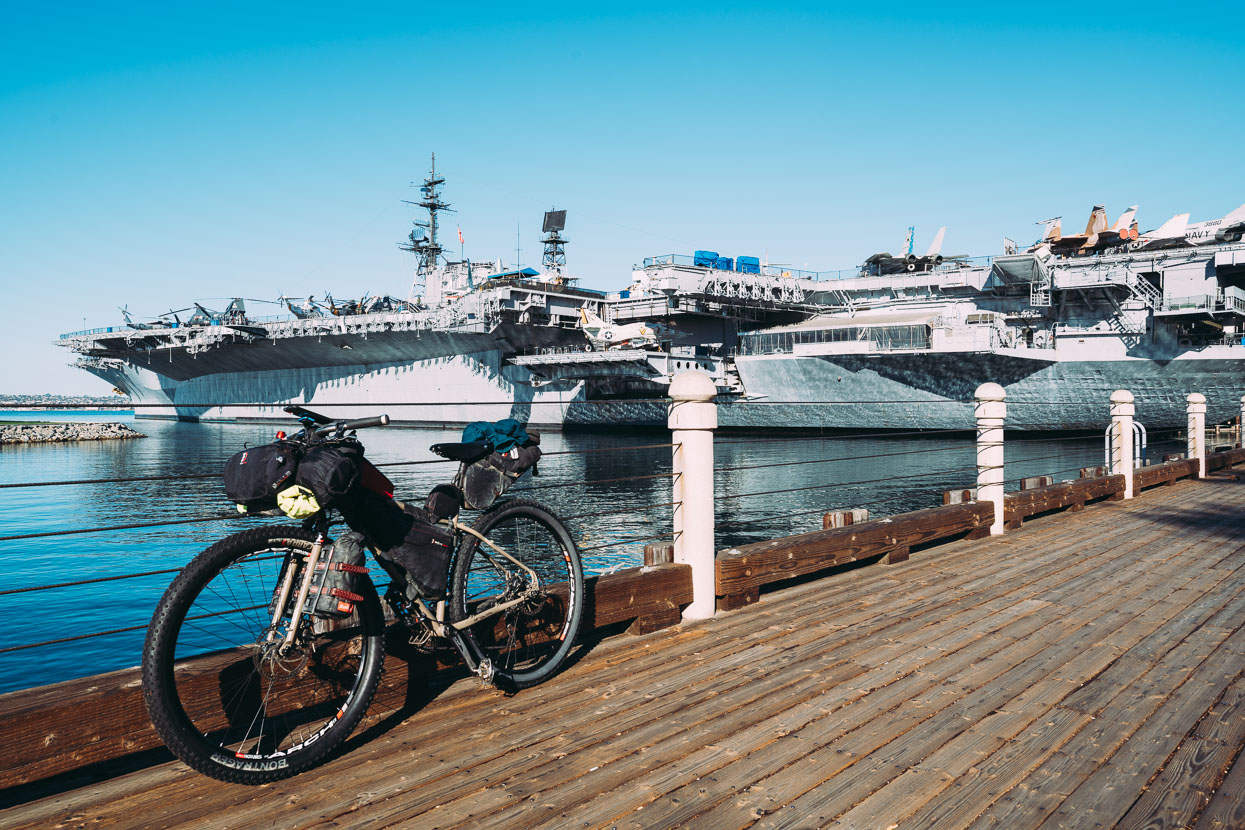
The Baja Divide route starts from San Diego airport and takes a water-front course as it departs the big city. We spent nine days in San Diego, taking a break, catching up on the blog, and organising a package to send south to Mazatlan. We lightened up considerably for Baja, sending the stove, cooking gear, laptop, iPad, tent inner, apres-ride wear and other odds and ends (including replacement tyres) on via courier to a Warm Showers host. To save shipping costs we did an afternoon trip over the border into Tijuana and sent the package from the Fed Ex office there, saving several hundred dollars. Thanks to Cale Wenthur and Chris Taylor and family!
Not far out of San Diego the route tackles the long, steep climb up Otay Mountain, By the time you reach the summit you’ve climbed 1000 metres from sea level. It’s close to the border too; you can look right into Mexico’s northern sierra from the summit. We saw several border patrol vehicles, including one that reported to us they’d picked up two ‘illegals’ near the summit while we were on our way down in the near dark.
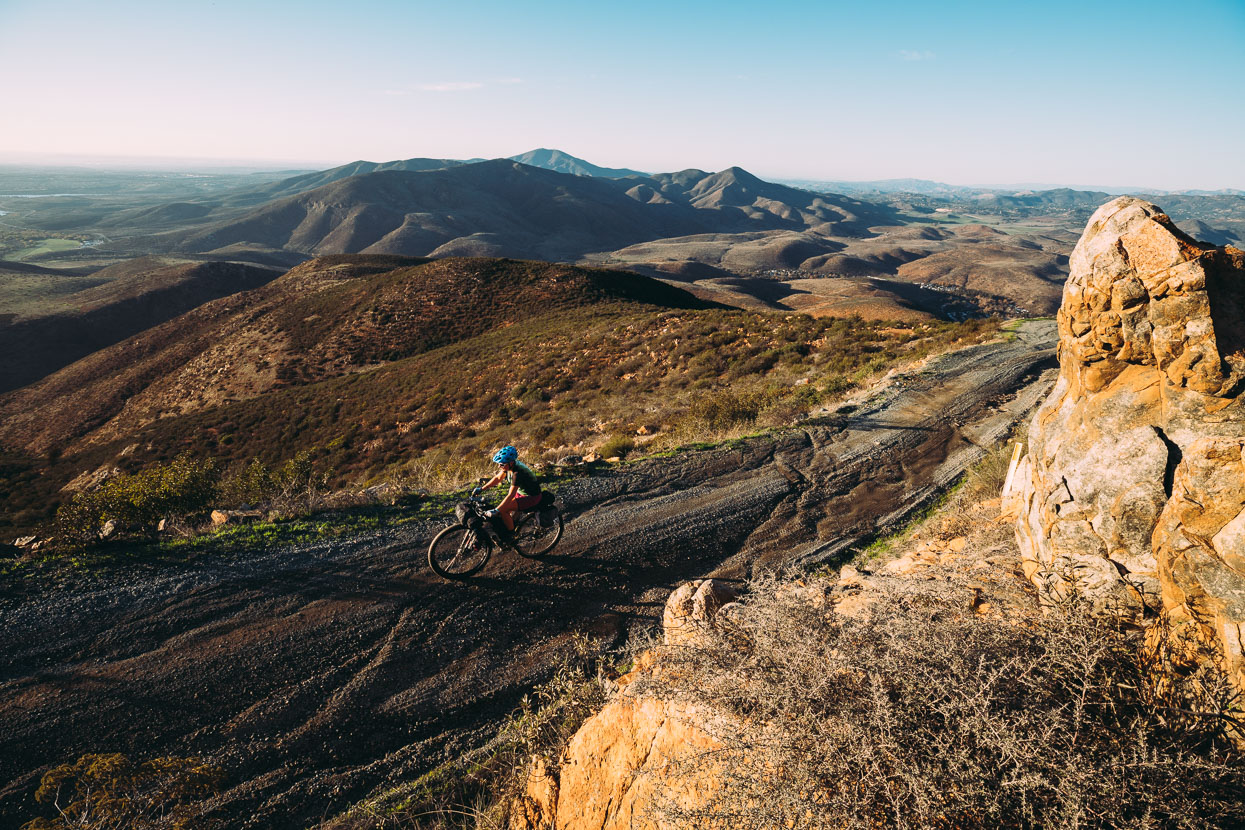
No two cultures differ so much along a border as do Mexico and the United States: the change upon crossing is immediate – everybody is speaking Spanish, the wealth differences are immediately obvious and certain chaos and vigour seem to set the atmosphere of this place, by far the most pleasant border town we have crossed at.
It was friendly too. The bike shop refused to charge us for SPD cleats (and gave us some team socks). Delicious fish tacos for a couple of bucks sealed the deal: we were now in a new country.
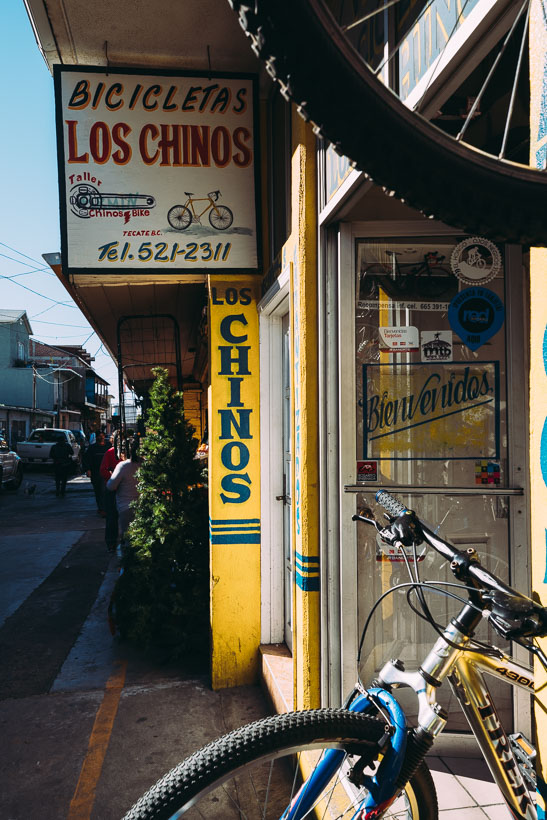
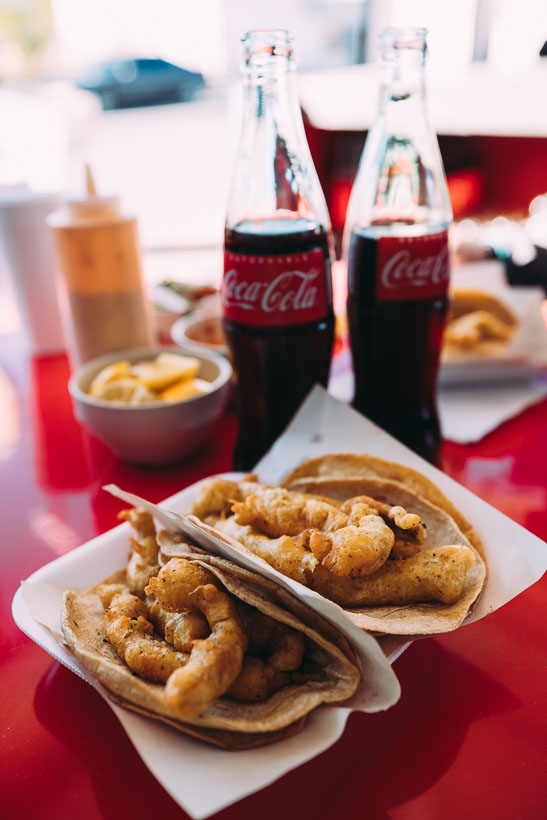
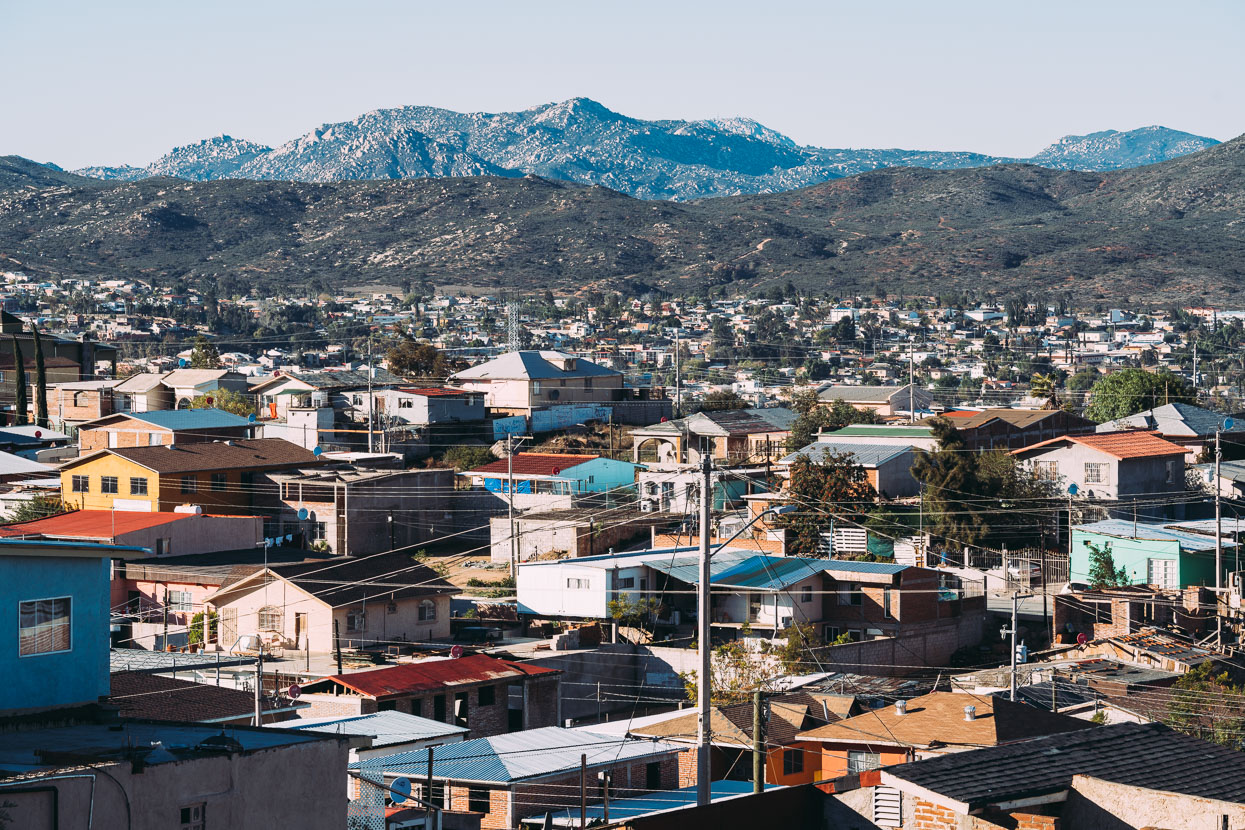
Looking back over Tecate towards the border as we climb out of town.
We camped at Cañon Manteca, just out of Tecate, with another Baja rider, Low – who rode at a slower pace so we sadly lost her company the next morning. Cold wind gusted through the valley all night and we slept in all our clothes in our lightweight summer bags. Come morning the puddles were all thickly frozen so we stuck to our plan to put in a long day to get the highest country of the Northern Sierra behind us so we might sleep warmer at night. Even day time temps were cold still and we ended up wearing long johns all day.
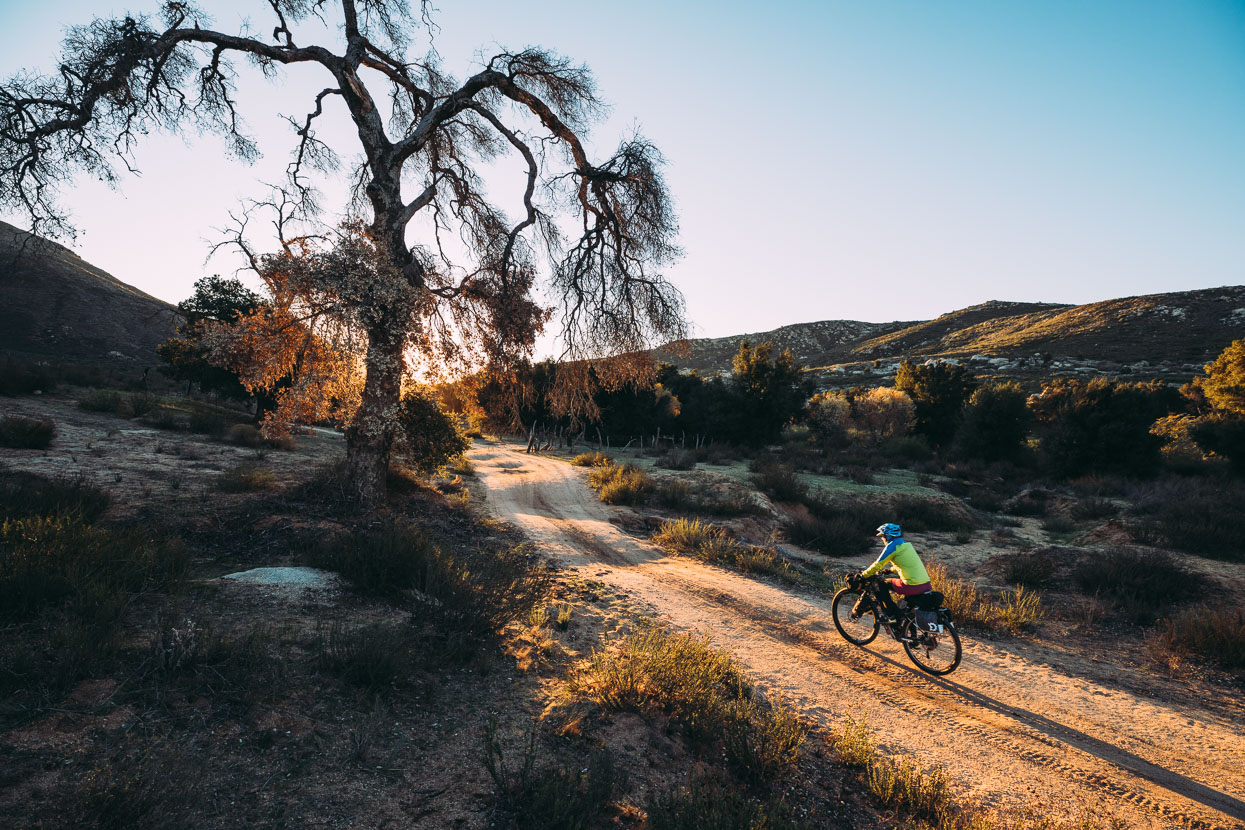
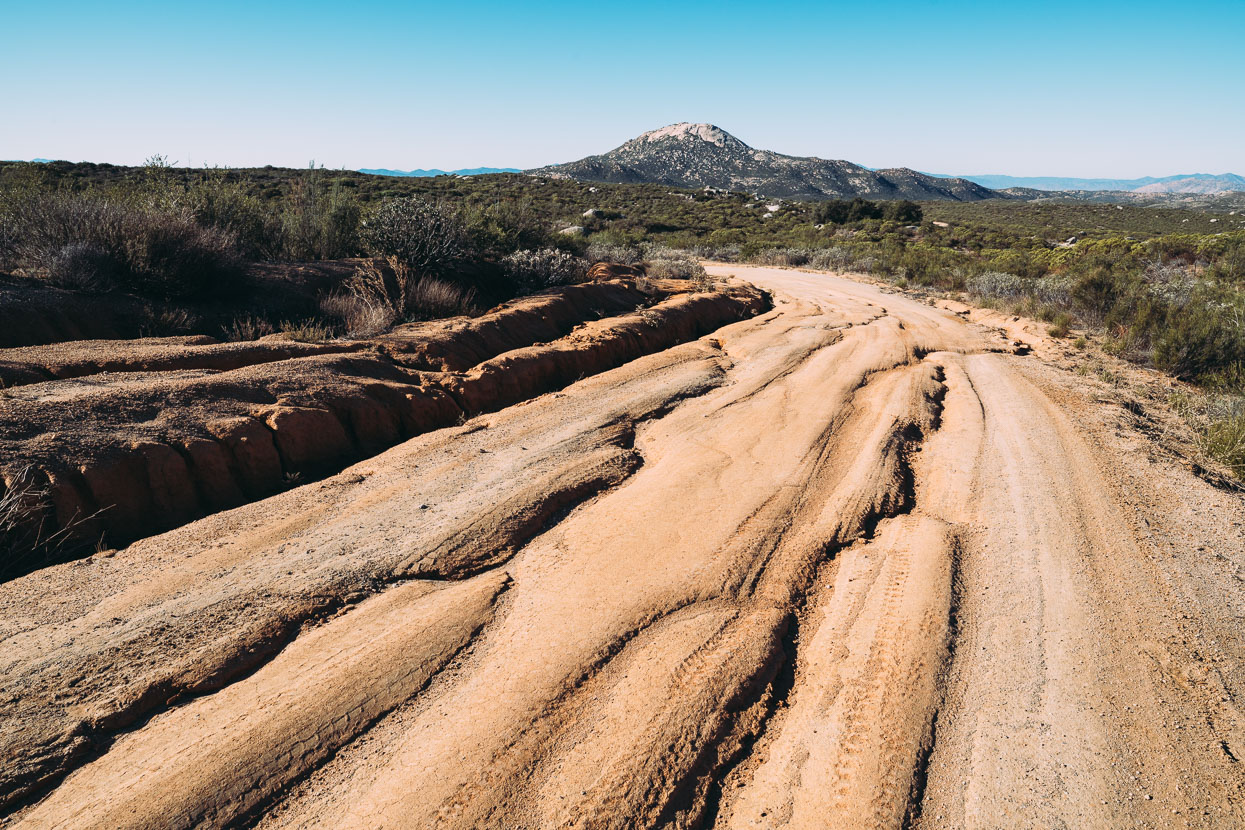
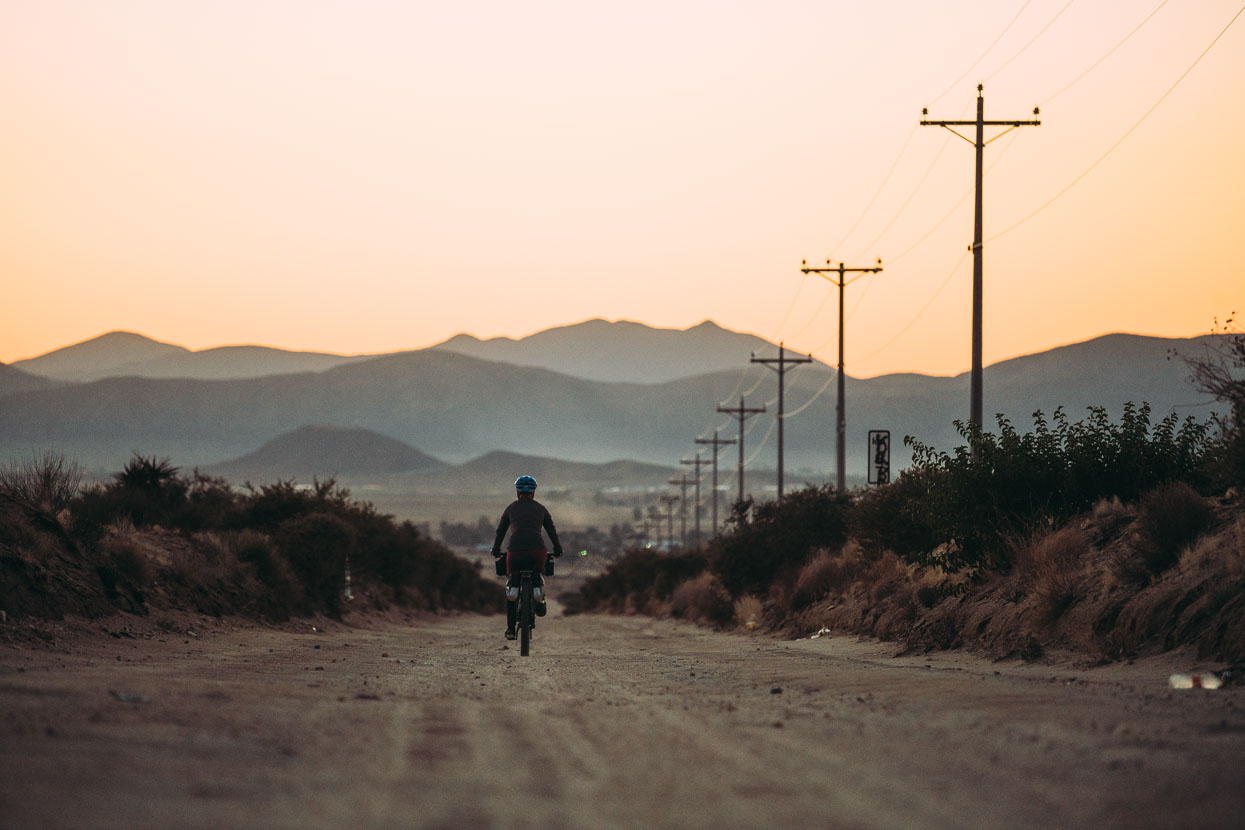
Descending into Ejido Sierra Juarez after a long hilly day from Cañon Manteca.
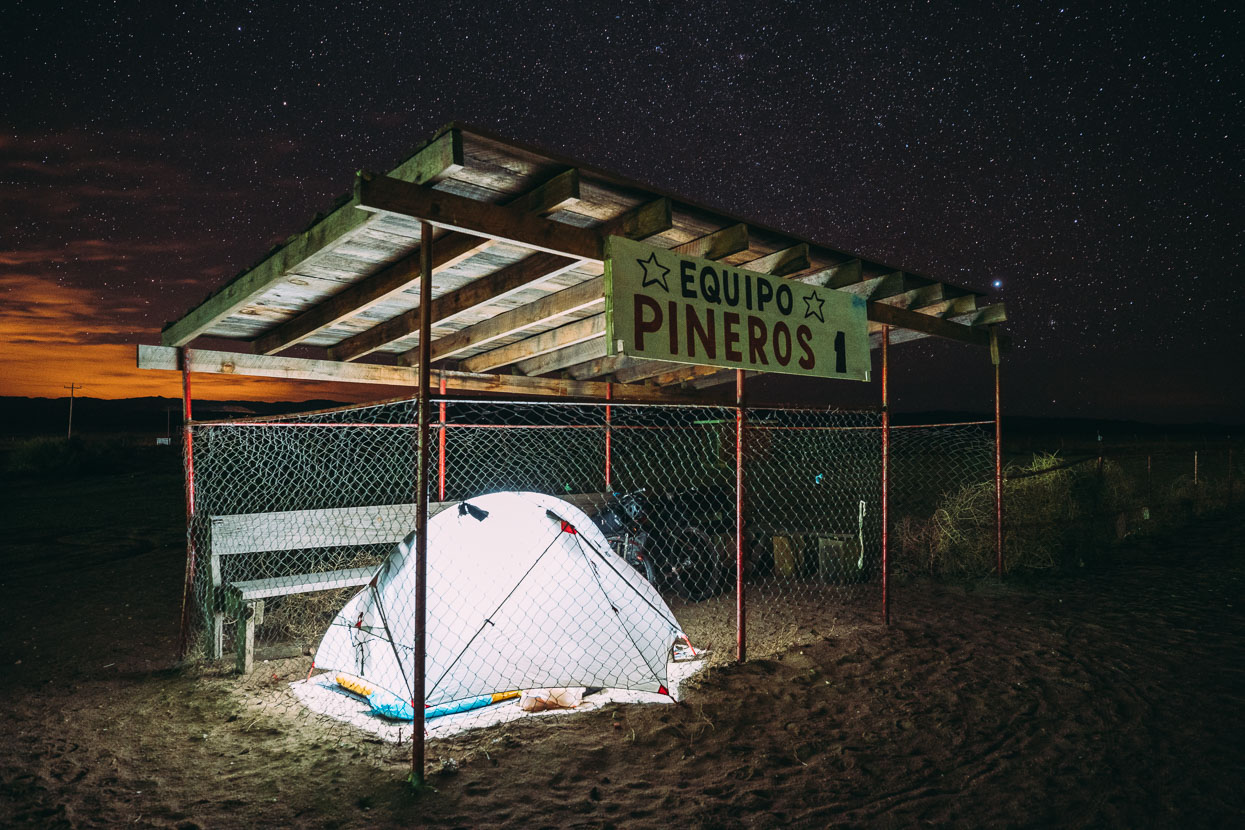
The trail notes suggest the baseball pitch as a possible campsite on the edge of the village. Suited us just fine. While we packed at day break several local women walked laps around the field for their morning exercise, commenting ‘Muy frio!’.
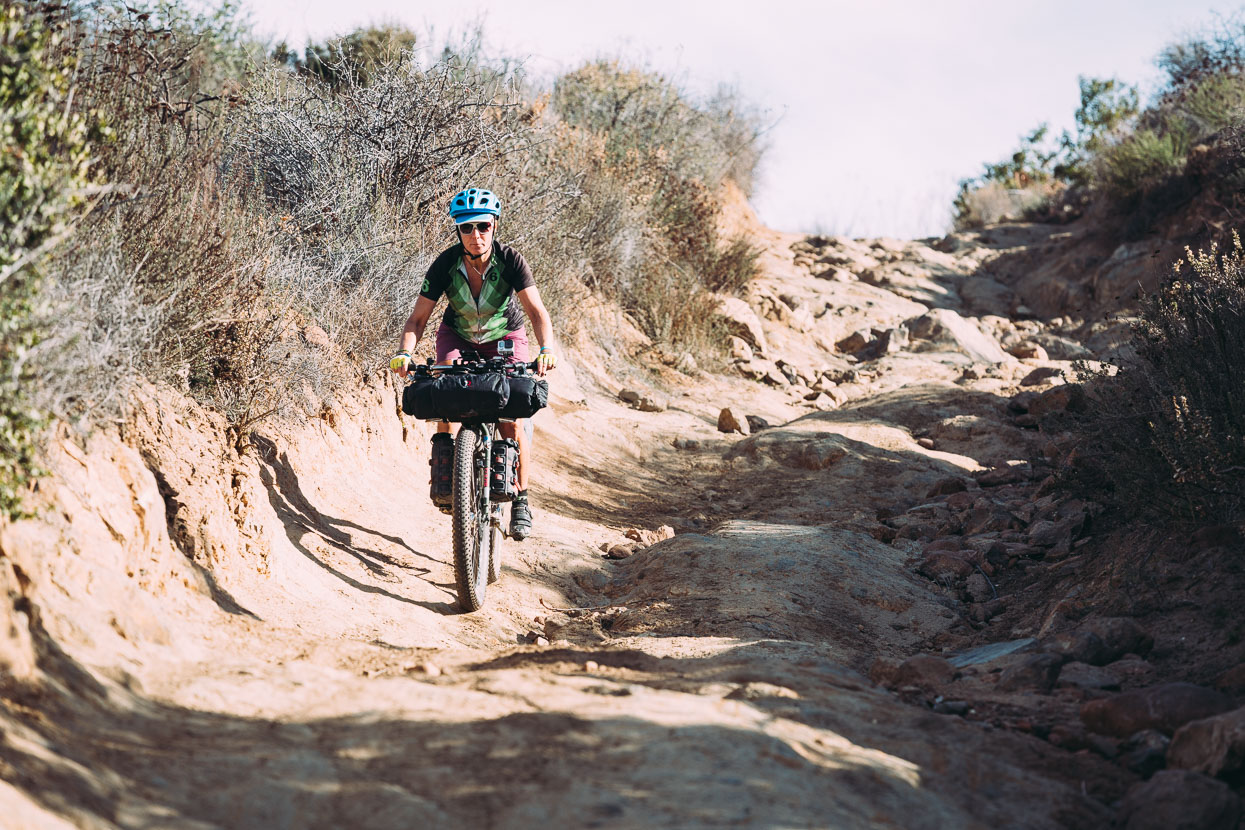
The ride onto Uruapan was one of our favourites of the whole Baja; while the terrain and landscape gets far more interesting in other sections, the downhill to Uruapan is a classic.
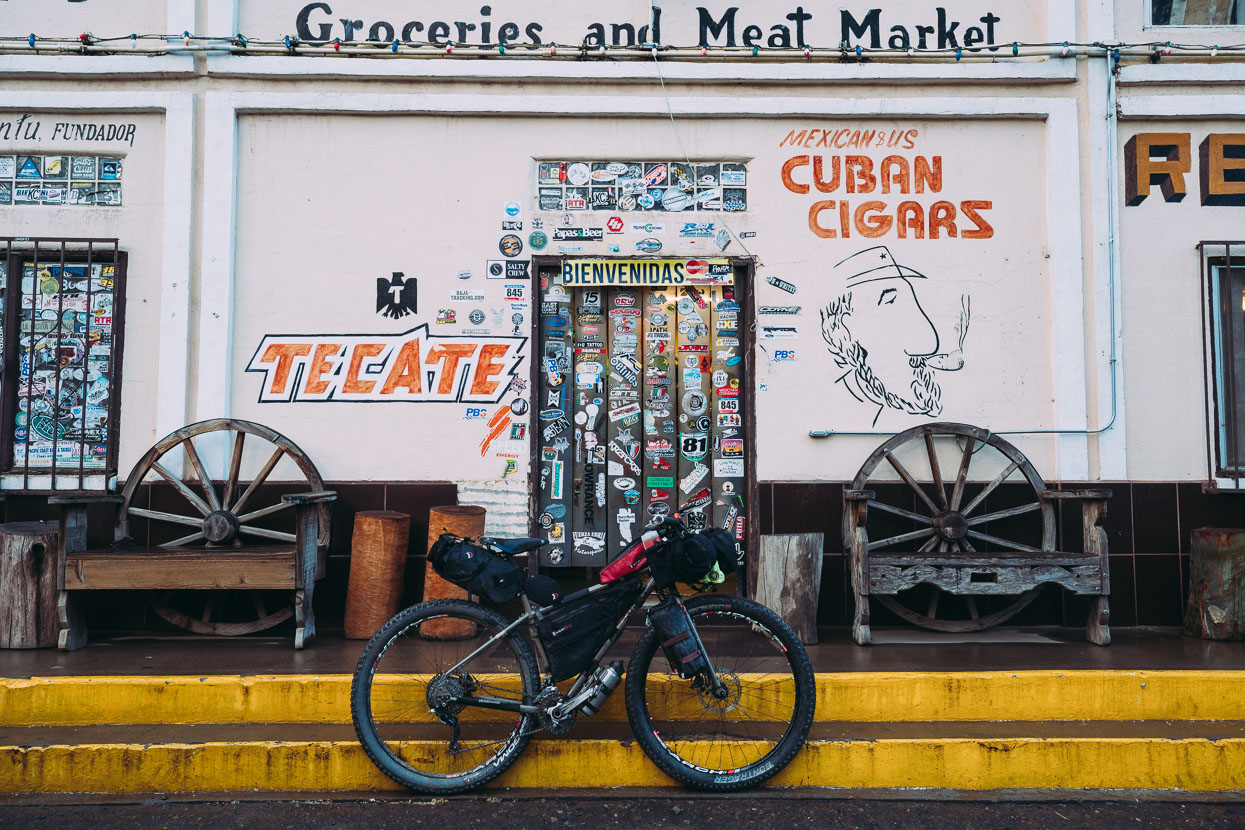
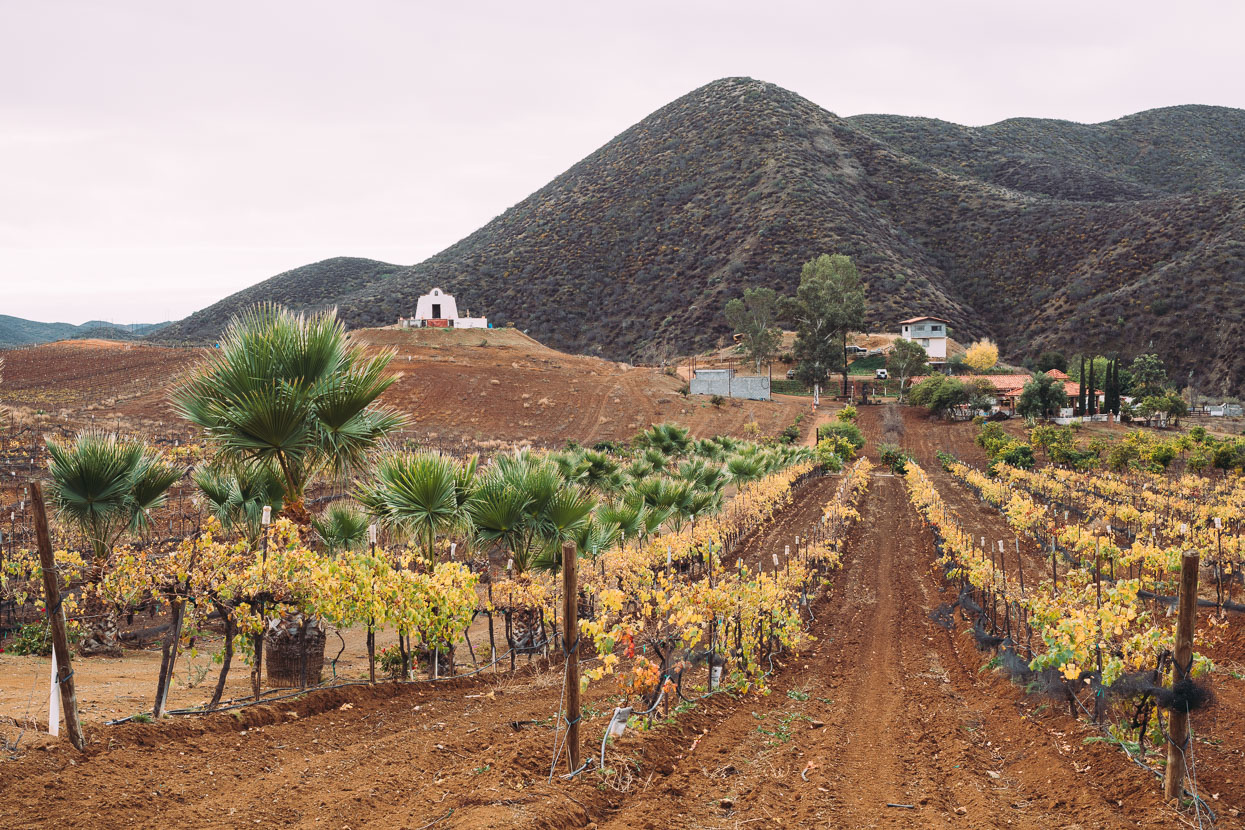
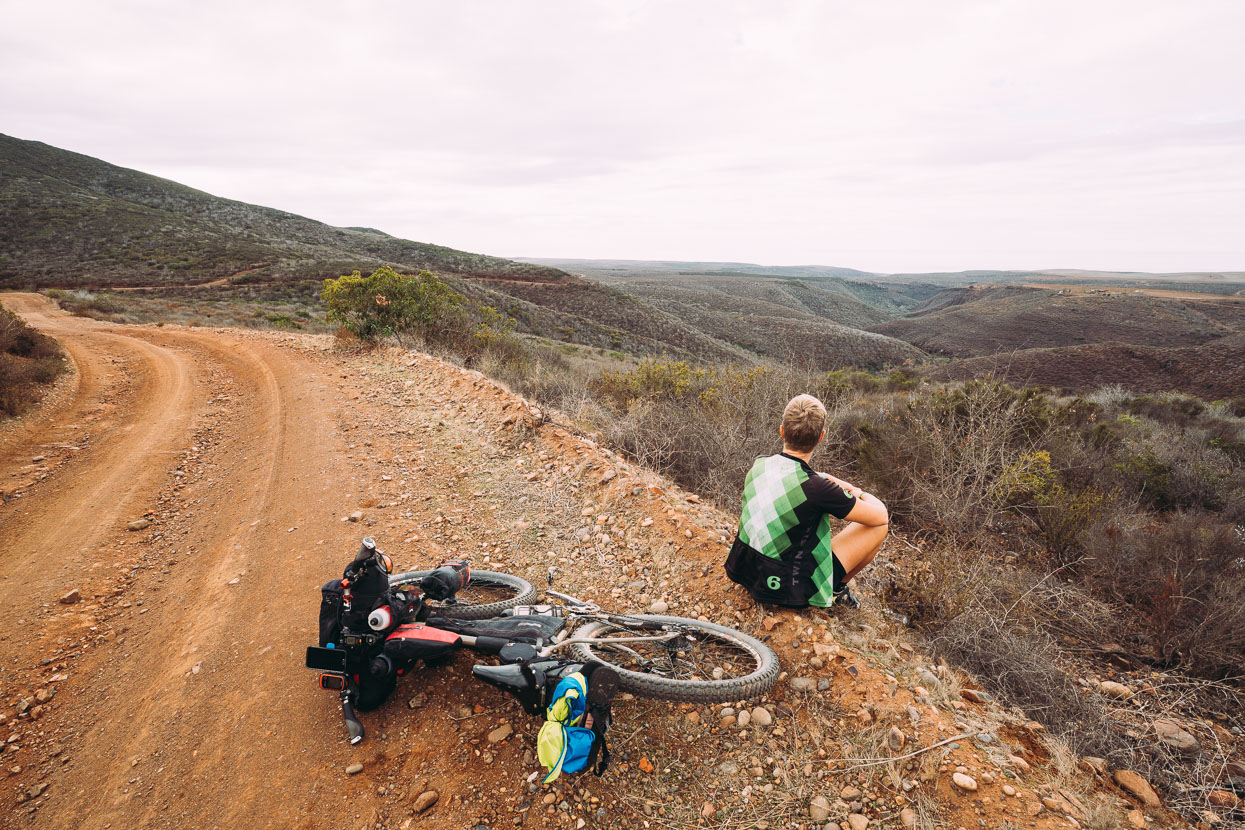
Looking out over the Costa Pacifico for the first time. We were hit with a welcome coastal humidity and much warmer weather after a cold first three days.
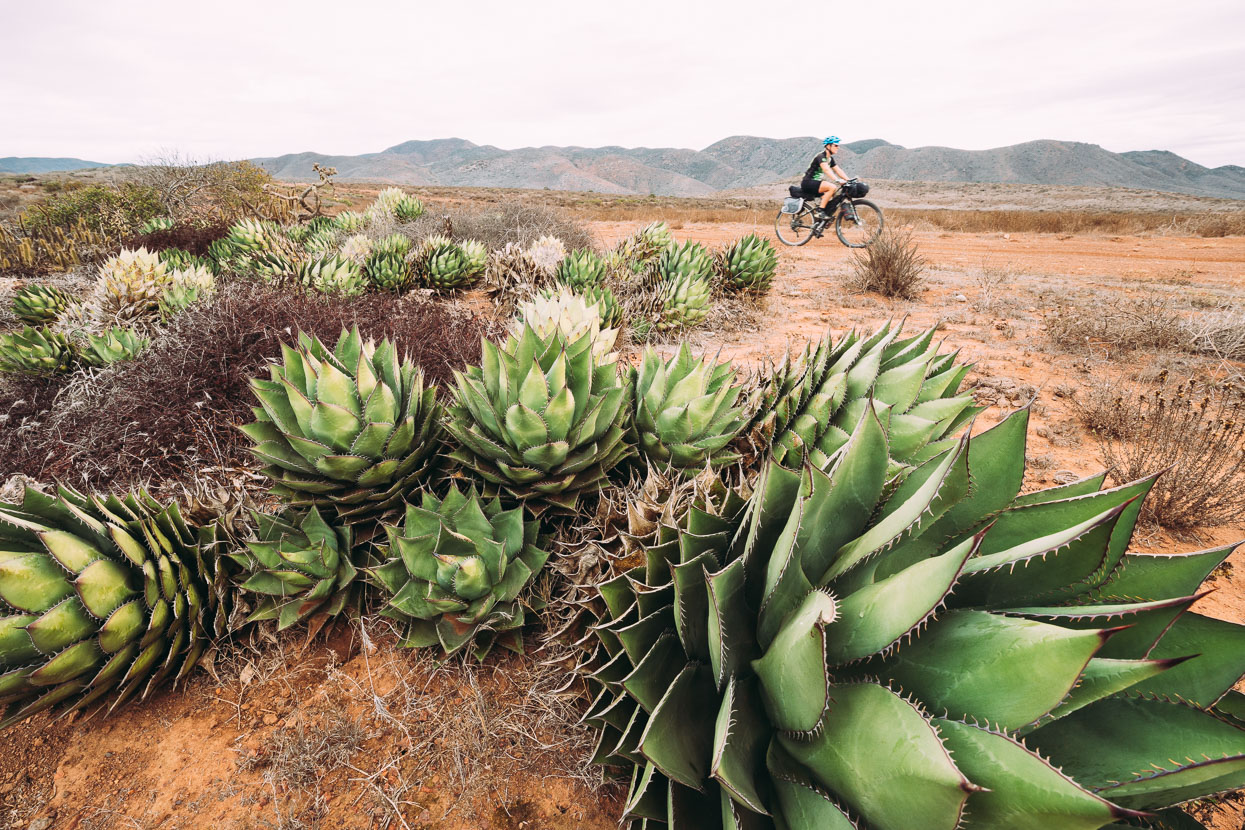
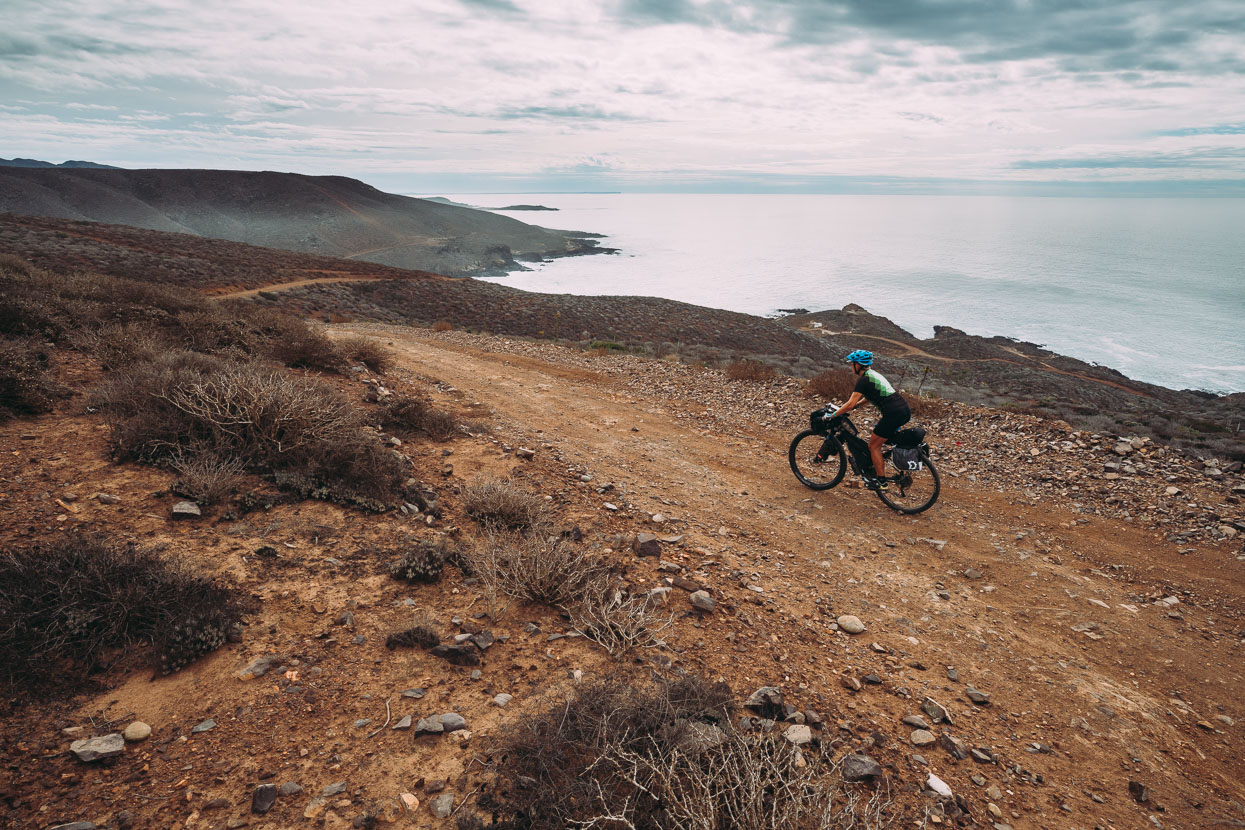
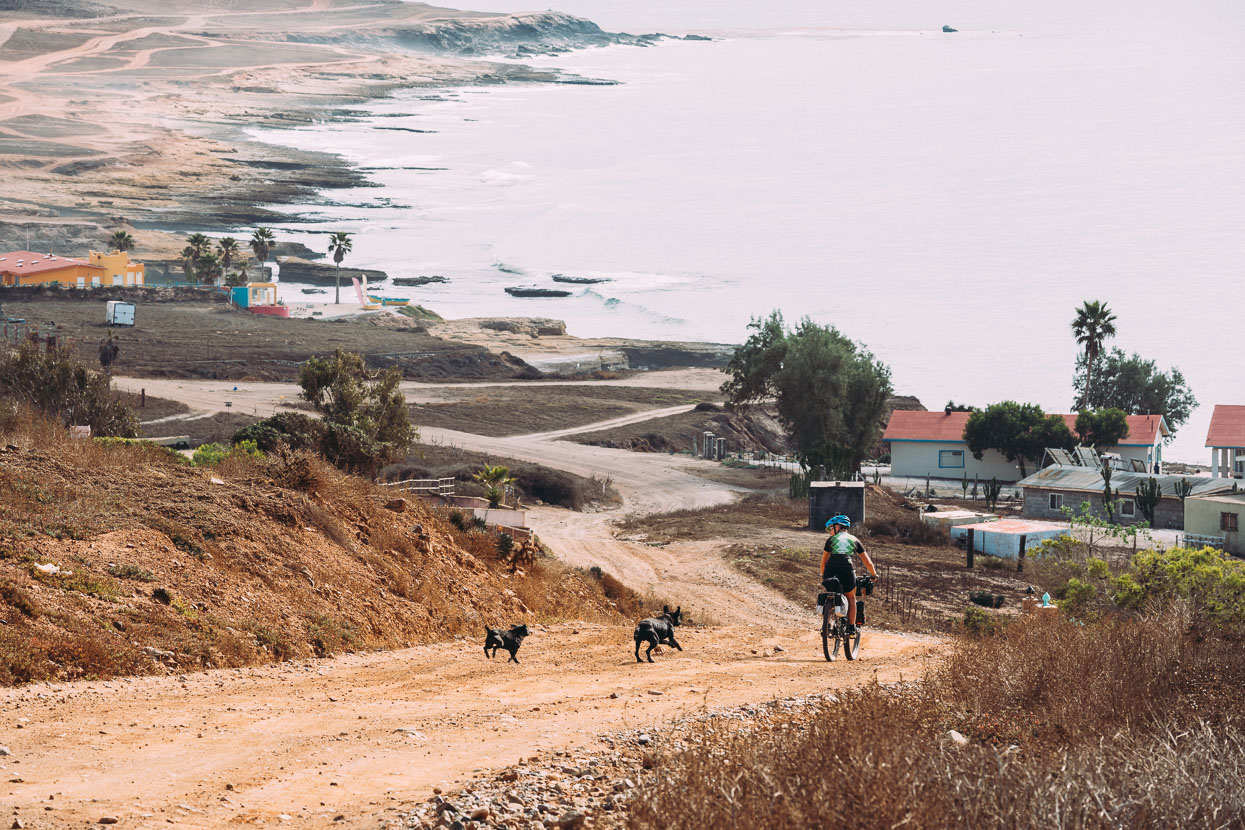
Rain was in the forecast, so we headed for Ejido Erendira to sit out the wet day and rest the legs.
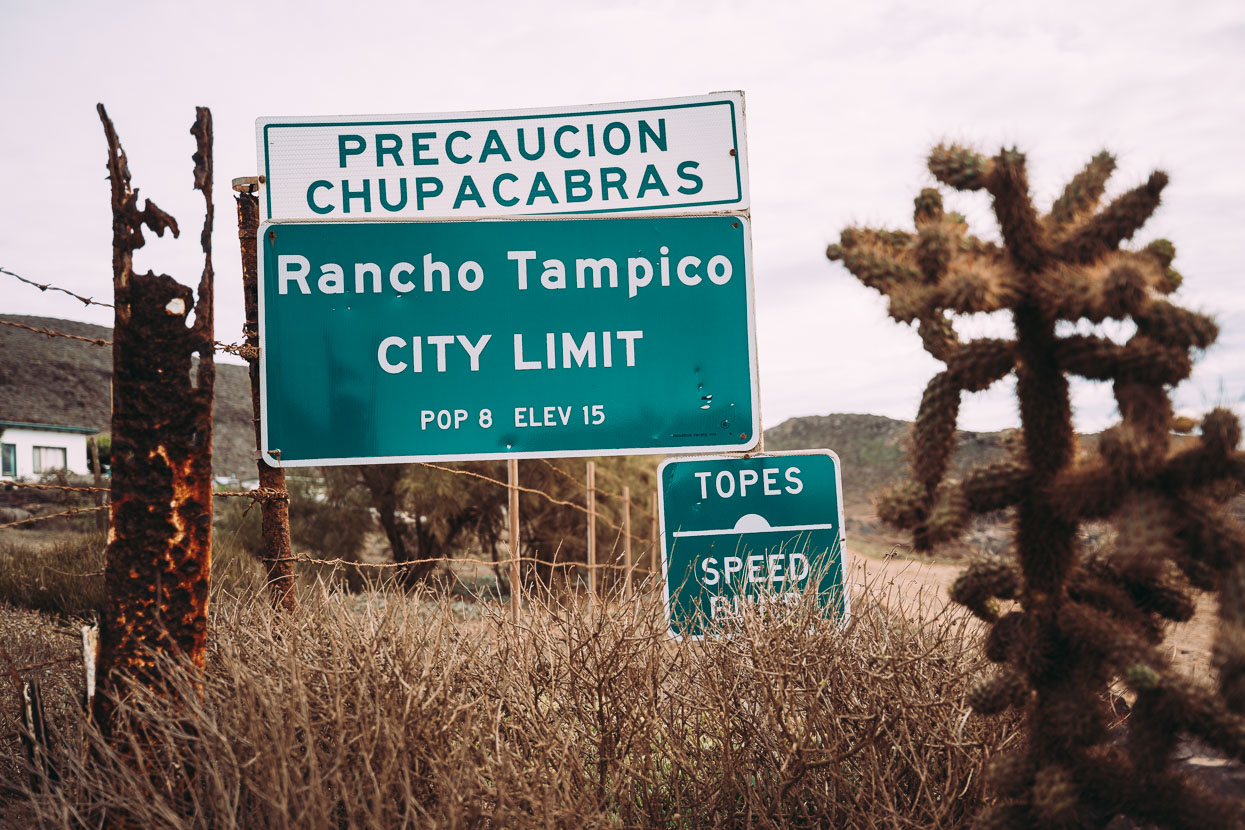
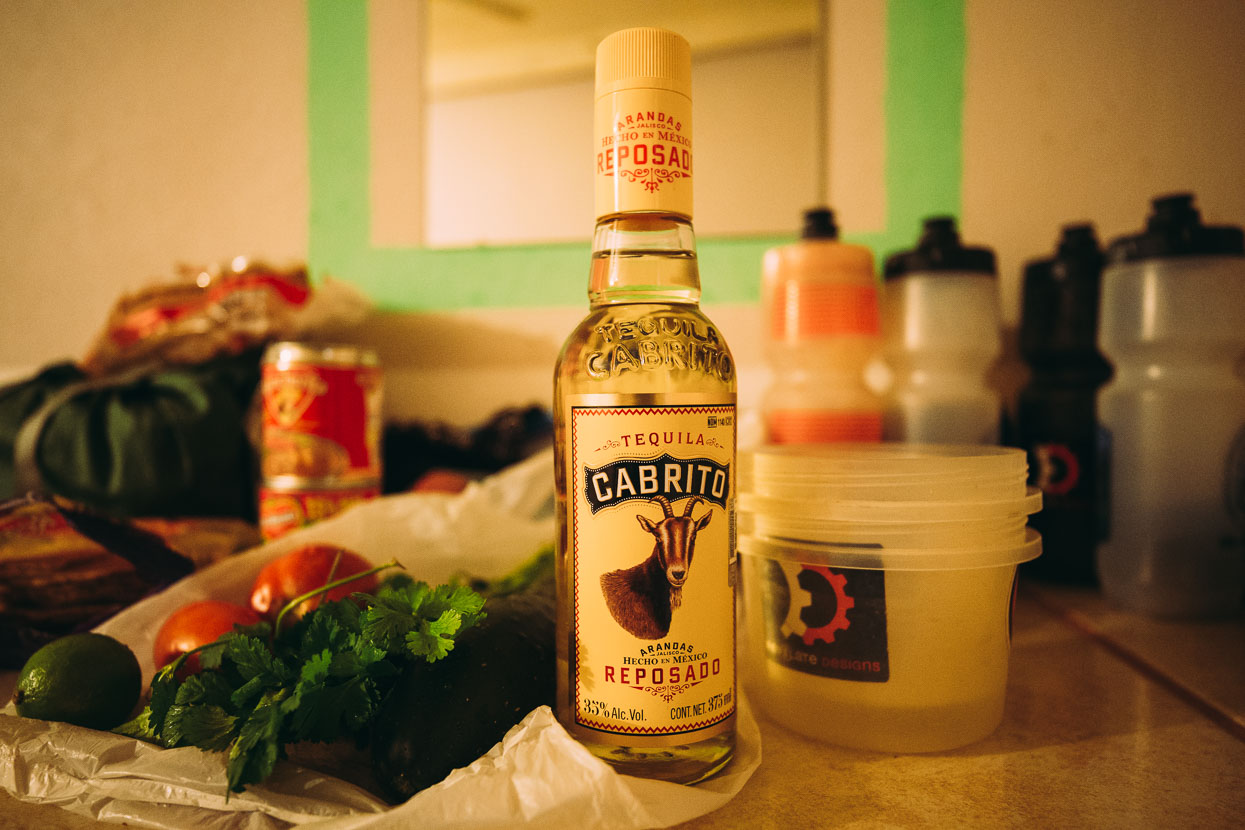
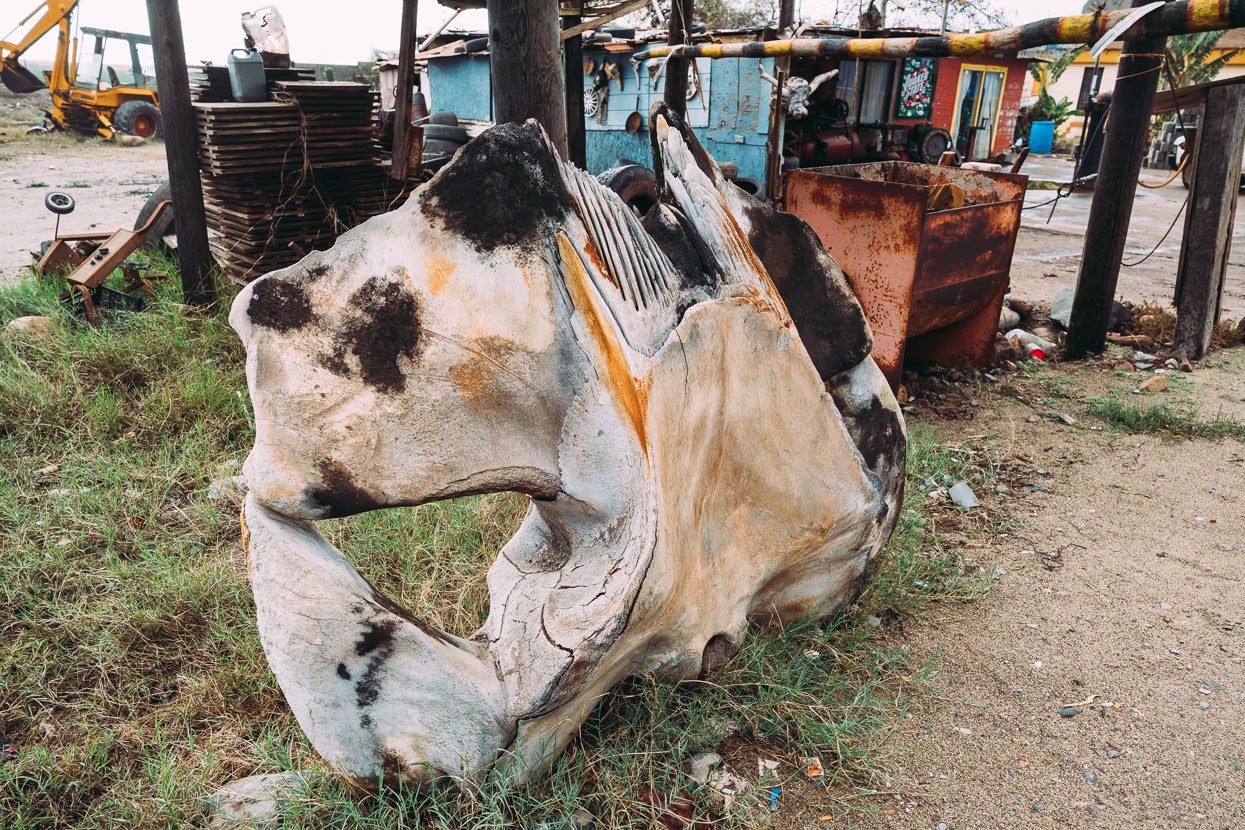
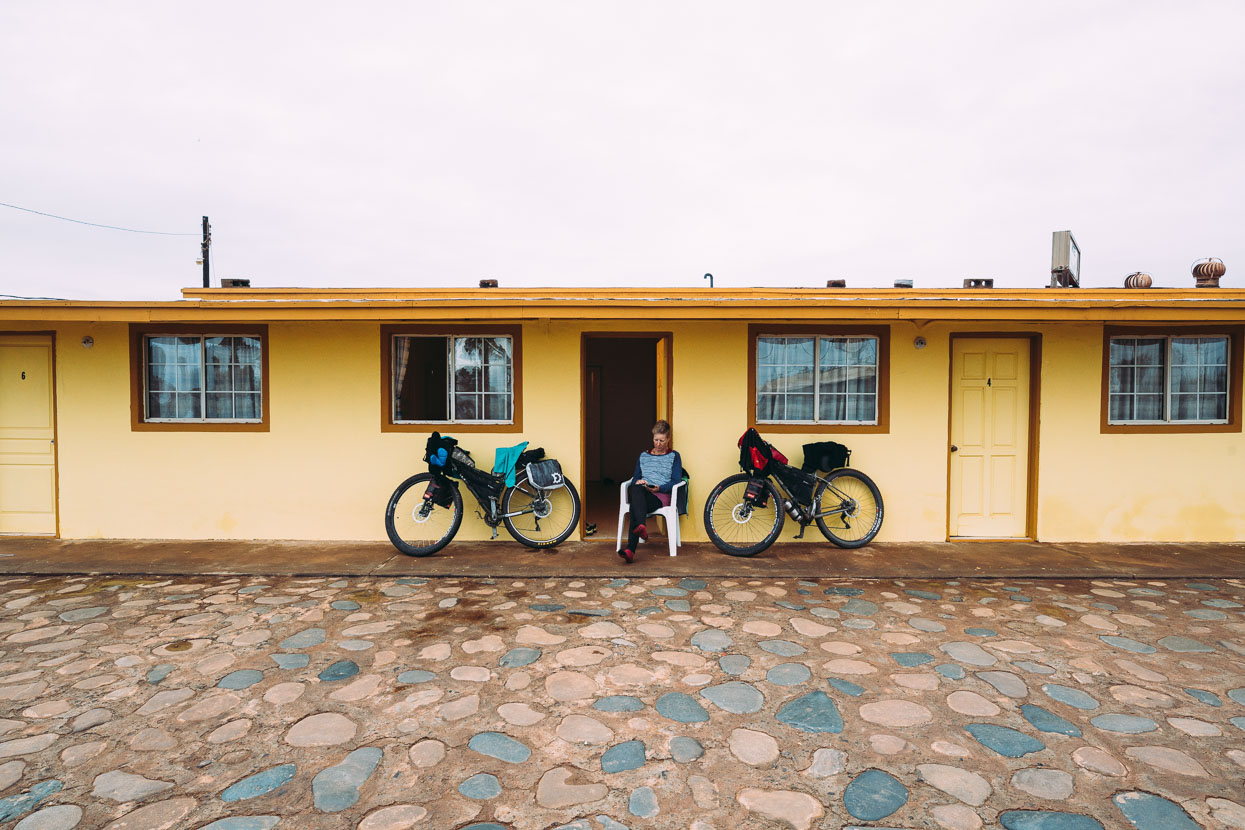
A basic room for a couple of nights while very heavy rain came in periodically from the Pacific.
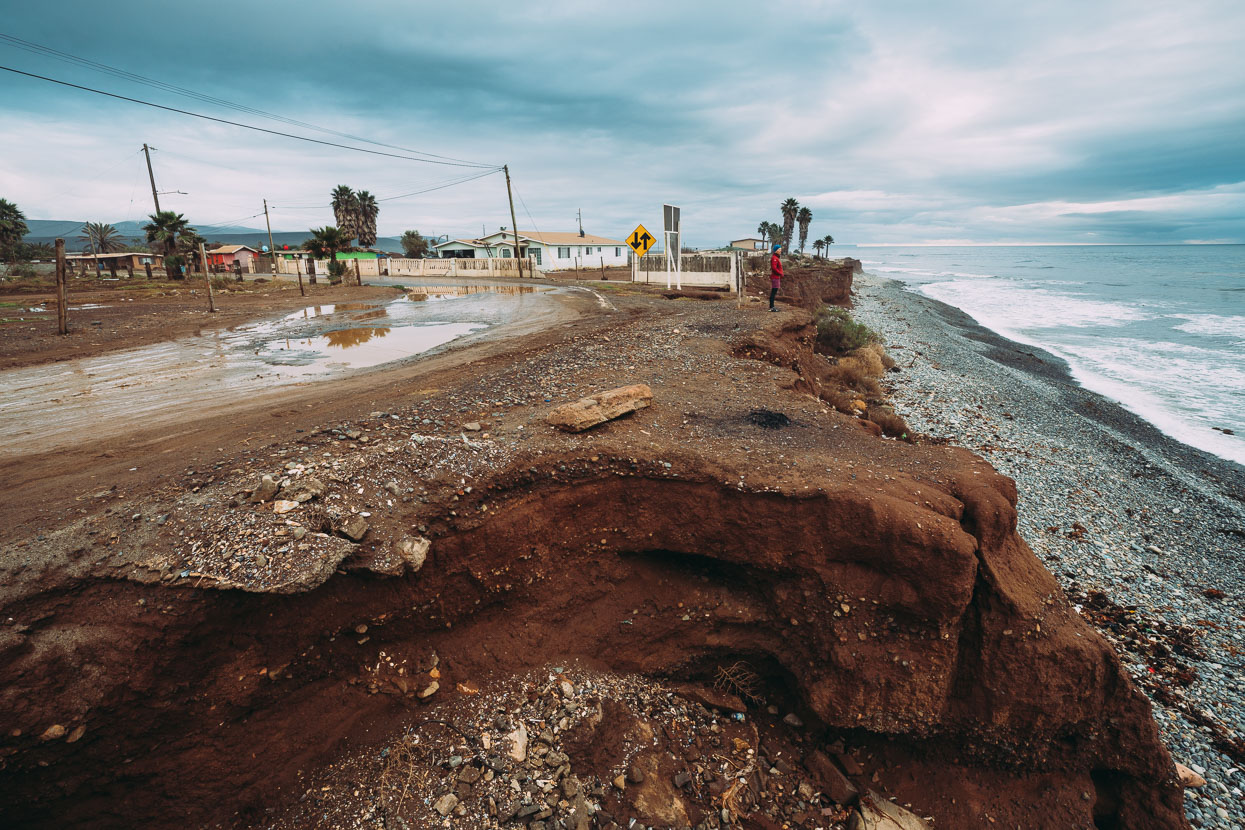
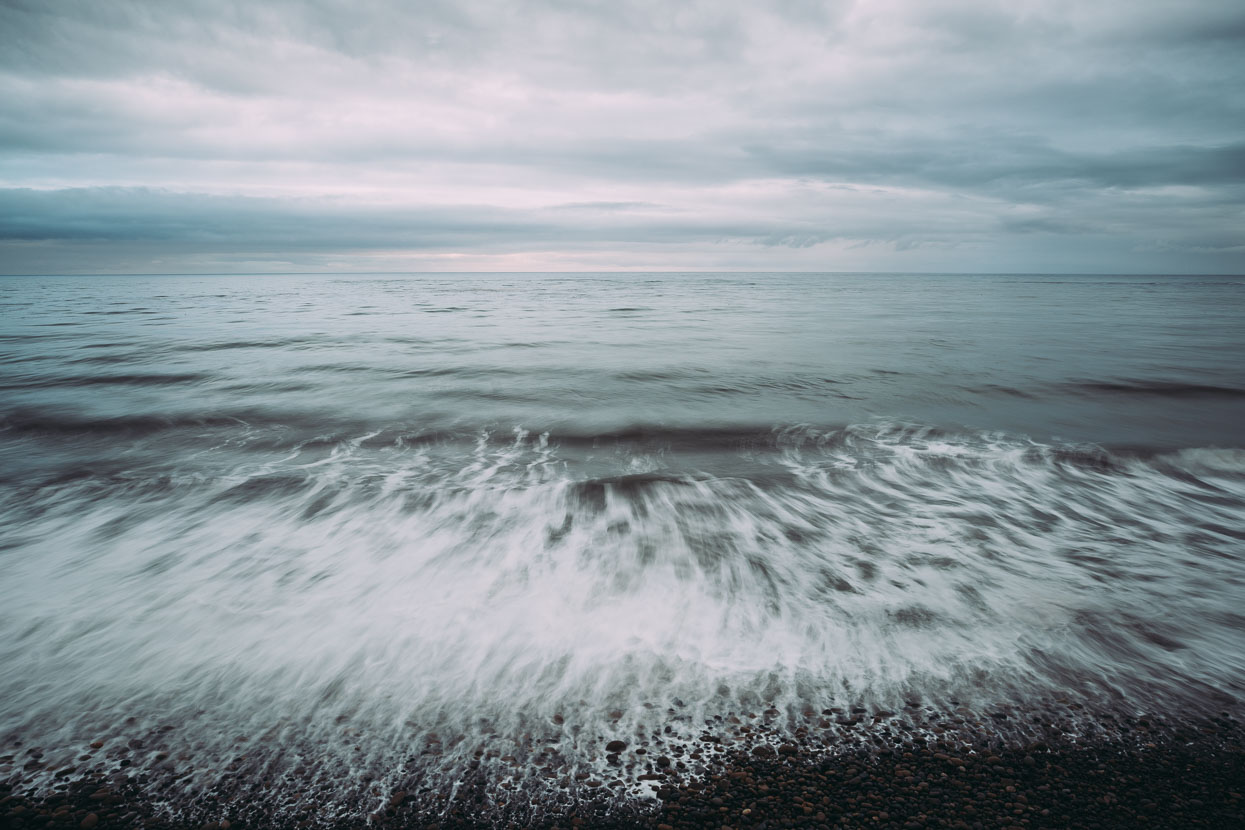
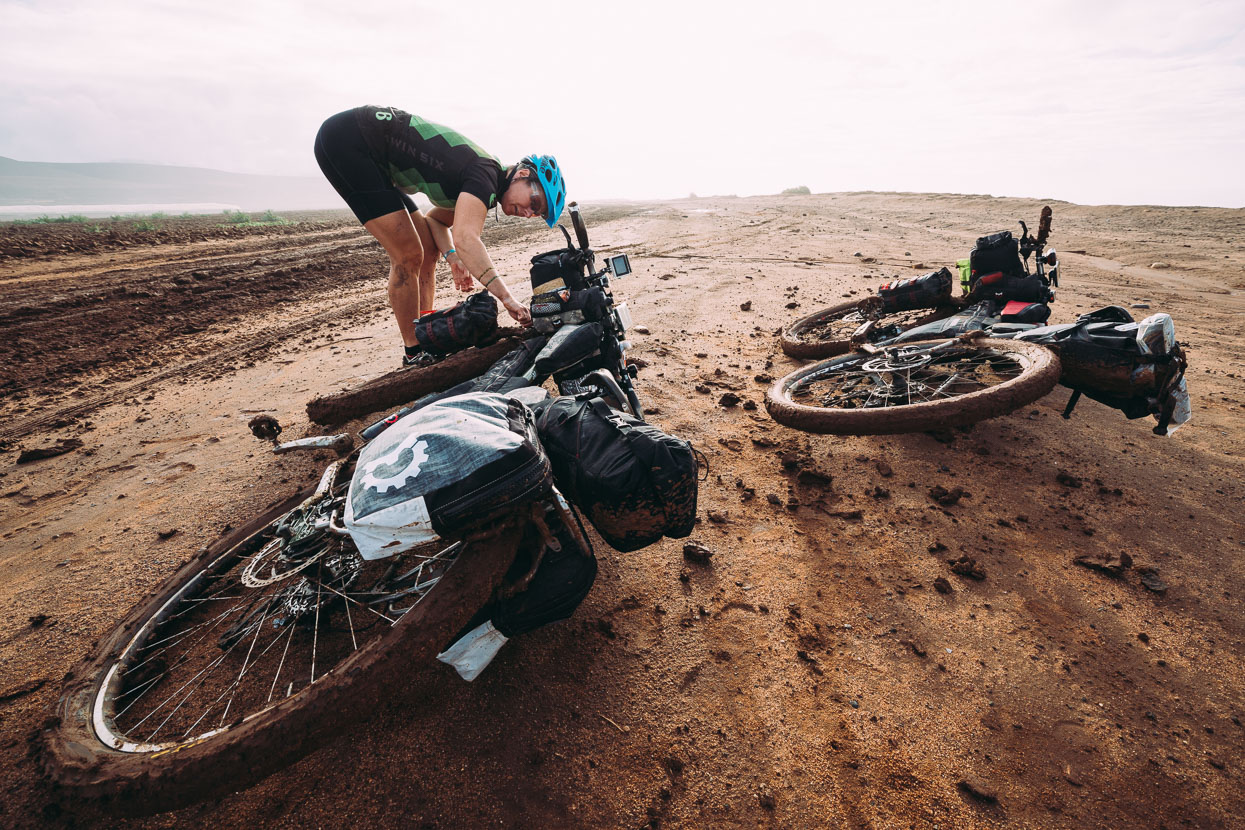
Leaving Erendira we had our first taste of northern Baja mud. An incredibly sticky concoction that basically shuts down your bike and all forward progress. We felt like flies on flypaper. After a taking over an hour to move just a couple of hundred metres we gave up and decided to take the highway to Colonet, a lengthy detour that skipped just a short section of Baja Divide.
Showery weather persisted in the afternoon and we debated whether or not to camp, in the end choosing a hotel room just south of town. Overnight it rained heavily again and the morning brought heavy showers. The next back country section through El Coyote was going to be impassable for a while so we took to the road again, riding onto Vincente Guerrero on Christmas Eve through flooded roads.
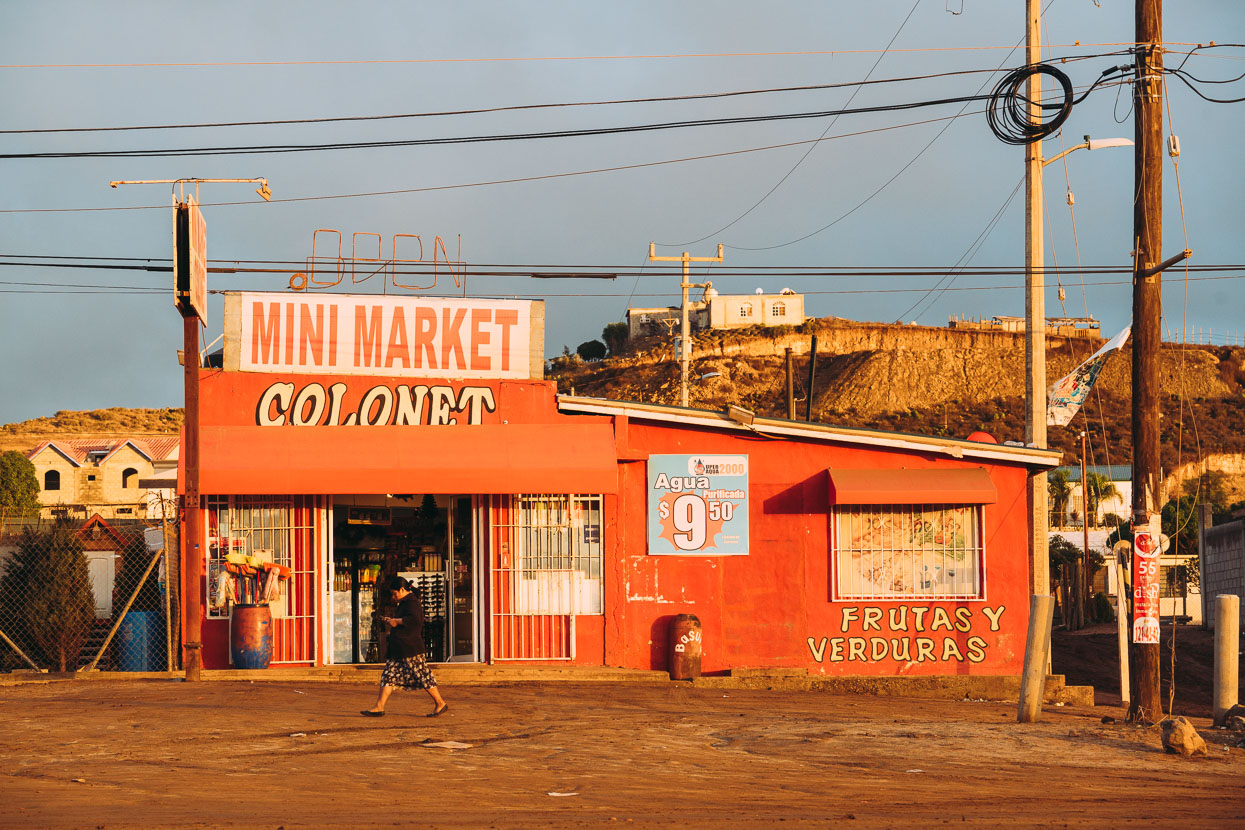
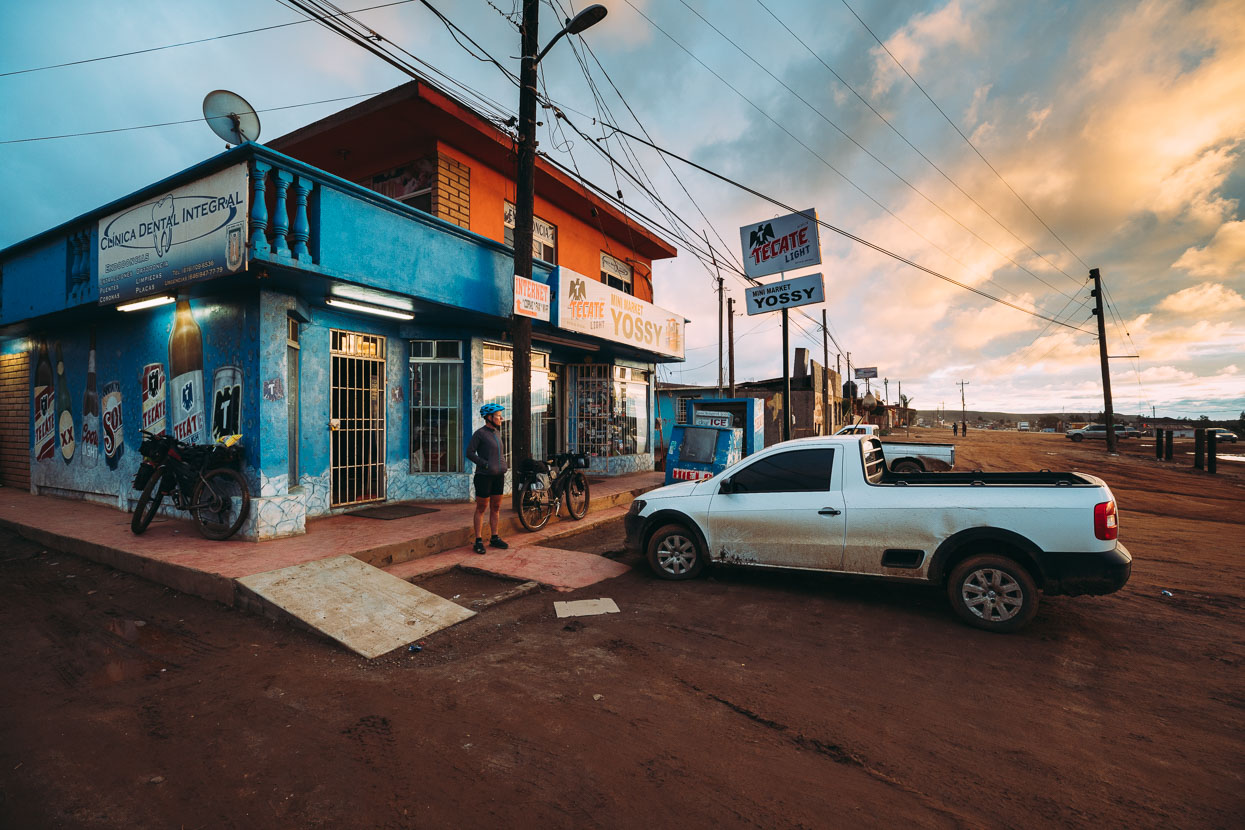
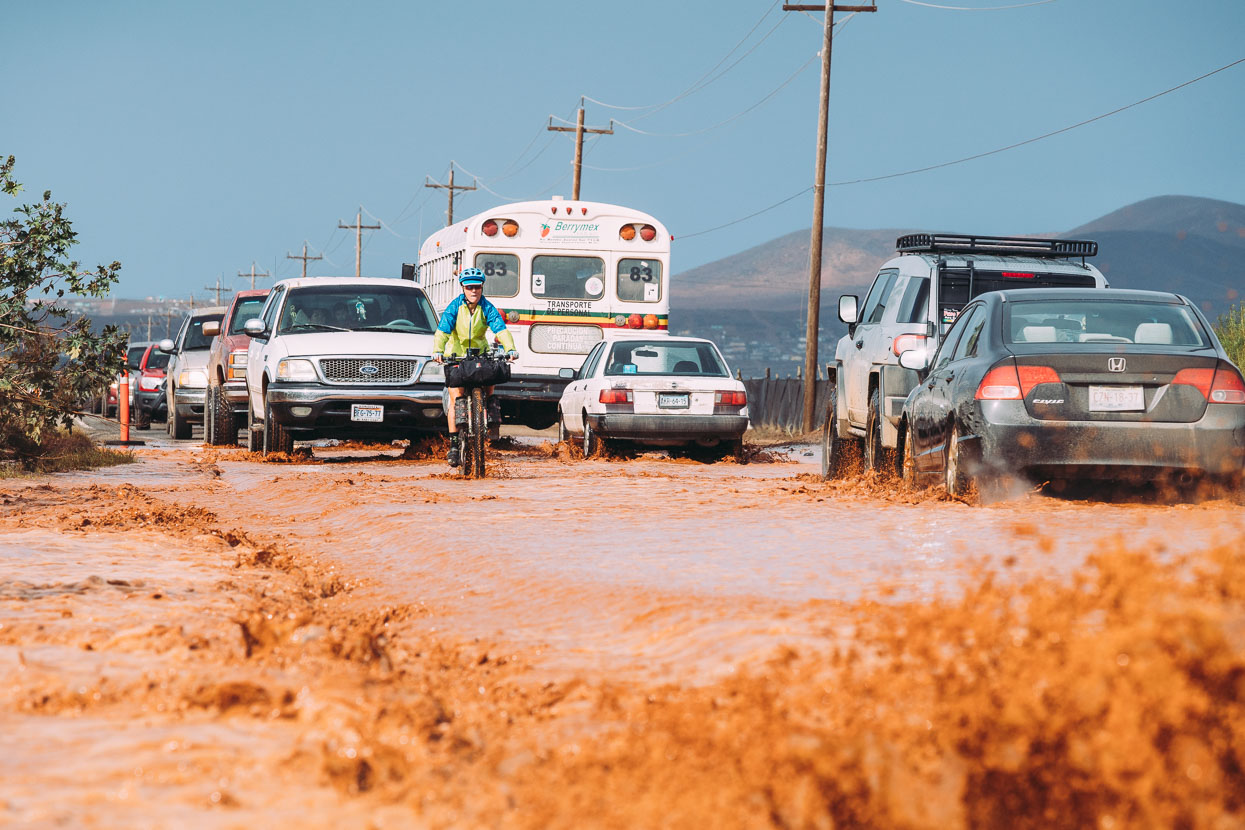
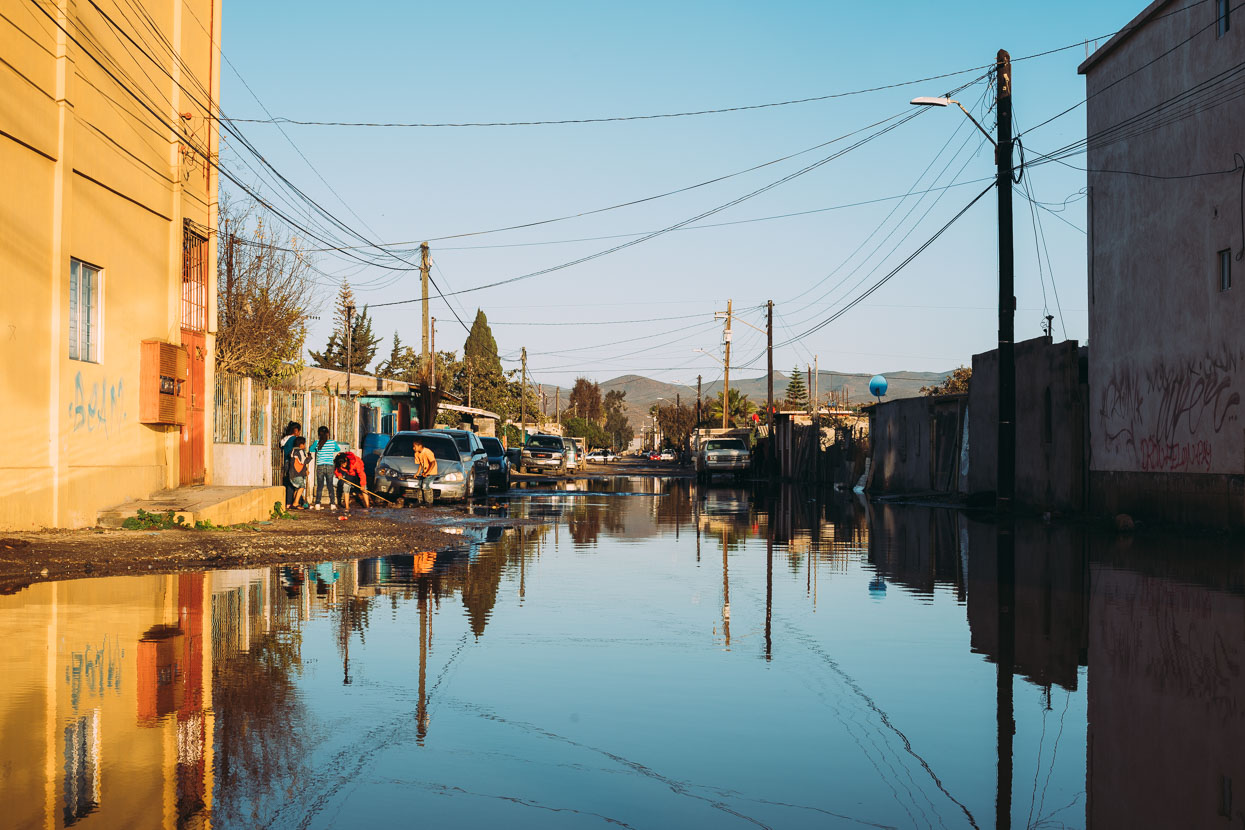
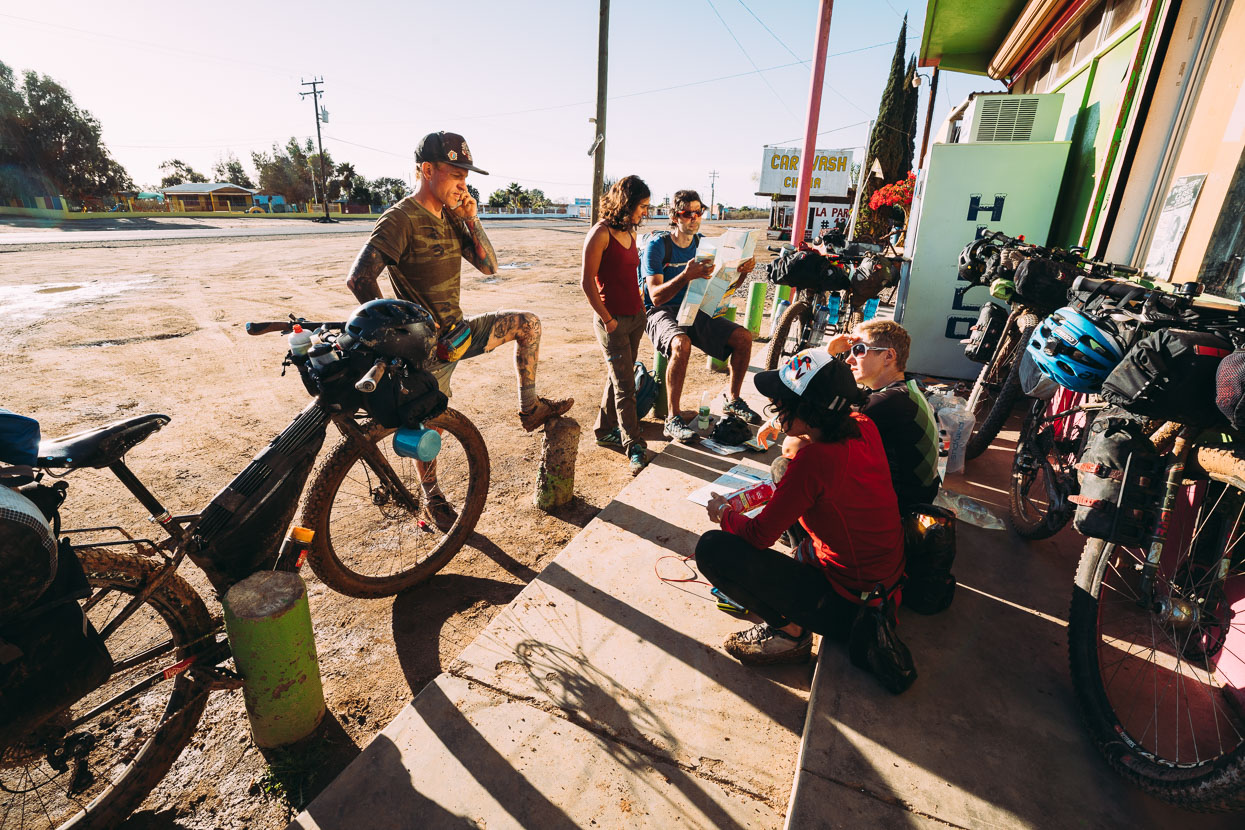
After Christmas in Vincente Guerrero we were sure the roads would be drying out so rode the next section of Baja Divide on salt flats down to Nueva Odisea. It was tacky in places but doable. We were happy to be back on the route. We’d just stocked up our water to capacity for the next two-day back country section at Nueva Odisea when a foursome of Baja Divide riders appeared outside the shop, all returned from an unsuccessful attempt at the next dirt section and with a mangled derailleur – a victim of a mud infested drive train.
With that section not looking ridable for at least a couple more days, we reluctantly decided to skip that too. We slept at a basic coastal campground nearby and the following morning took to the road for 118 kilometres down to Rancho El Descanso.
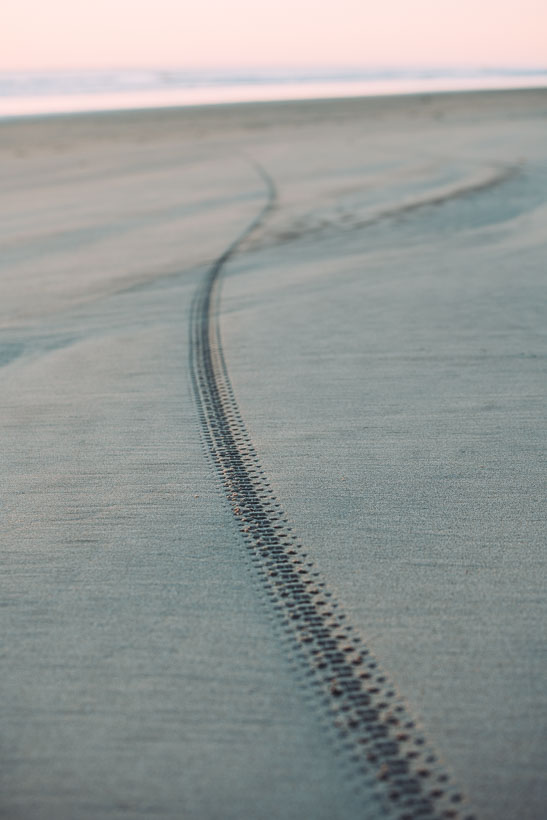
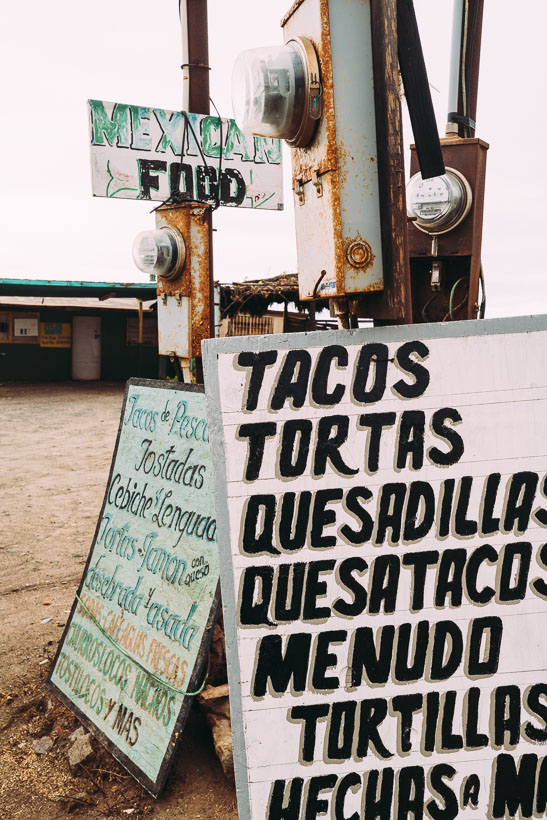
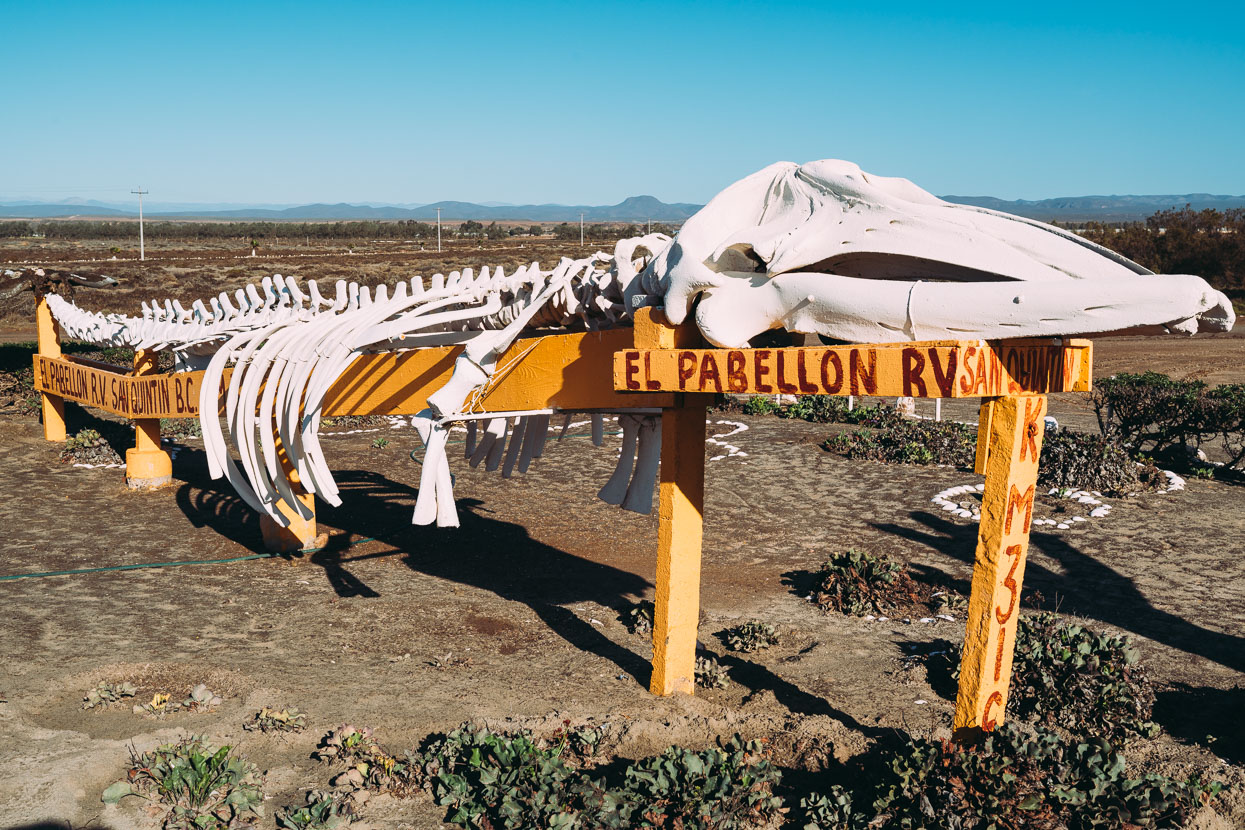
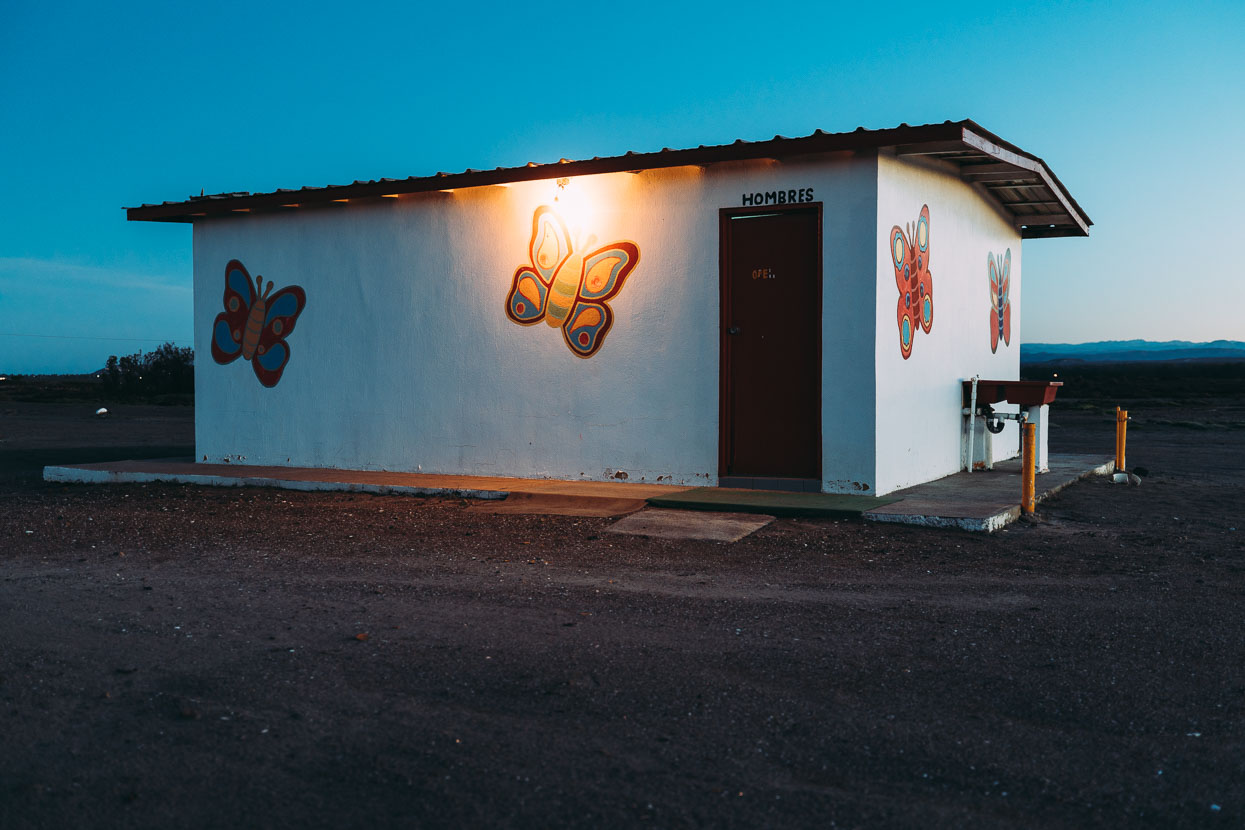
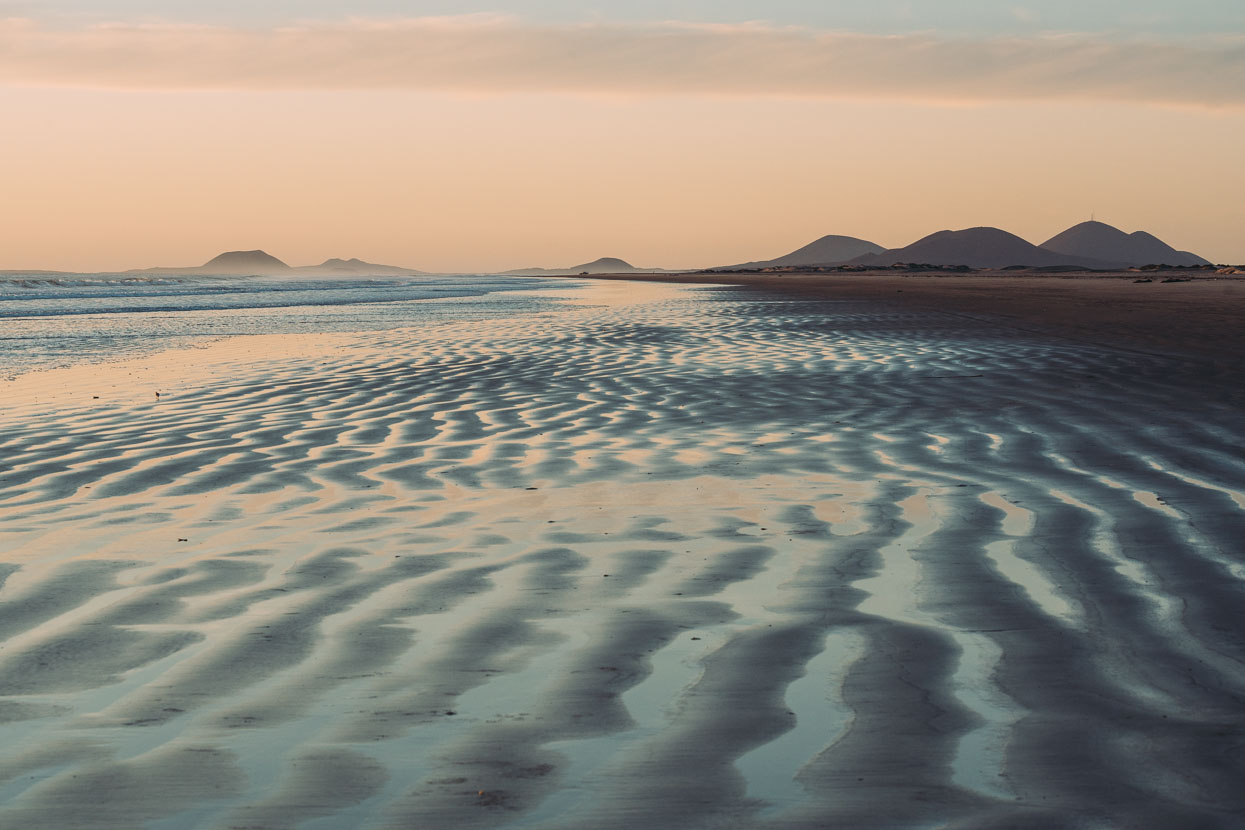
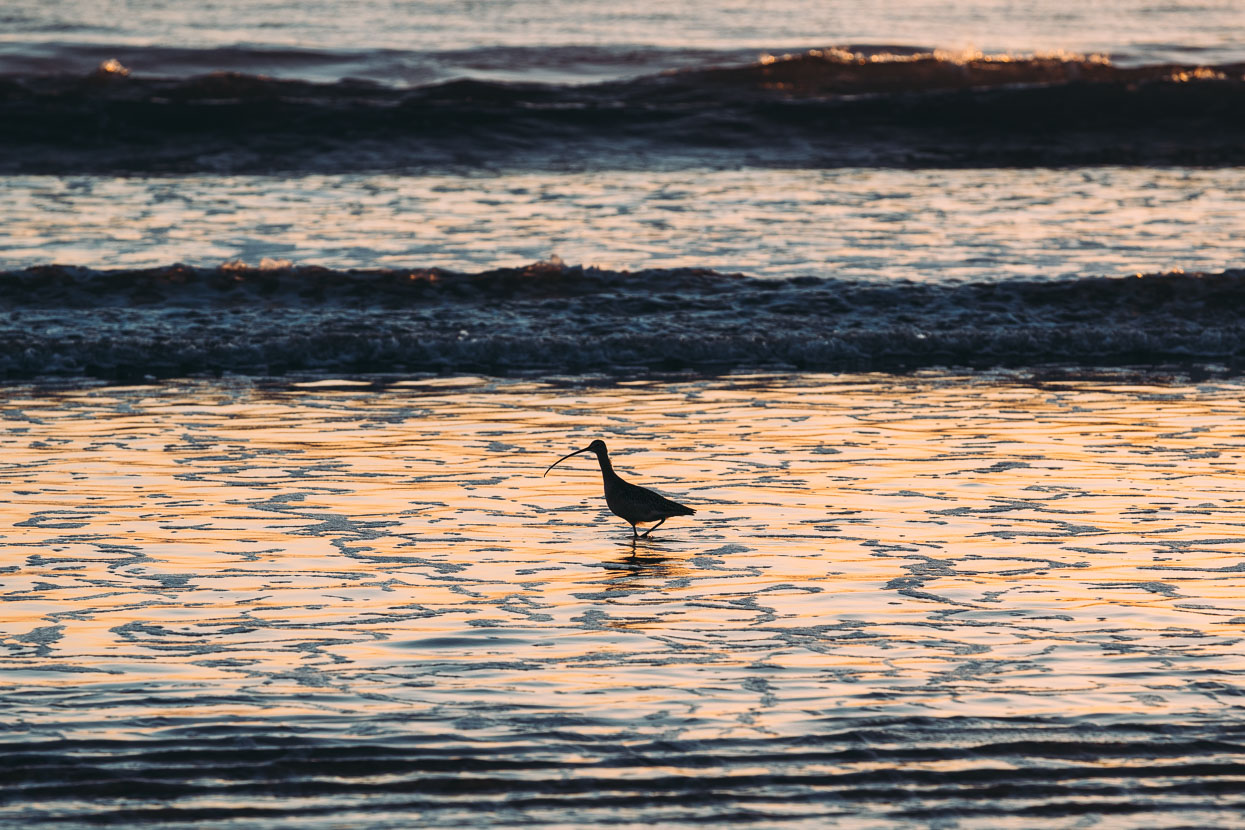
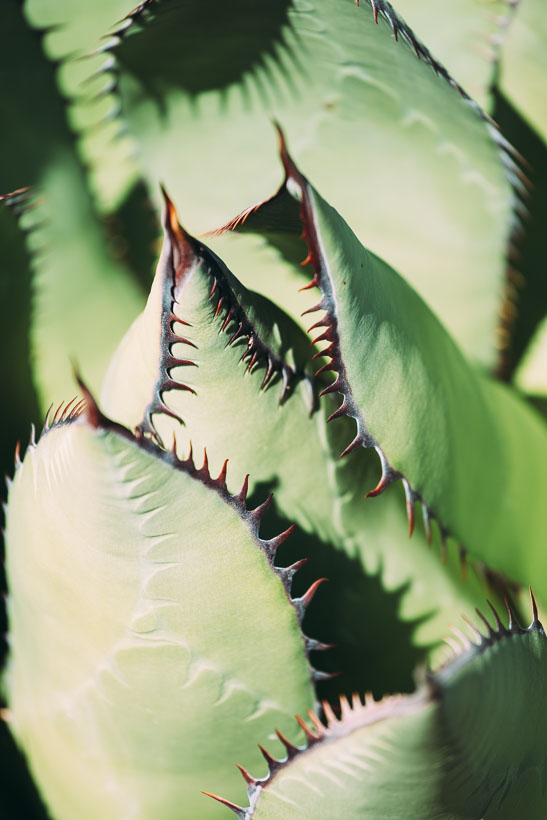
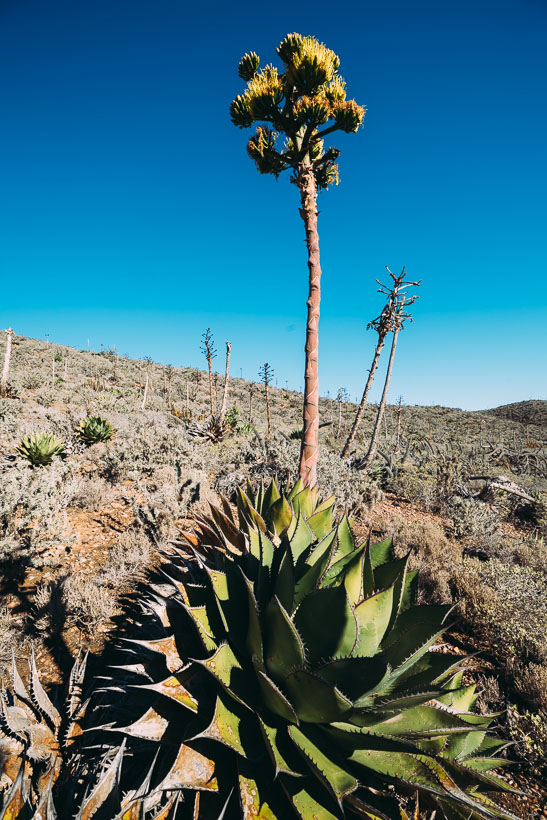
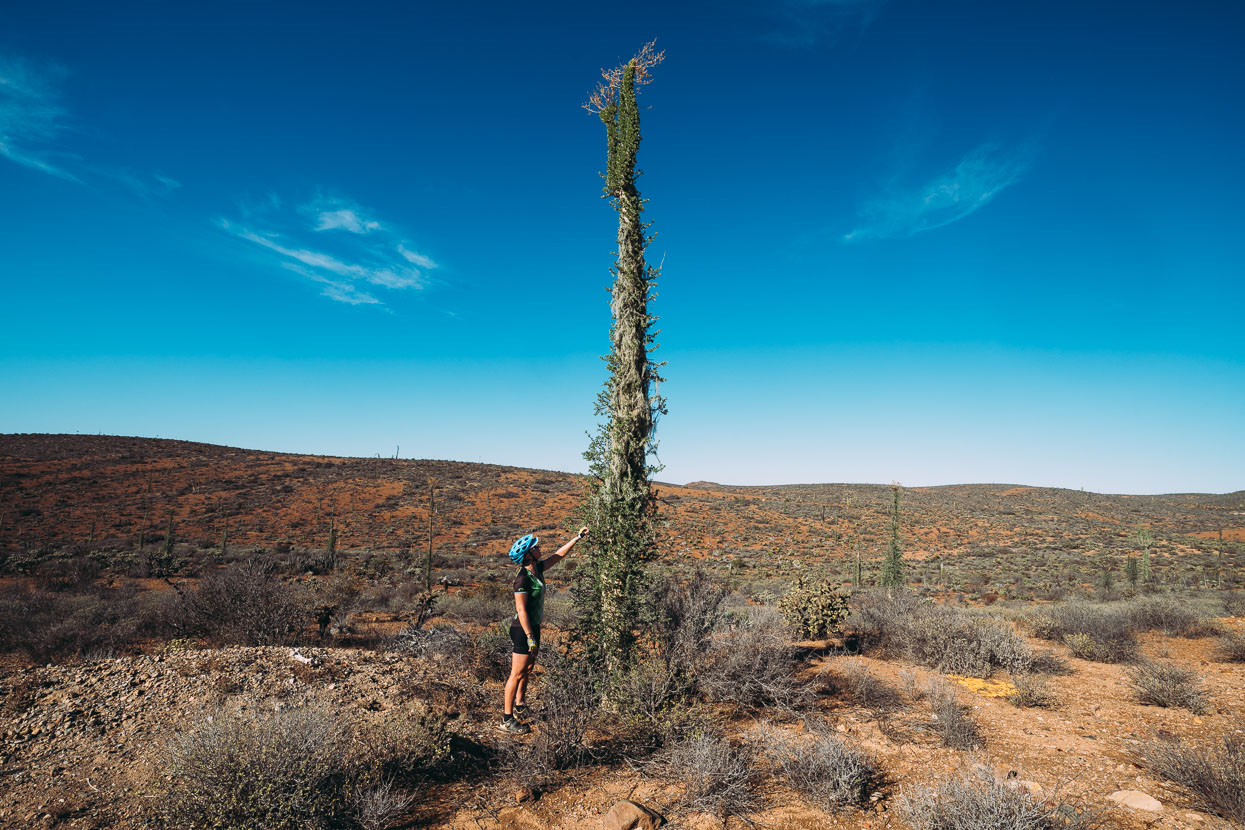
First cirios tree encounter. ‘What is that thing?’ You think to yourself. These amazing trees inhabit a swathe of land through about a third of the Baja Peninsula – the Valle de los Cirios, much of it protected in a nature reserve.
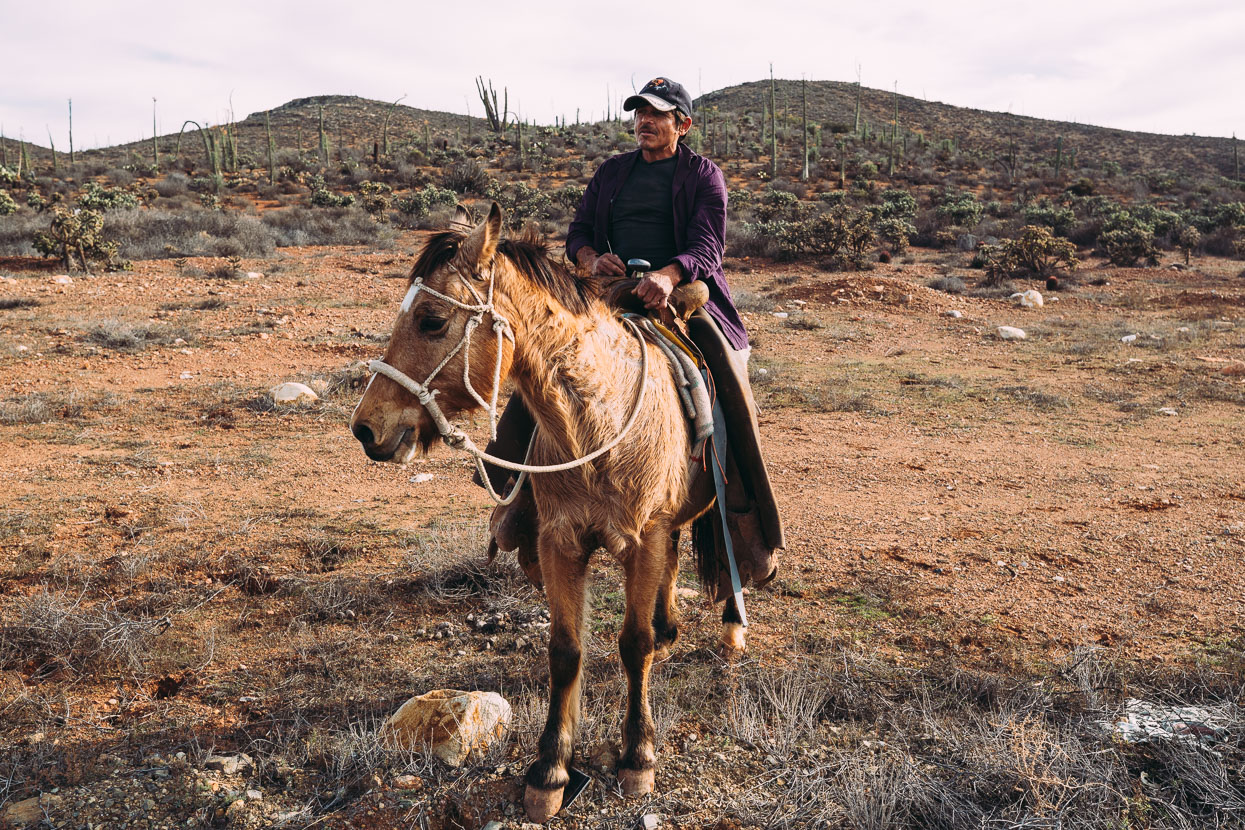
After the earlier short sections of busy Mex 1 highway we’d been forced onto, this section (south of Nueva Odisea) was much more scenic and much quieter. A caballero hailed us as we rode by to ask if we’d seen his cattle on our way up the hill.
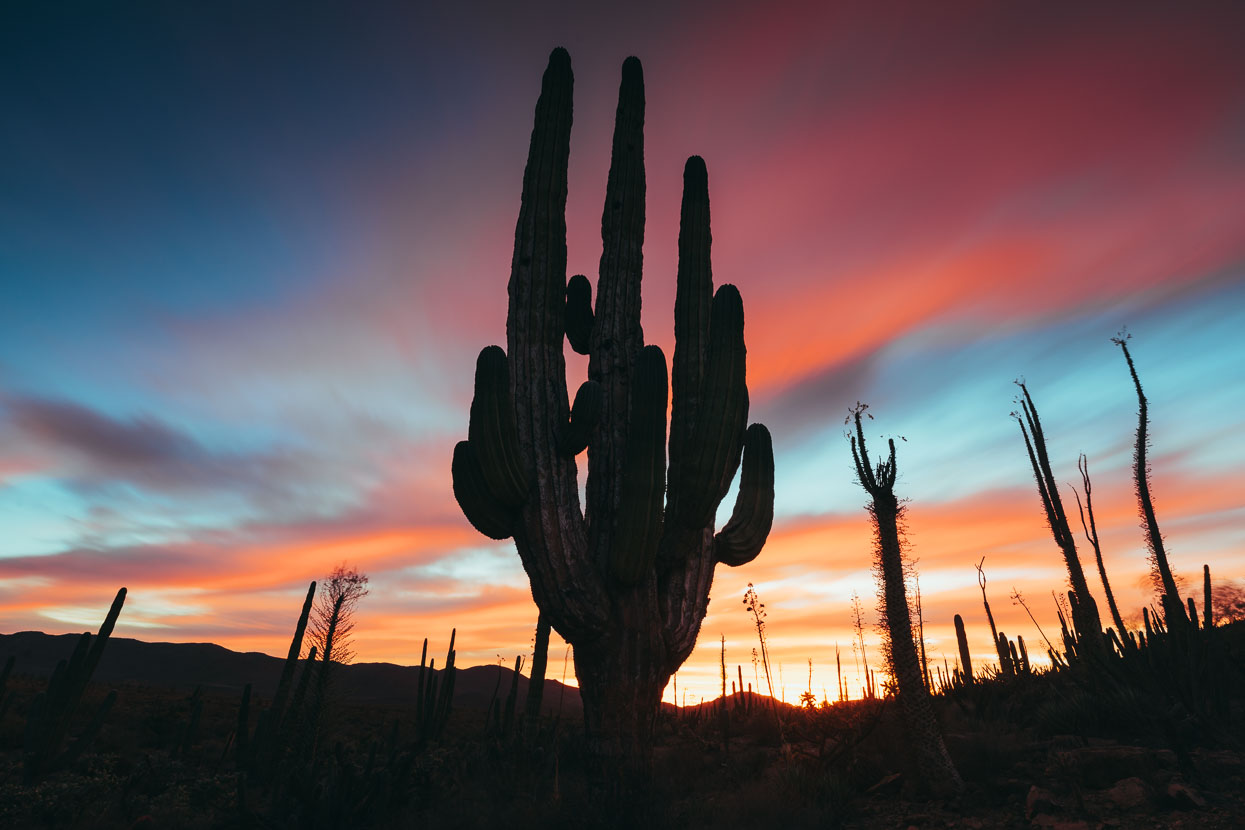
At El Descanso the trail was rockier and we could weave around the puddles so we committed and rode into an enchanting landscape of cardon cactus, cirios trees and cholla. Camping in a arroyo just a few kilometres from the highway.
We didn’t carry a stove on the Baja, committing to a diet of cold food and restaurant meals when we could get them. It’s a good strategy. Purging any excess weight is a good thing for Baja’s rough roads, sometimes bottomless sand and steep climbs. Not only is the bike lighter, but it handles better on the technical ground.
For most dinners I ate cold refried frijoles with tortillas, sometimes with additional tomato and avocado depending on how much weight I felt like carrying, or how much water I had on board filling up storage space. Hana does not digest wheat or beans (fructans/fructose), so her dinners and lunches were usually tostadas (corn) and tuna mixed with mayonnaise. We found a jar of mayo could transform even the most dirt-bag meal into something palatable and added some fat and calories.
The beans are packaged in plastic, not cans, which saves weight. We also quite liked the carne de cerdo (meat of pig) available in the same bags.
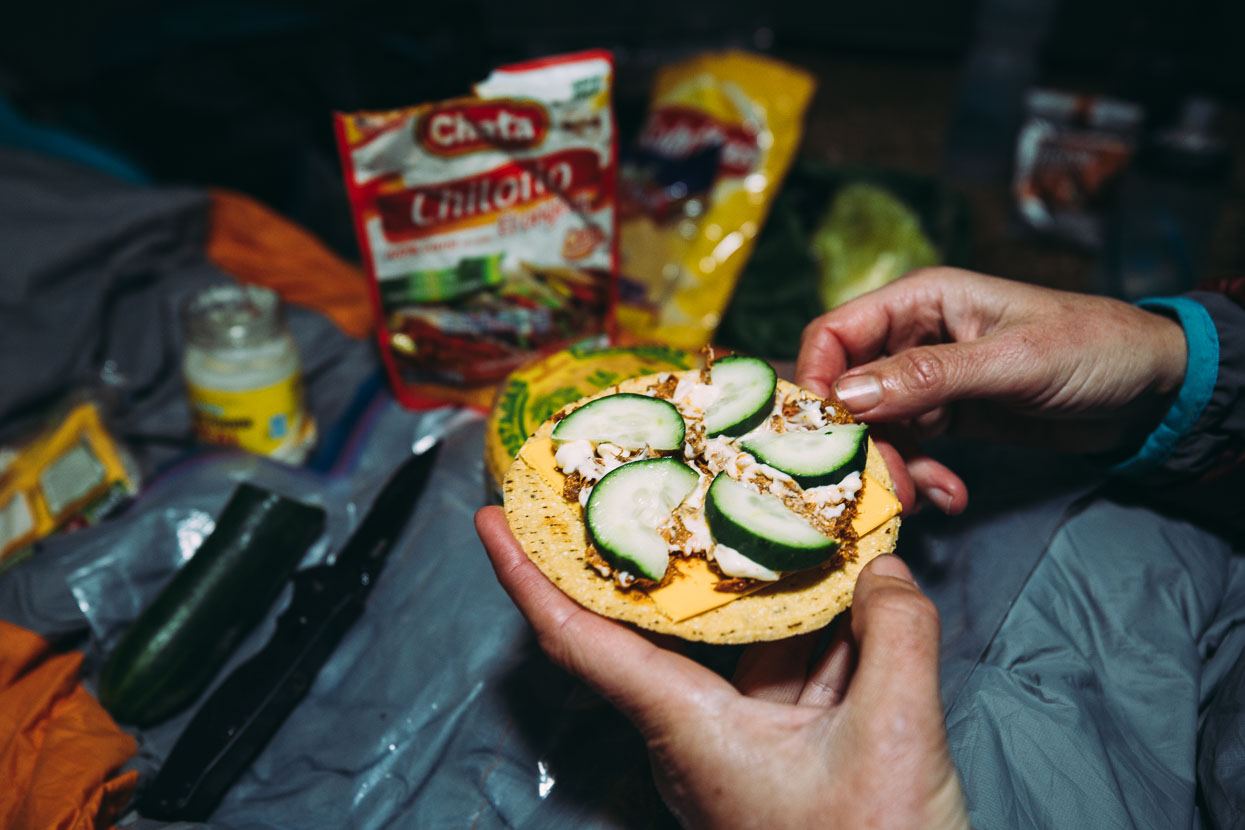
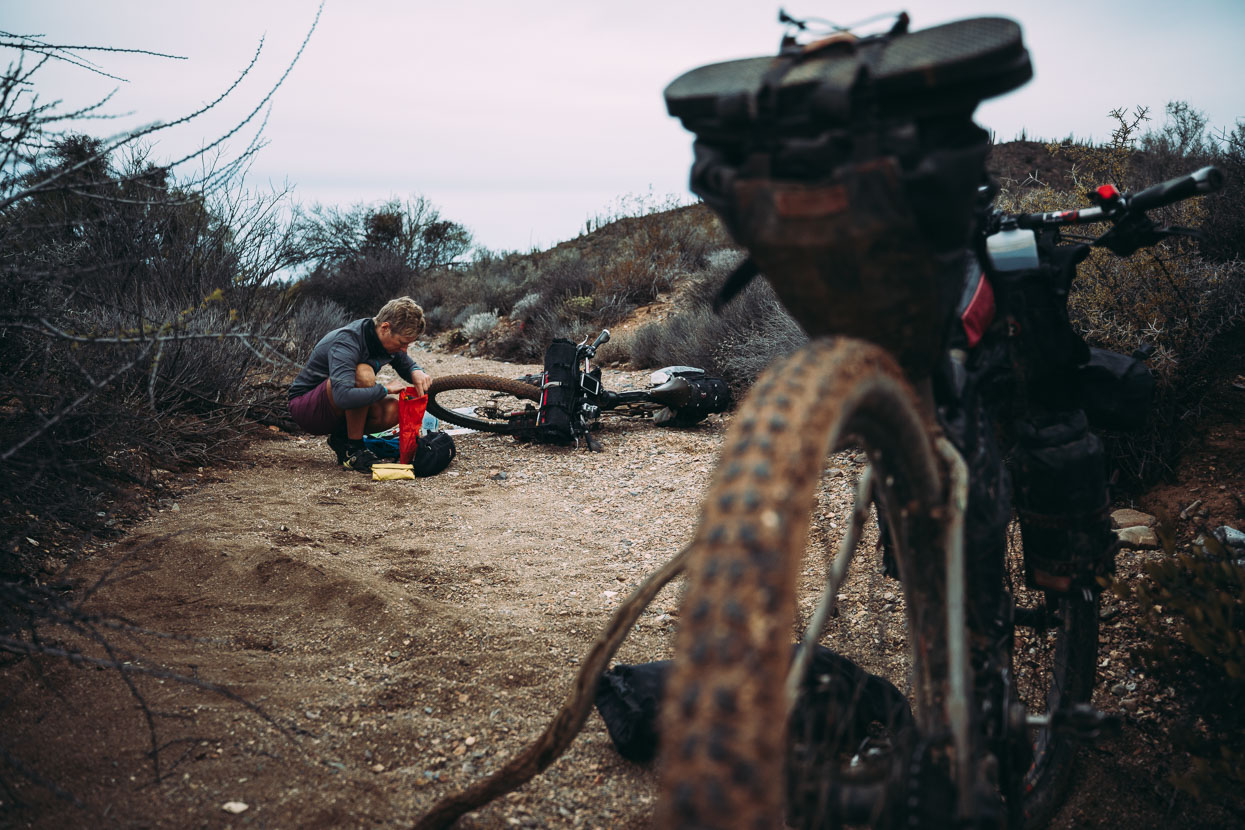
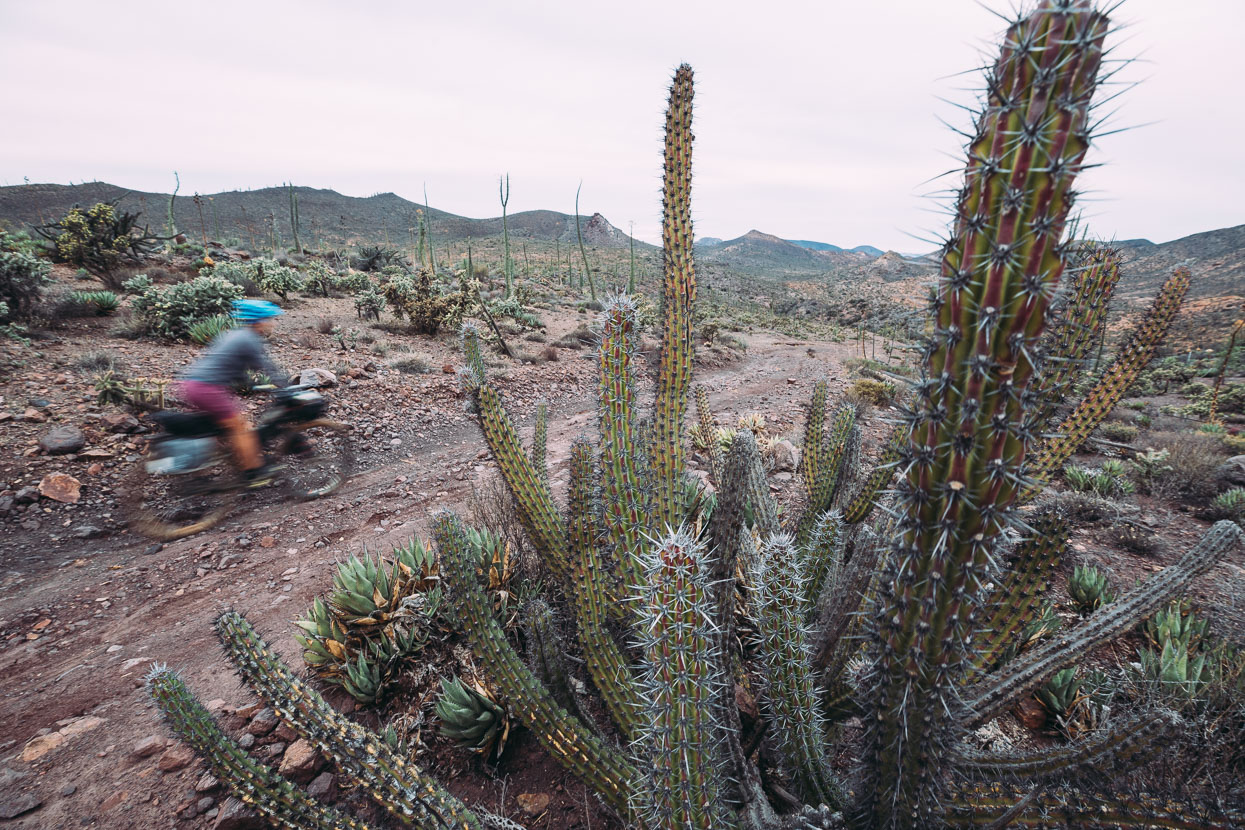
Baja’s landscape had a huge novelty and value for us. In places cactus grows thickly, stretching as far as the eye can see. Much of the time nothing man-made is visible. The silence of the desert usually only broken by distant cattle or goat bells. We’d sometimes see only a vehicle or two a day, often none. Turkey vultures circle overhead as if they know something we don’t, anticipating our expiry at any moment. The topography changes from day to day, hour to hour. The surface alternately granitic and curvy or basaltic and broken.
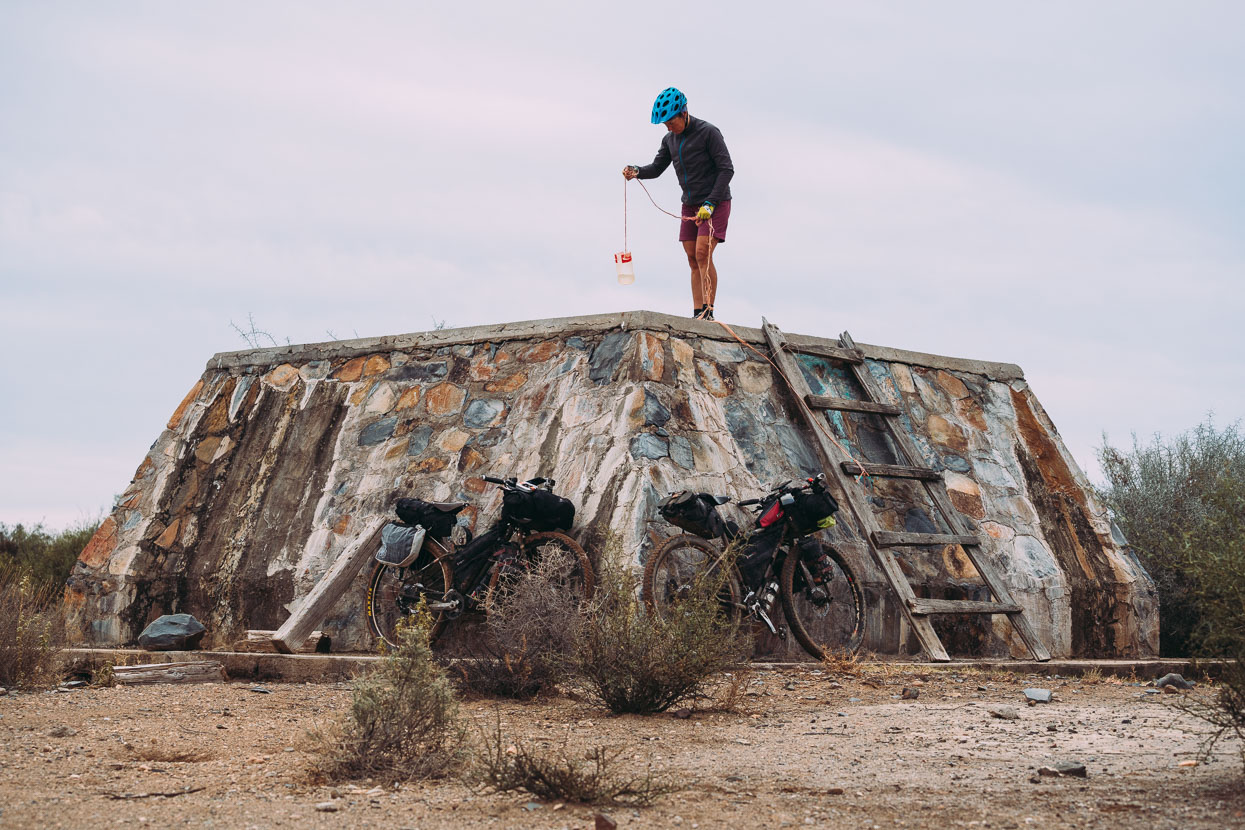
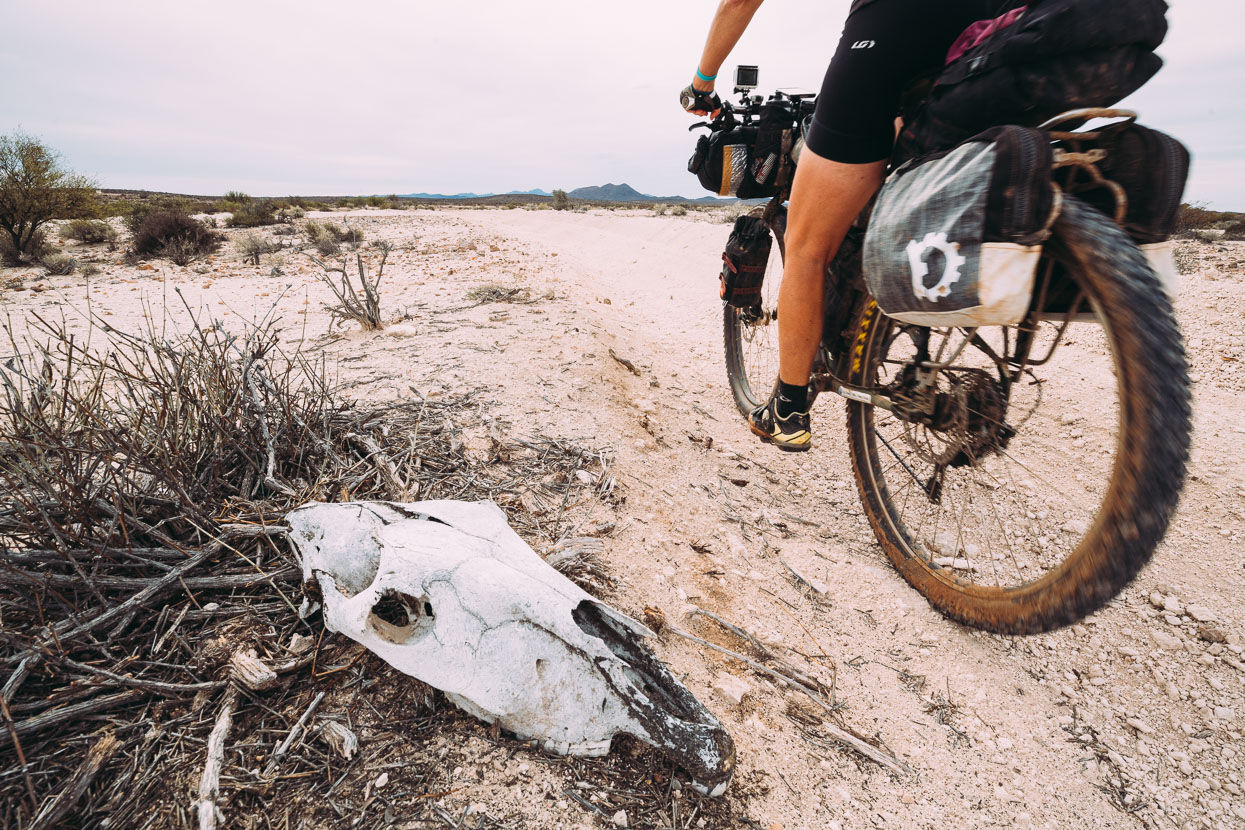
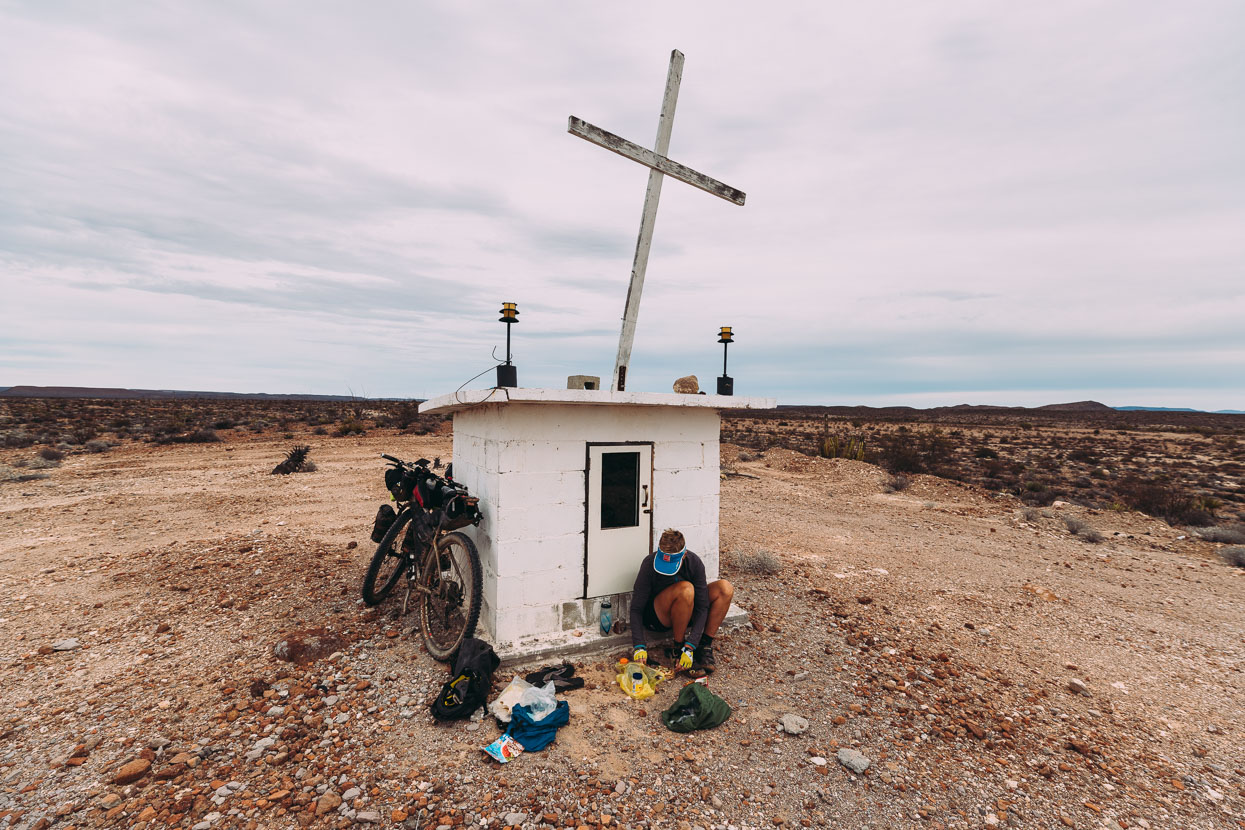
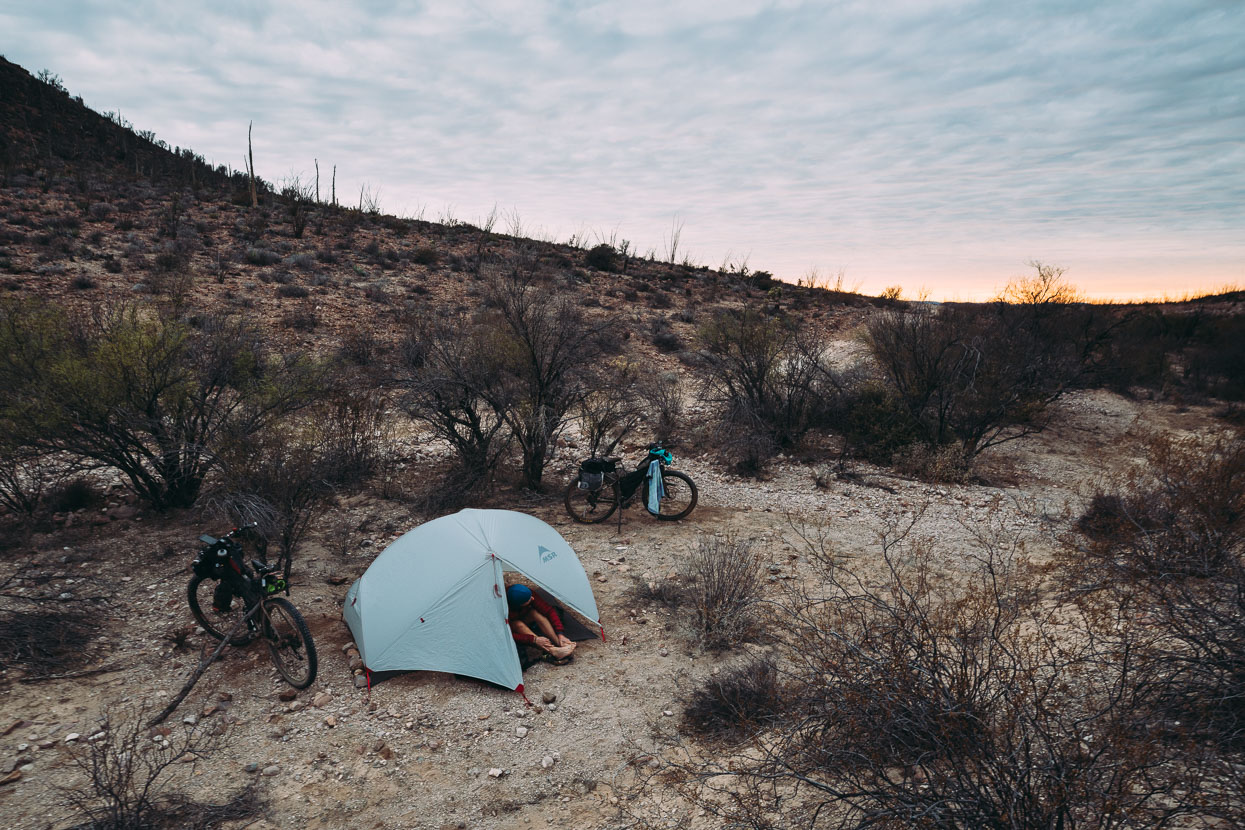
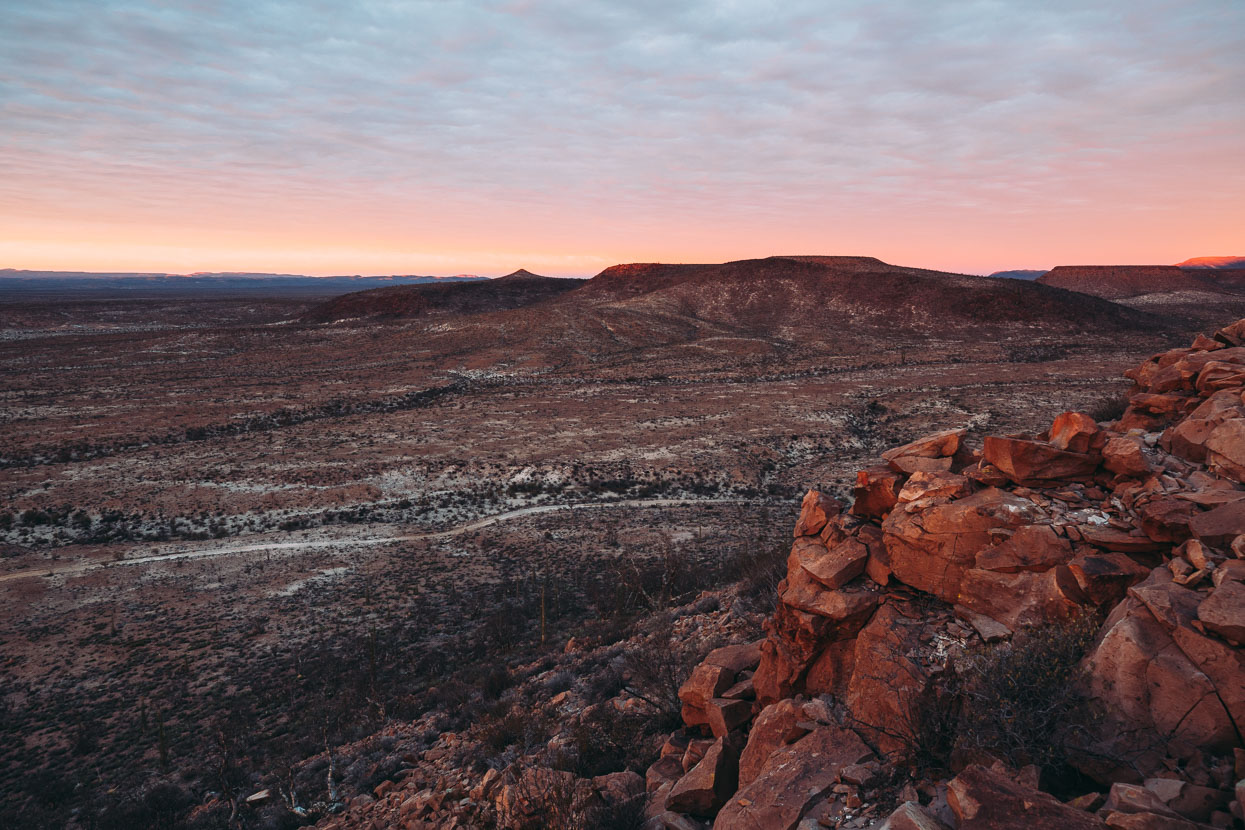
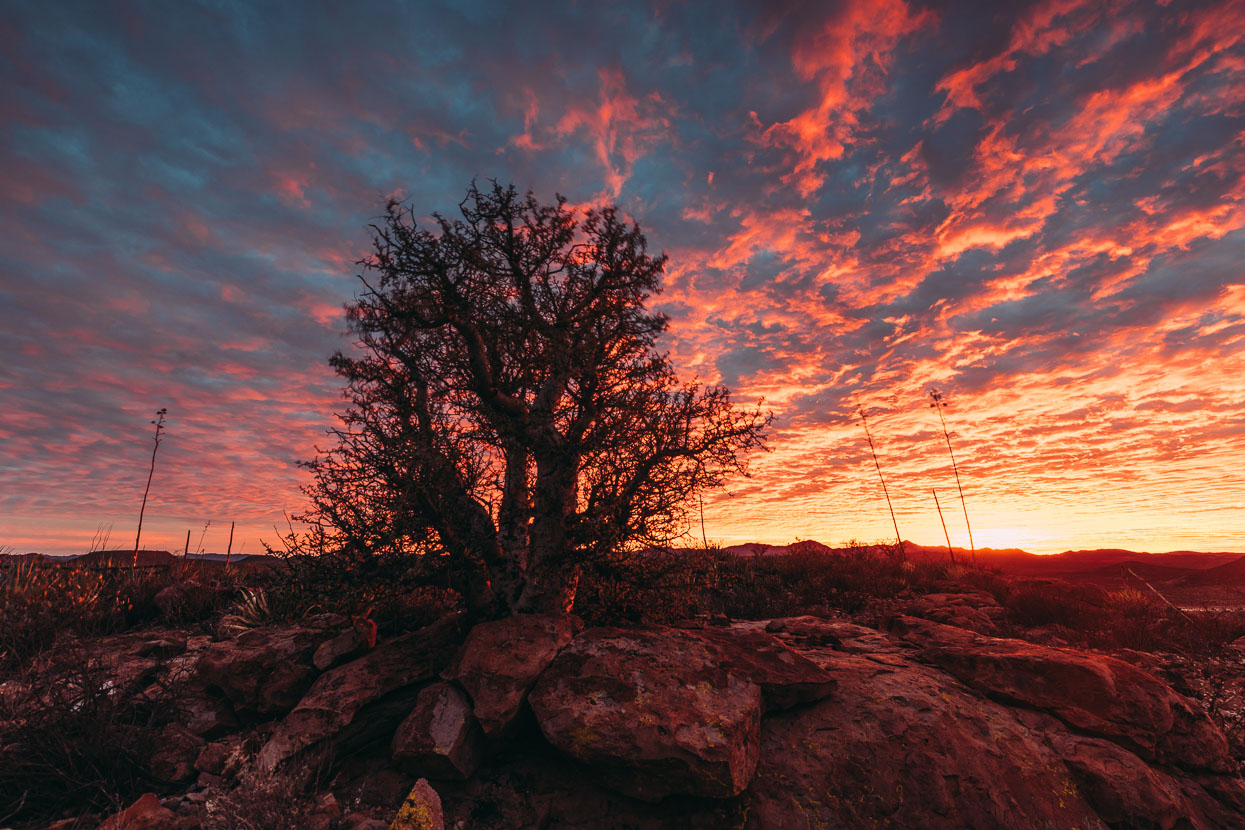
It’s a simple life. The Baja is one of the driest places on earth and the requirement to carry water with you at all times makes you self contained. Your choice of campsites is as wide as the desert itself, lending a feel of independence and freedom to riding here. Instead of being driven by the need to get someplace to find water, to camp, you’re driven to find the coolest place instead.
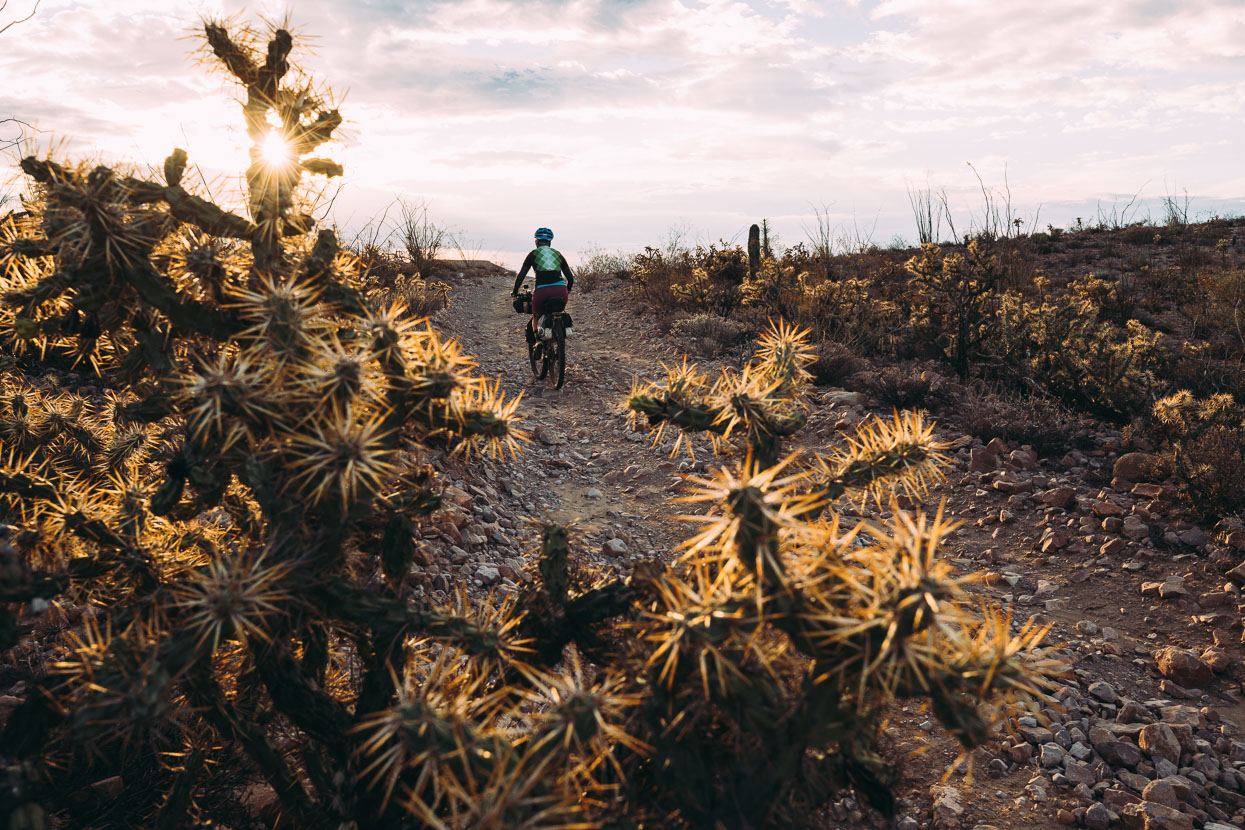
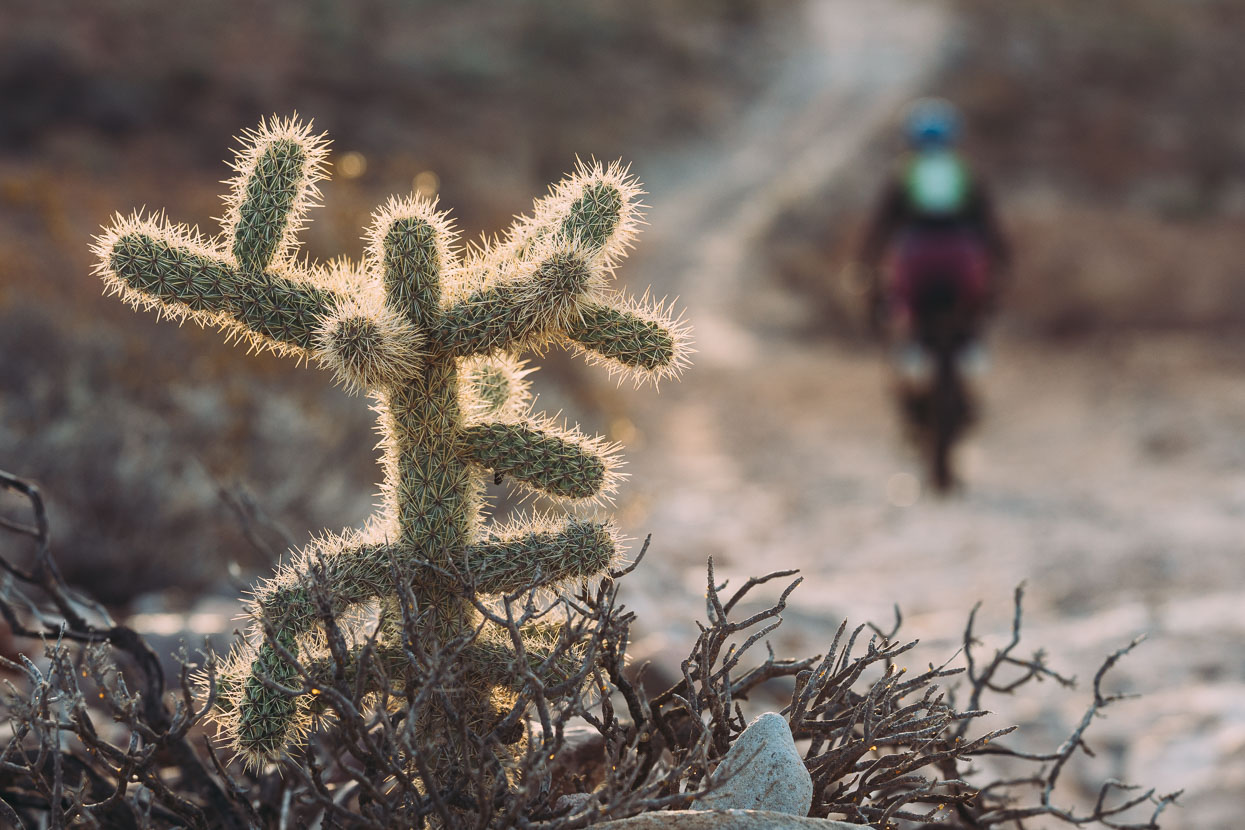
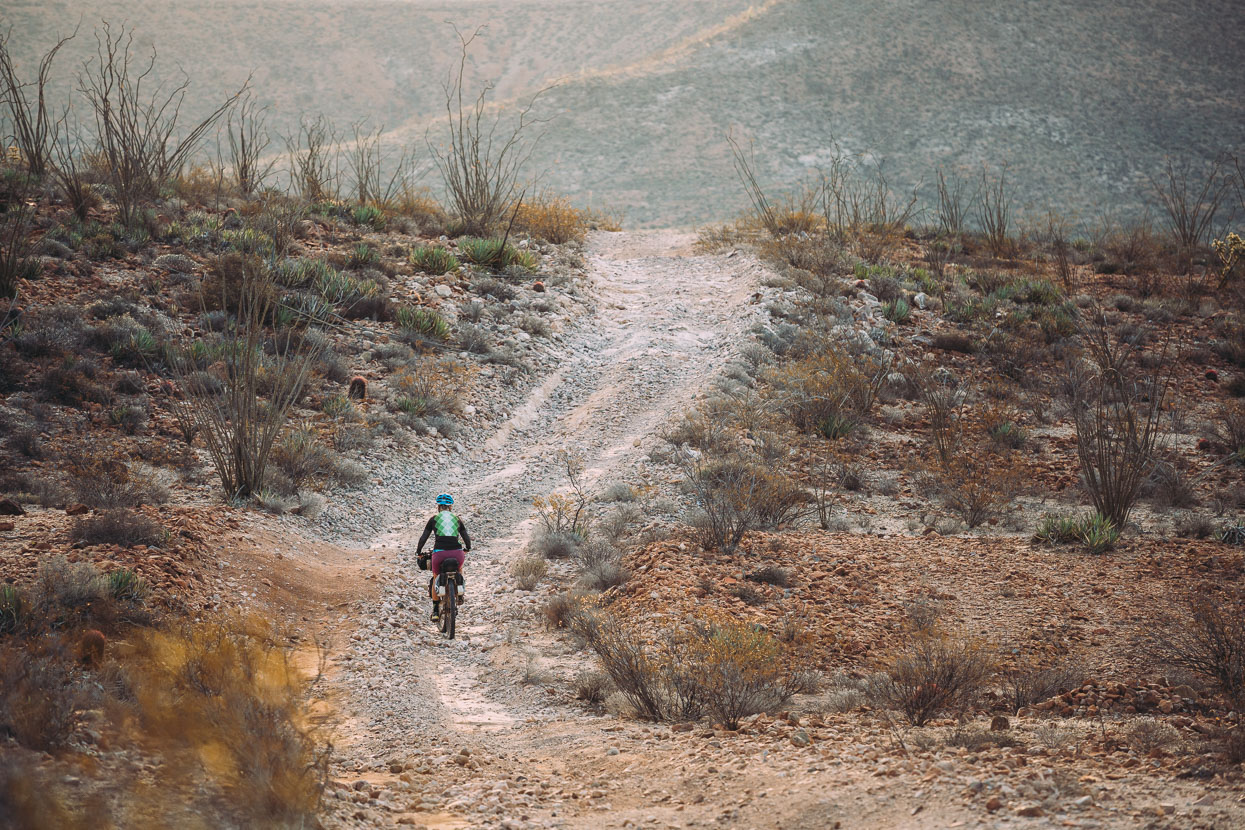
The riding surface varies immensely. Sometimes it’s relentlessly tough. Finding any flow is difficult and average speeds hit record lows. At others it’s smooth and steady. You can relax more, surveying the landscape as you cover the terrain.
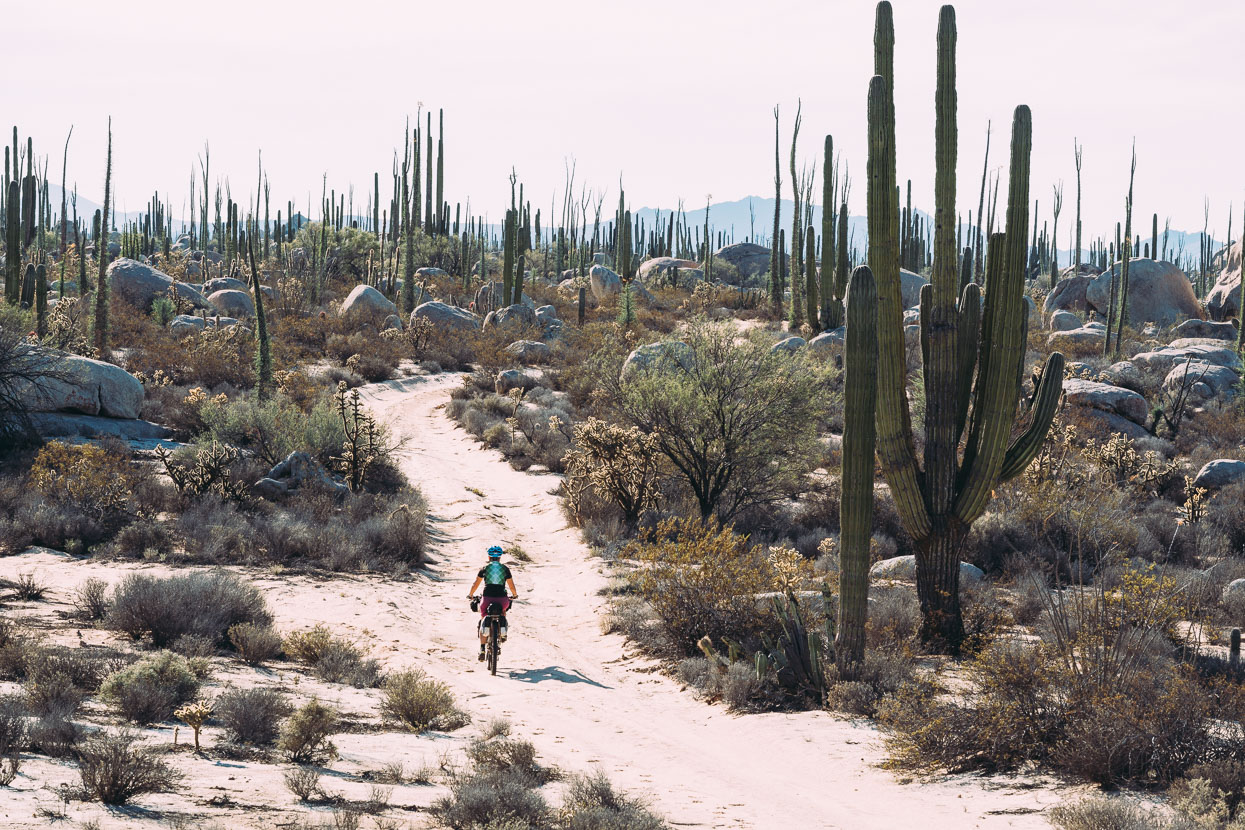
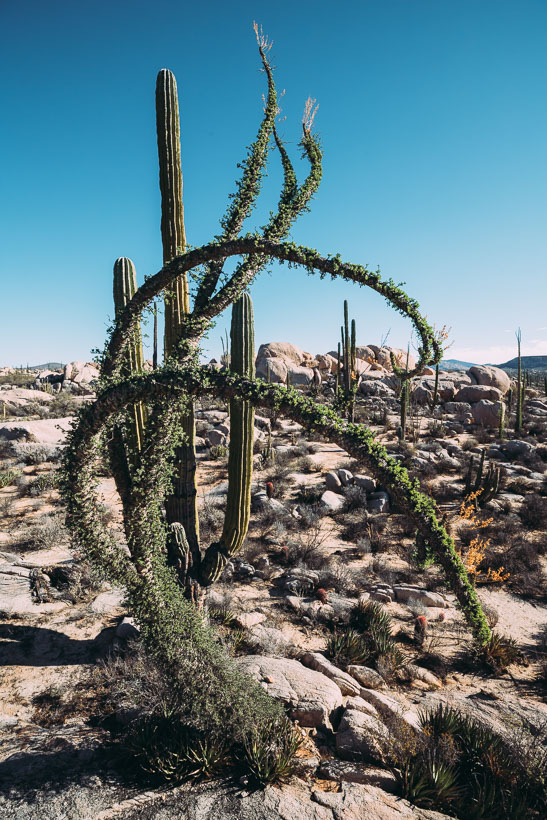
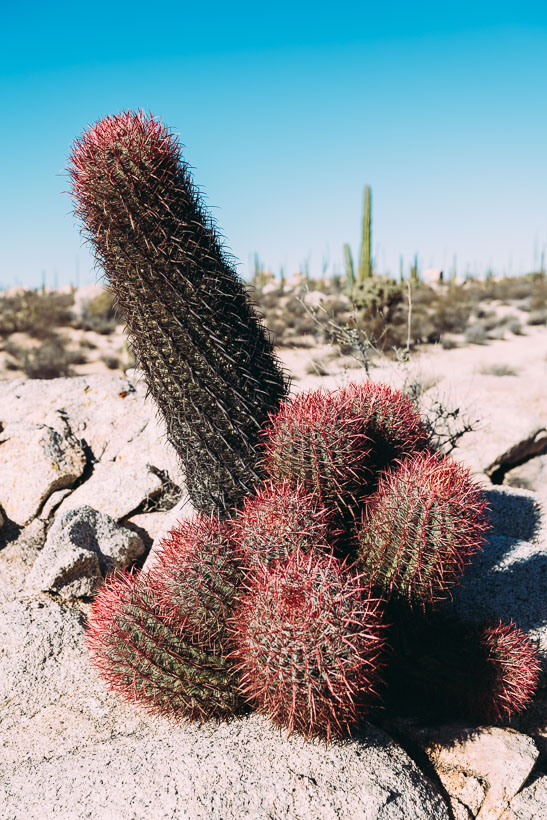
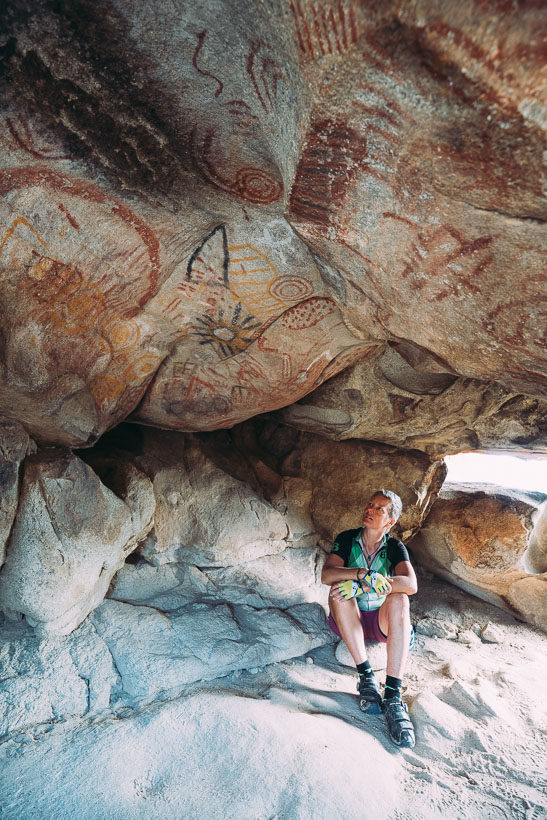
The area around Cataviña is fascinating. A place like no other we’ve seen. Curly cirios trees grow everywhere, cardon cactus –the biggest on earth – form the forest of the desert. Rock art can be found just outside of town.
We restock from the tiny store to prepare for the longest section of Baja without resupply: the three day ride from here to the Pacific Coast – El Cardon – Santa Rosalillita and back to Mex 1 near Rosarito.
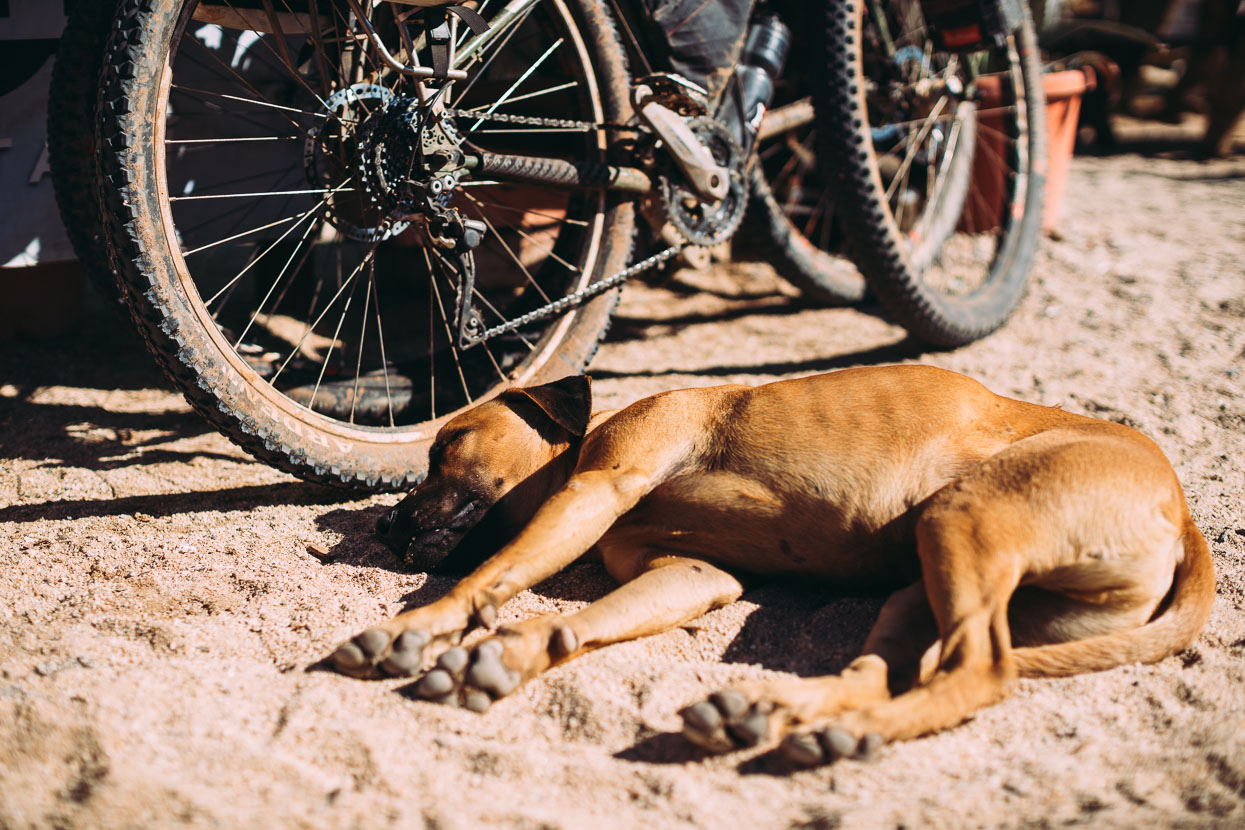
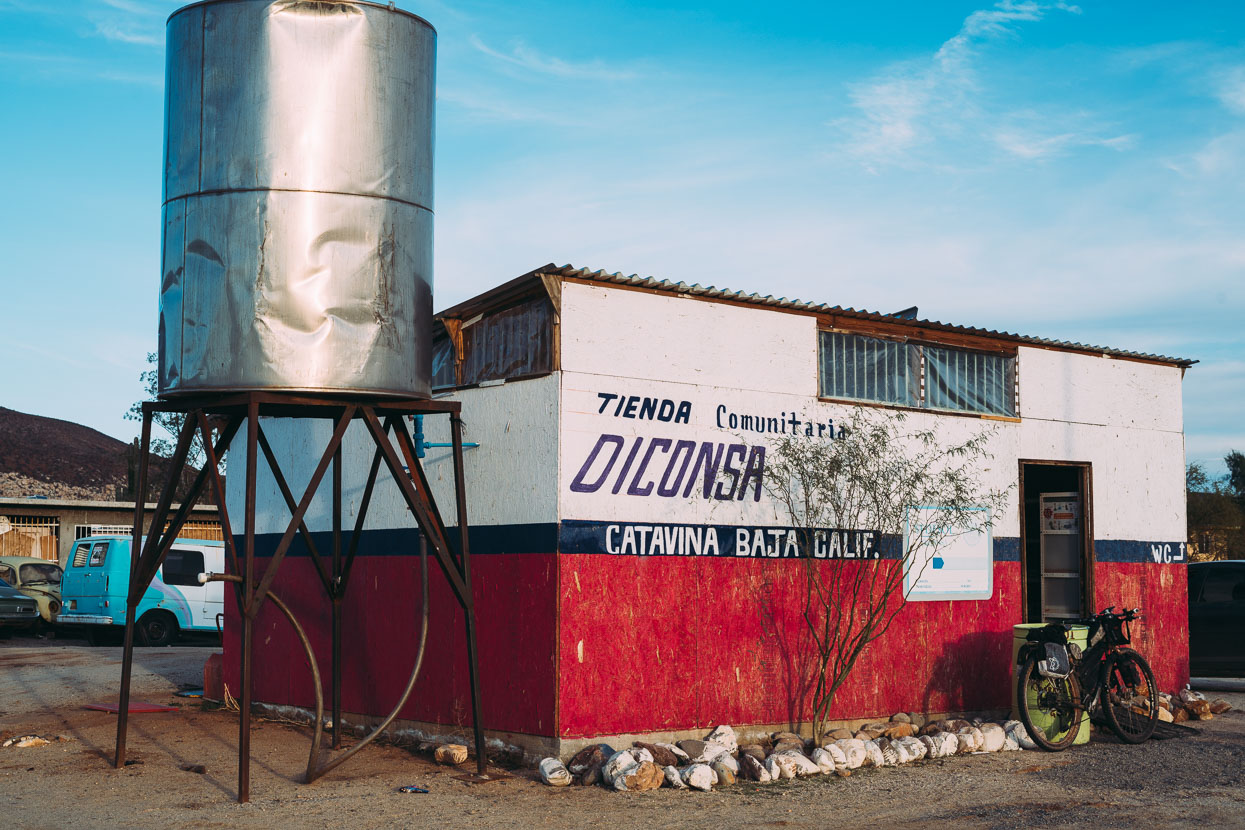
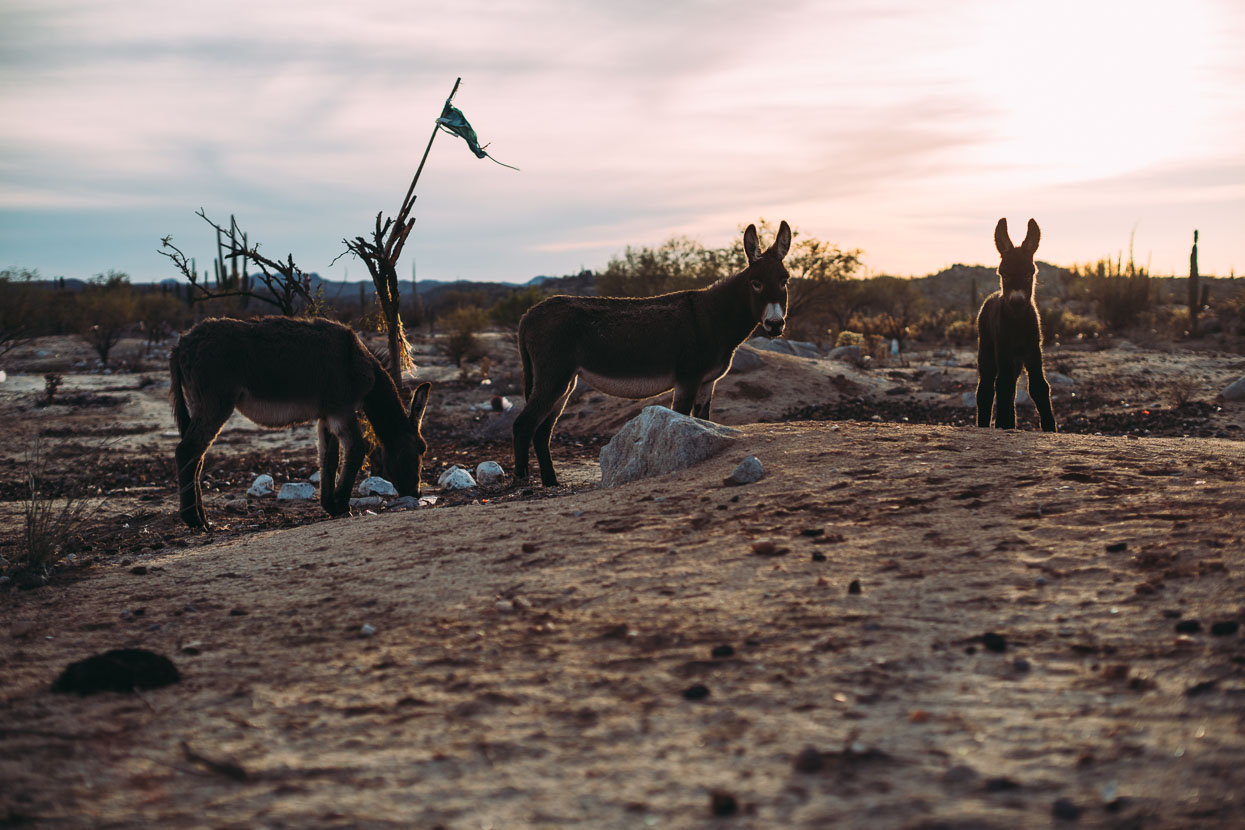
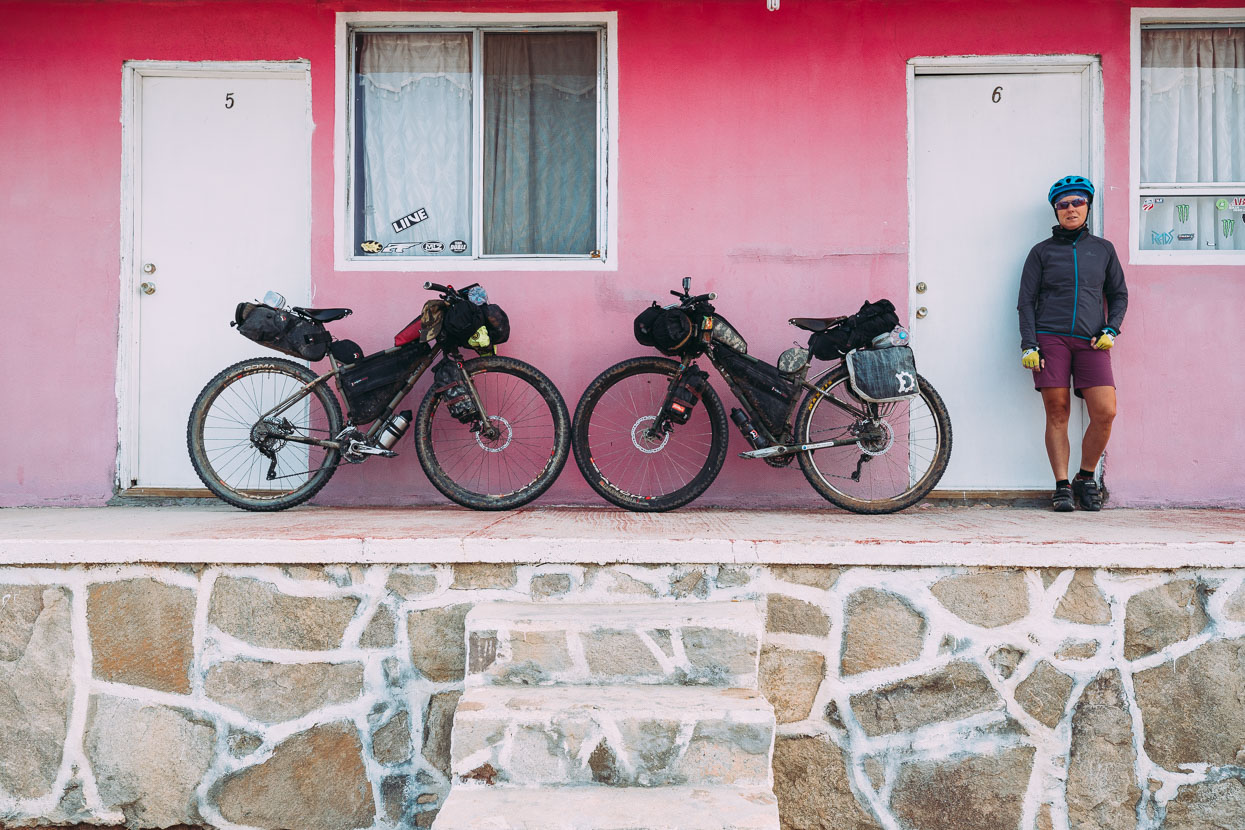
Ready to leave Cataviña each with nine litres of water on board. My base capacity (in my own bottles and bladders) was about 6.5 litres, and I carried the rest by strapping a couple of bottles from the shop on my bike.
27.5+ bikes are the most widely recommended for Baja, but any decent mountain bike with at least 2.35 inch tyres will be up to the job. With 2.35 inch you’re likely to find you have to walk some extra sandy sections and the roads will feel extra rough without the cushy tyre volume. We ran 2.4 inch on the back and 3 inch on the front, which were the biggest tyres we could fit on our Surly Ogres, and rode almost everything. Occasionally we bogged down in the softest sand, but were usually able to restart riding after only a few metres.
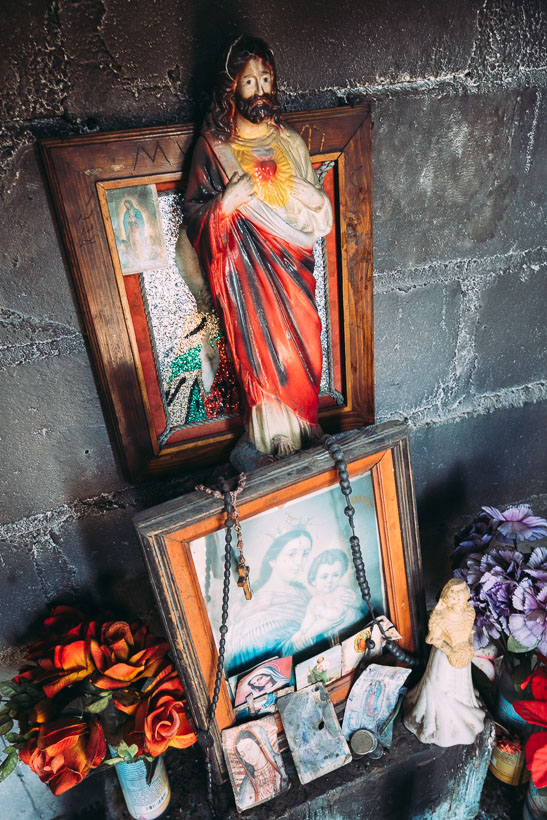
Roadside shrines are common along the whole route.
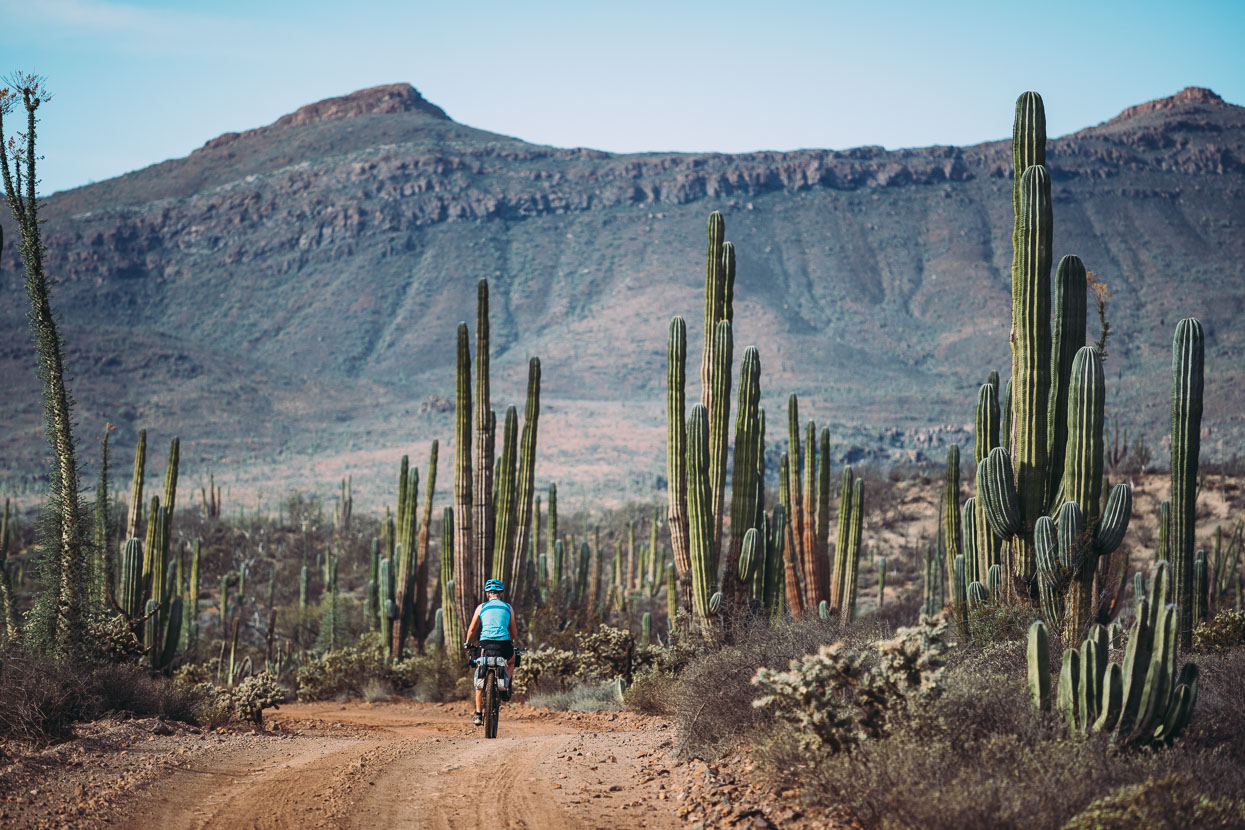
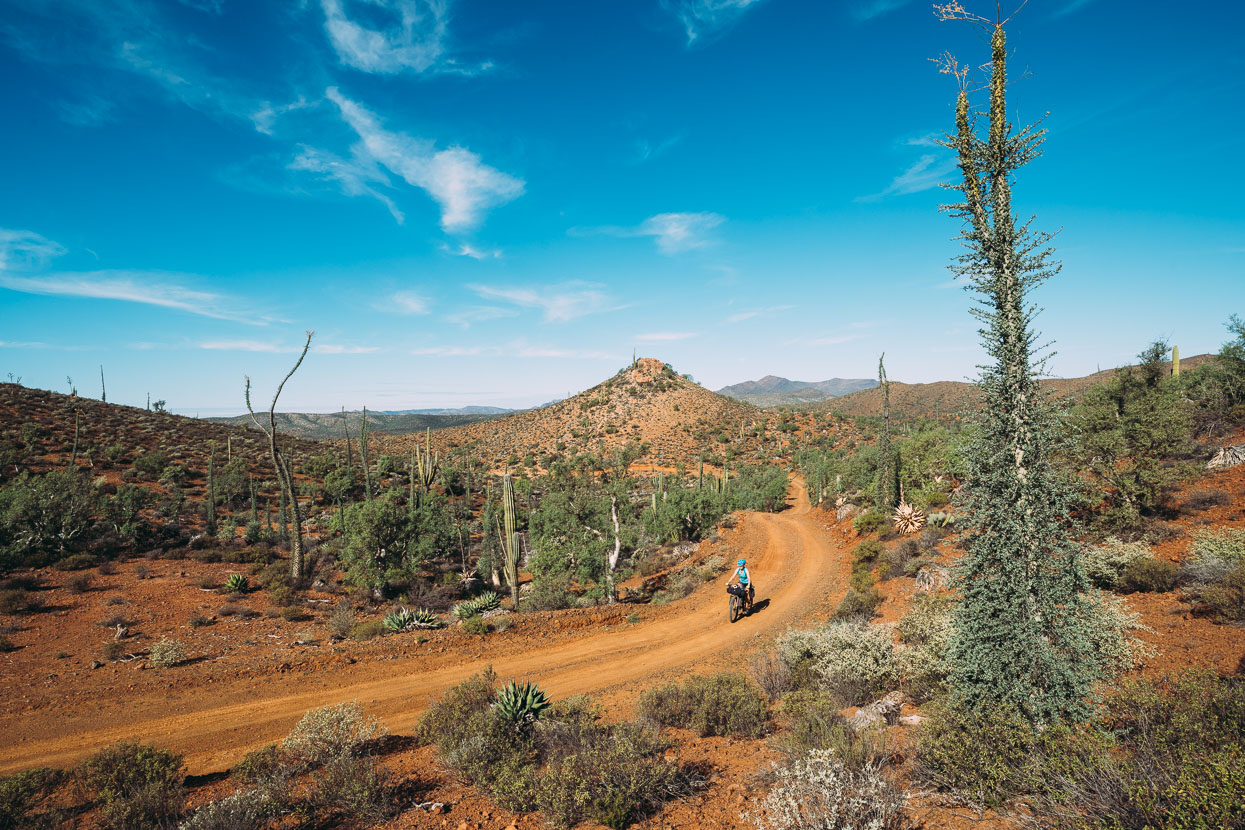
Some of the greatest biodiversity of the whole route defines the ride out to the coast from Cataviña, and some relentless ups and downs as you approach the sea.
We successfully experimented with cold brew coffee on Baja, mixing grounds and cold water in a bottle at lunchtime and drinking it the following morning after a half day of agitation on the bike and a night to settle. We strained it into our bowls through a piece of old t-shirt.
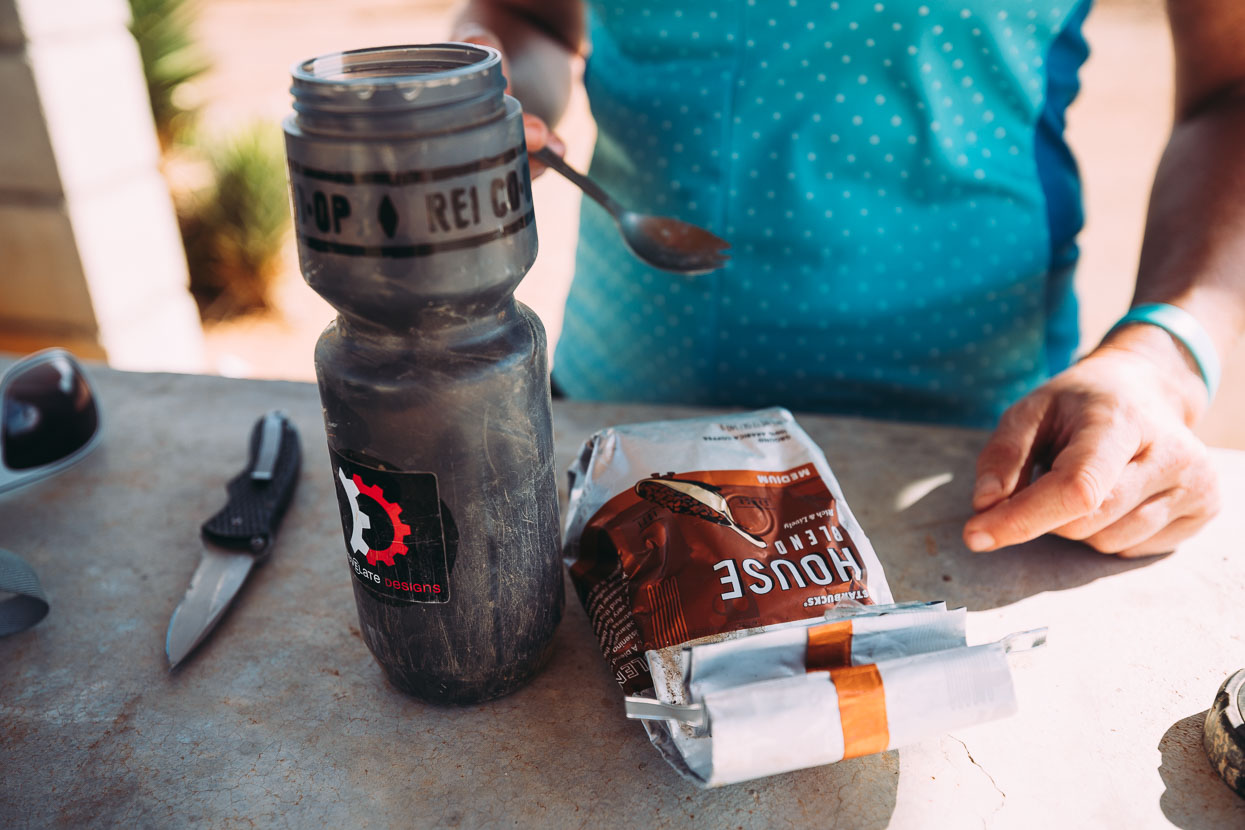
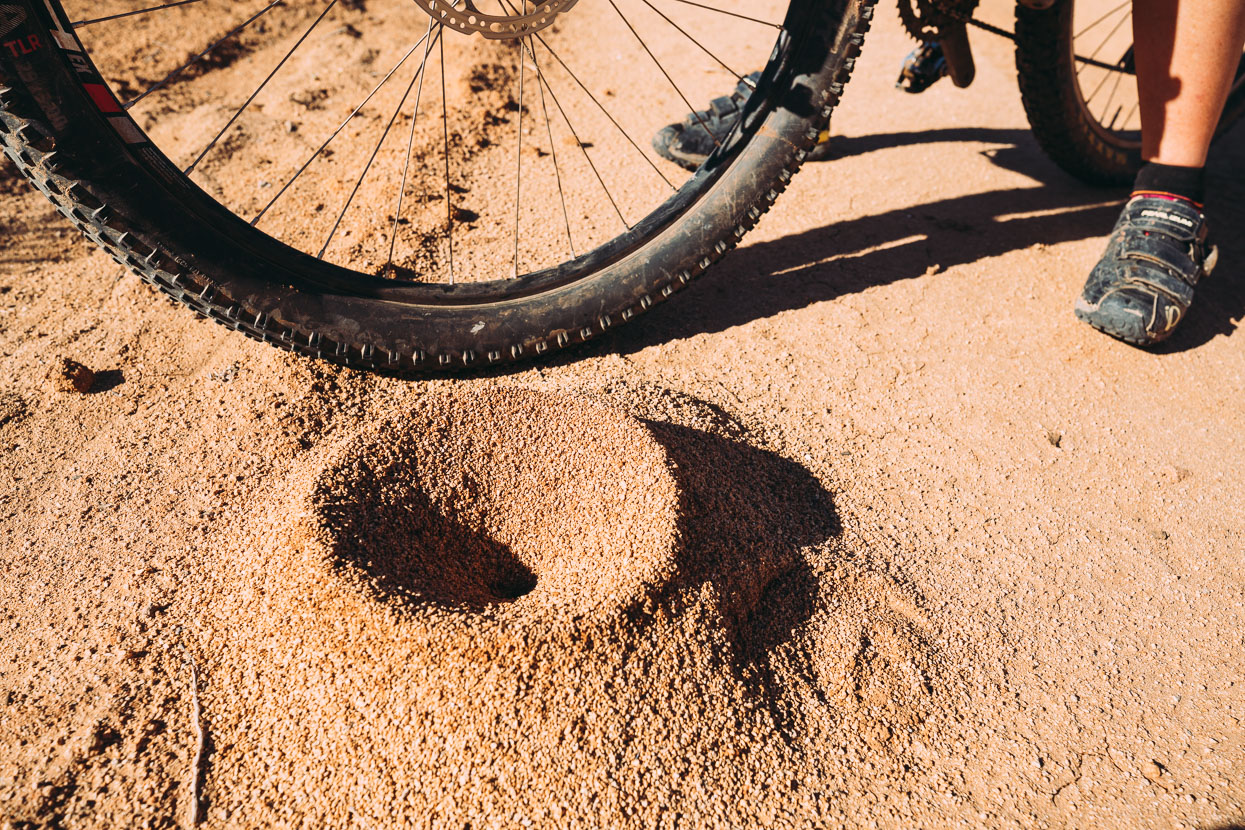
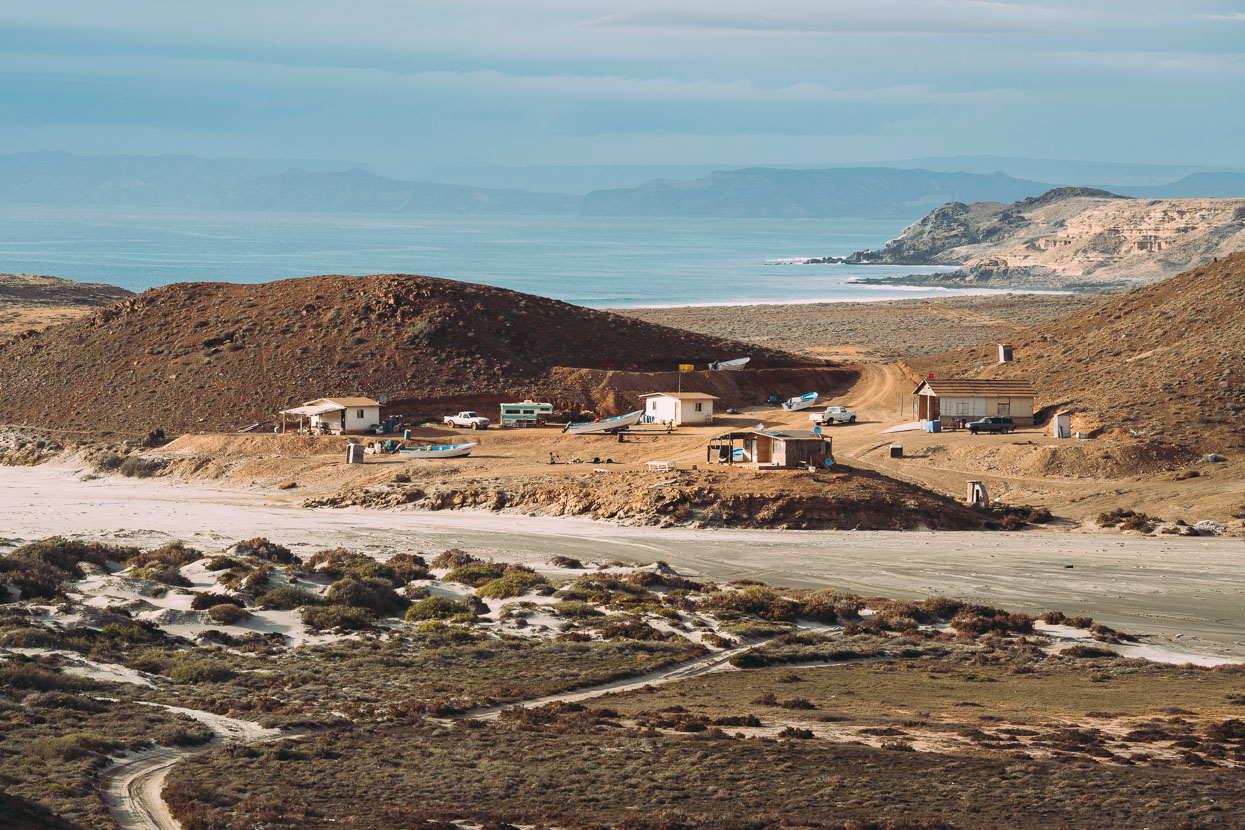
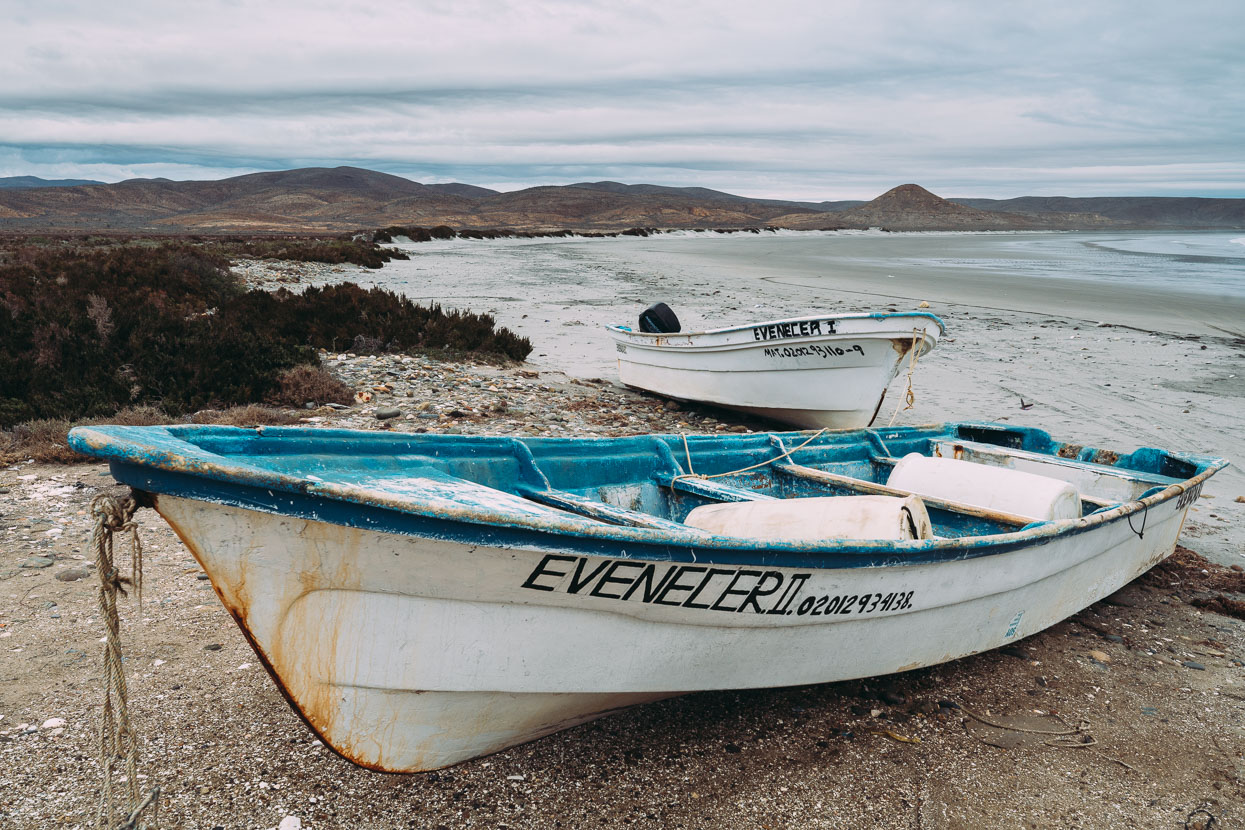
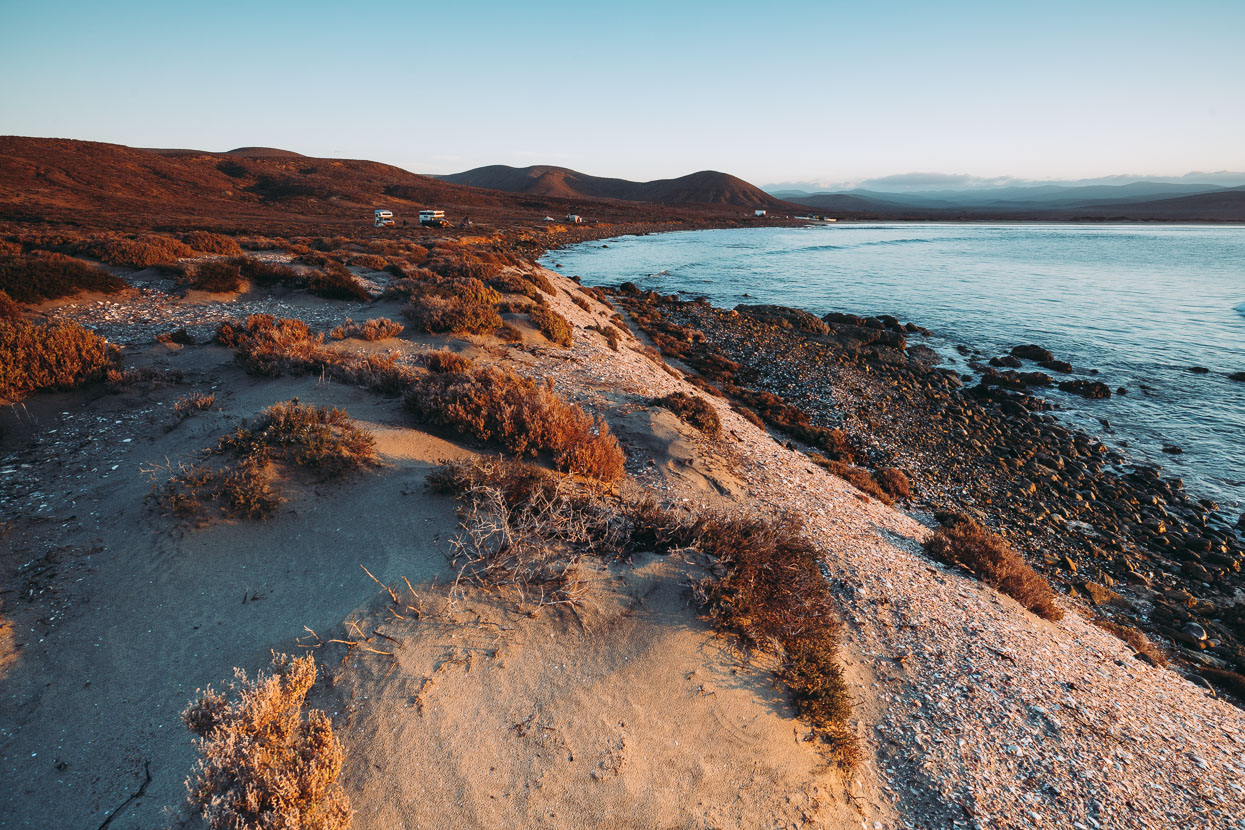
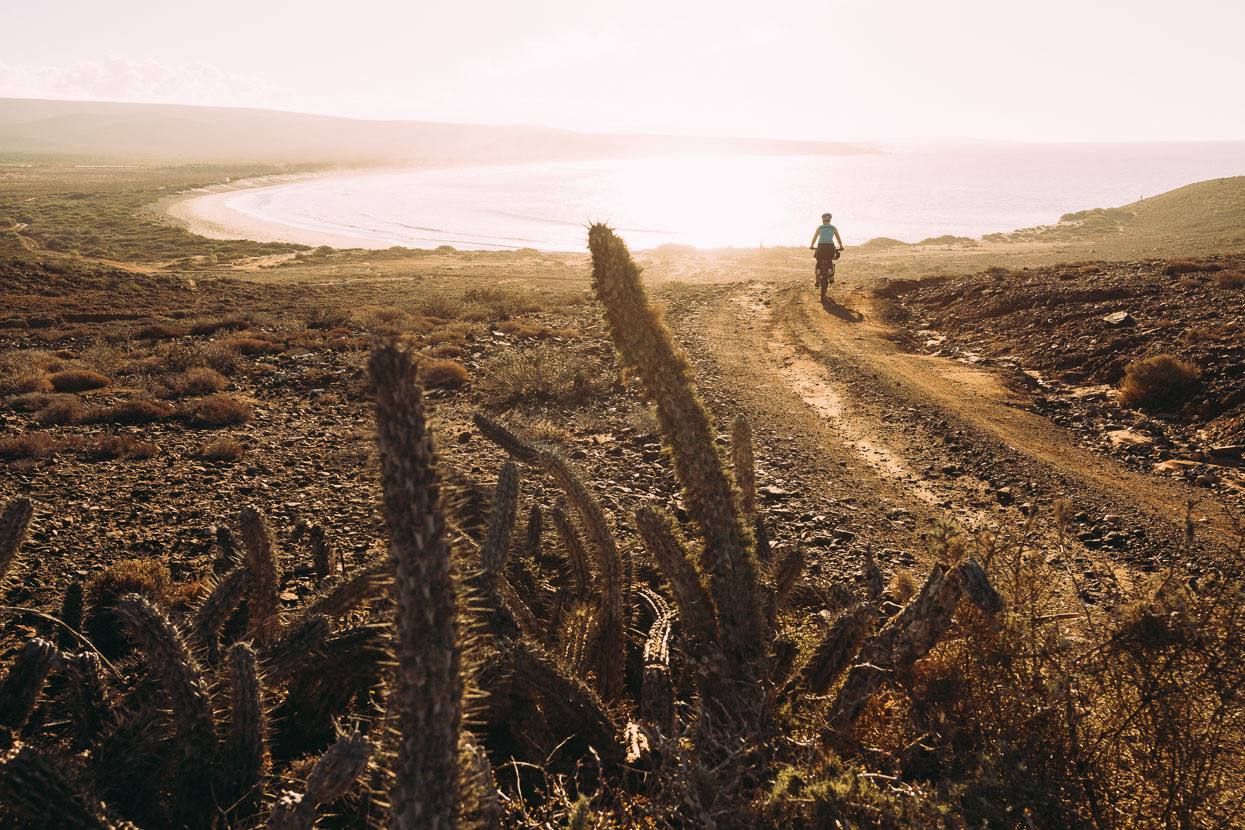
We camped with some surfers in the next bay south of San Jose del Faro (it’s relatively sheltered at the north end). Unfortunately it rained overnight and we encountered more tacky mud crossing the tidal flats south of there. Choosing a good scraper stick and a lot of patience kept us slowly moving. Conditions improved later.
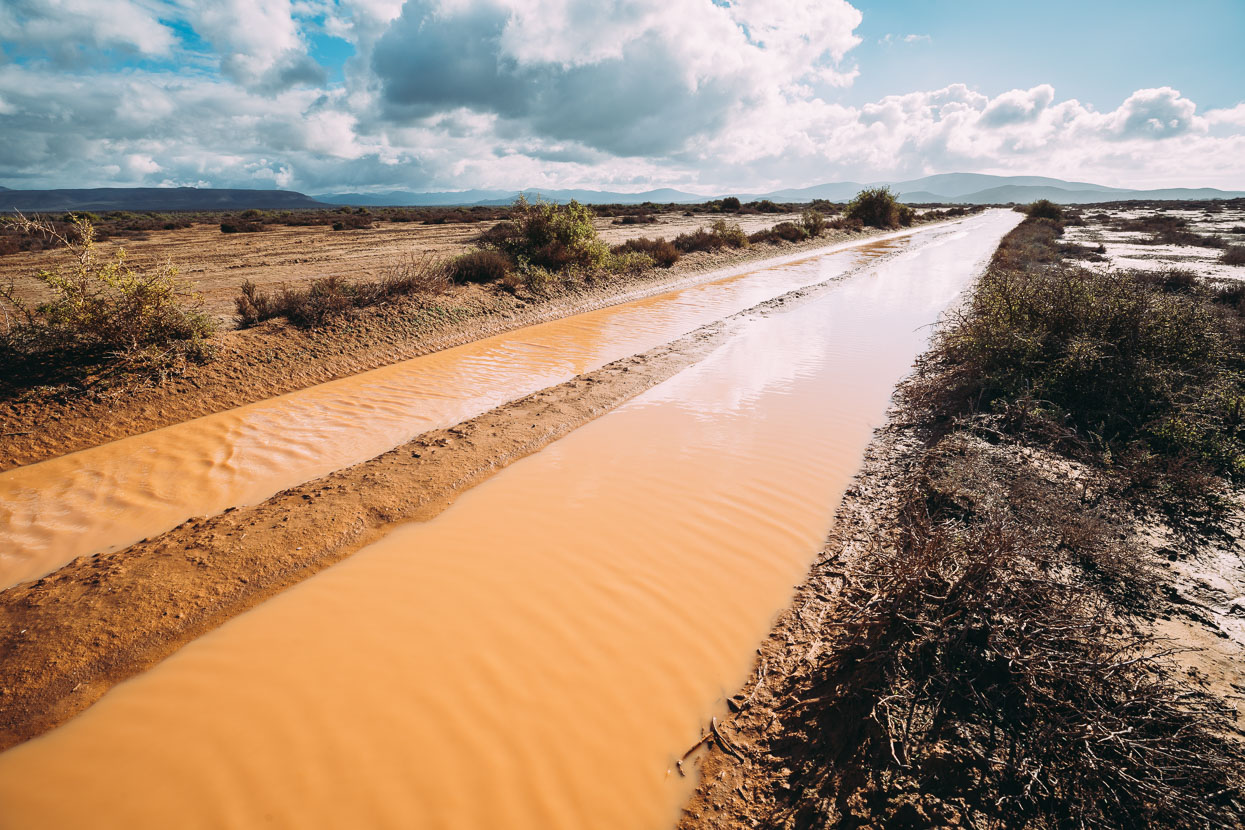
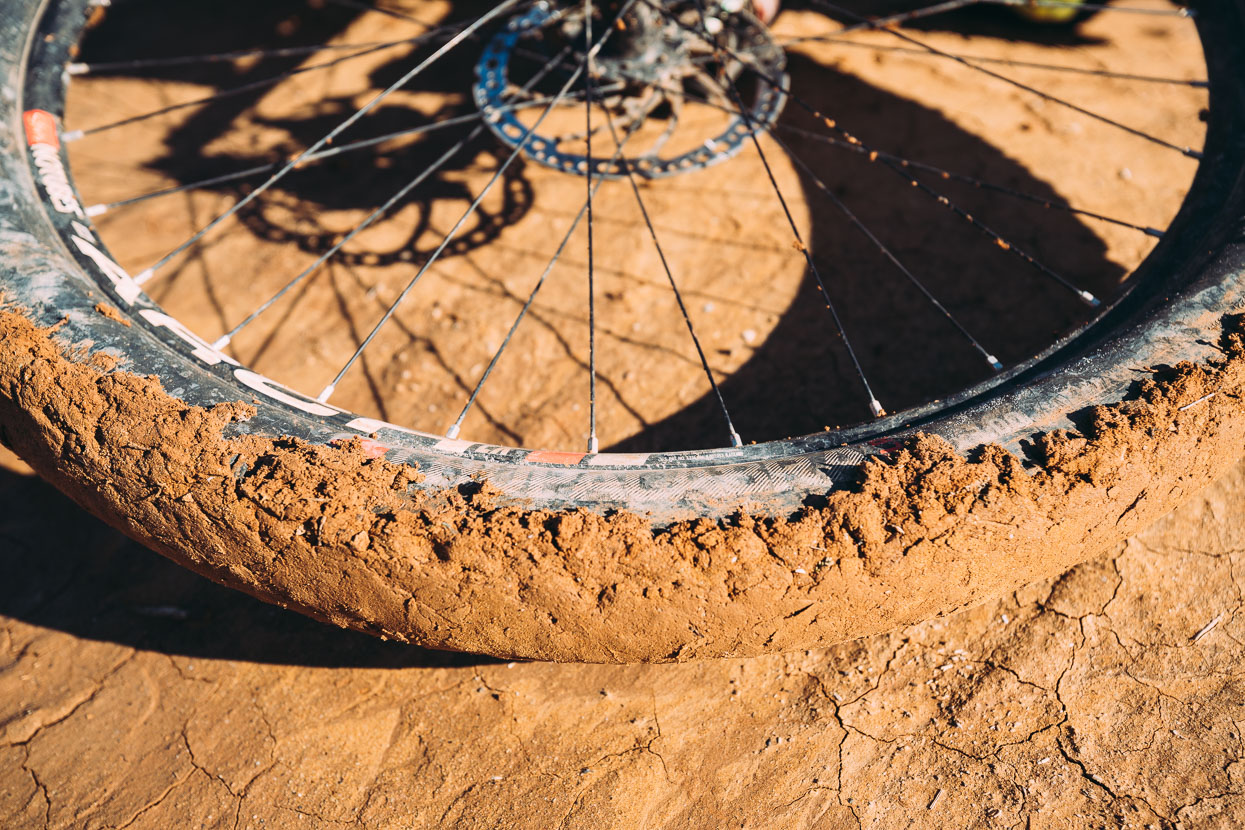
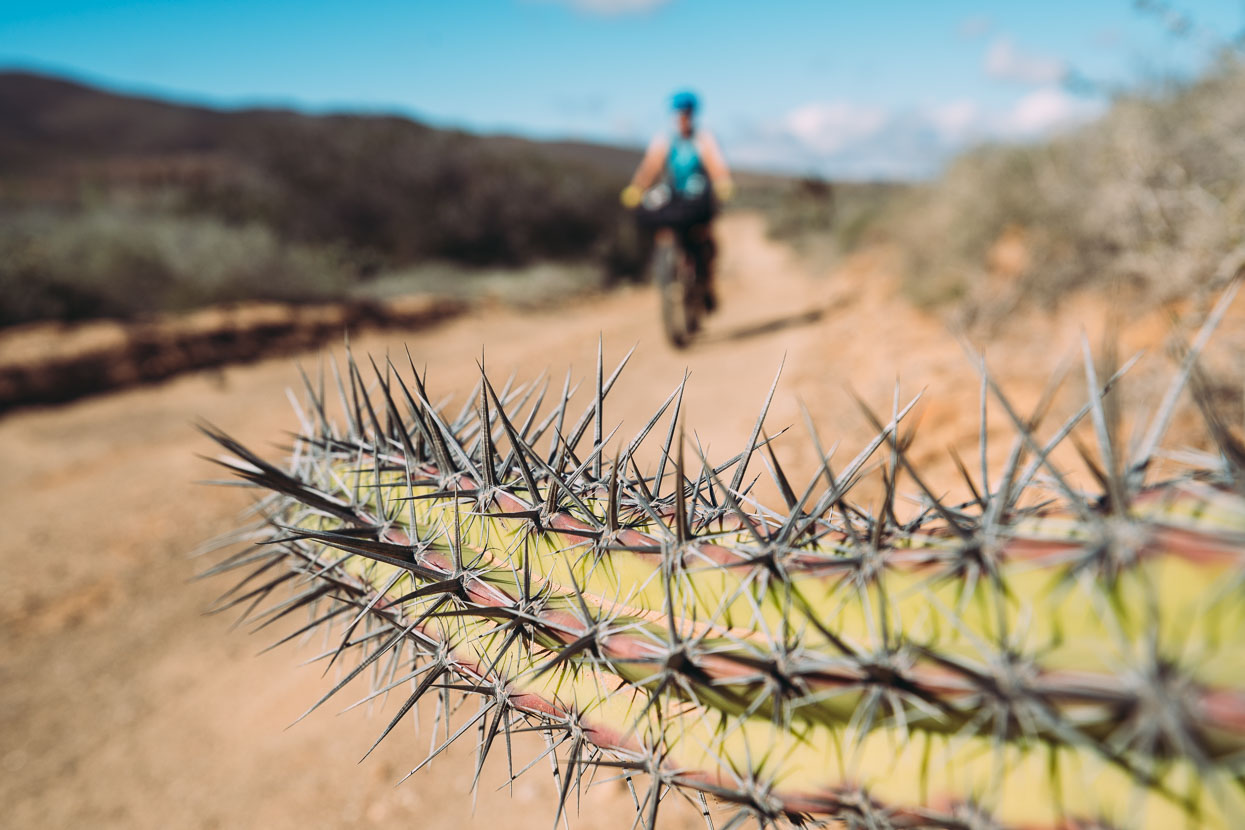
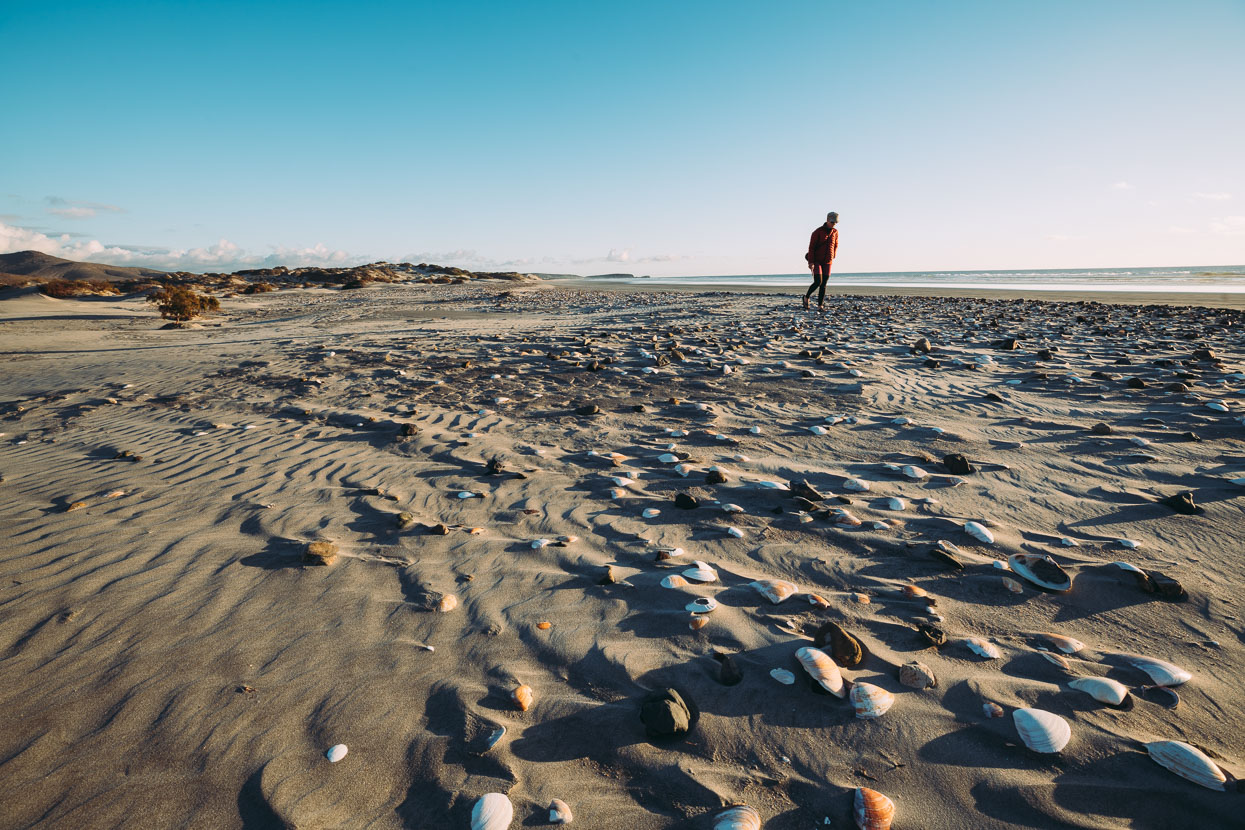
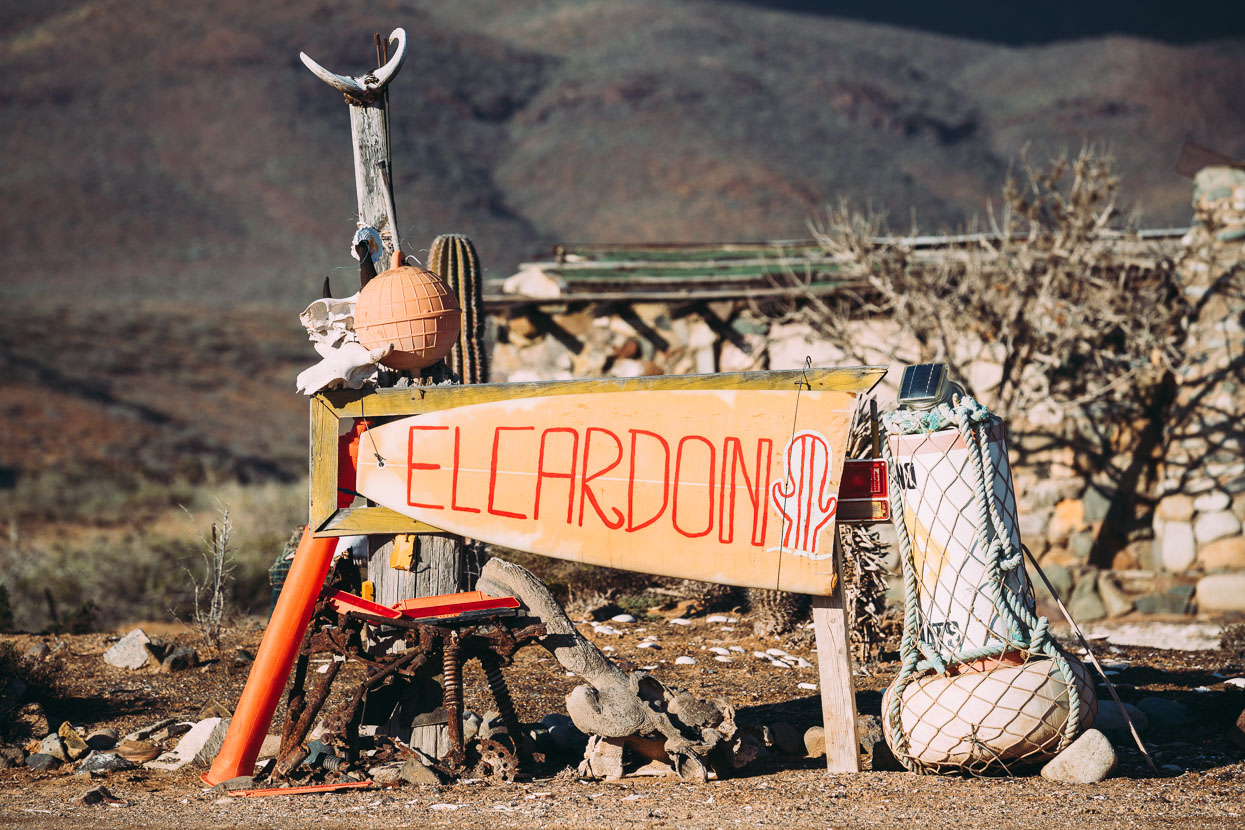
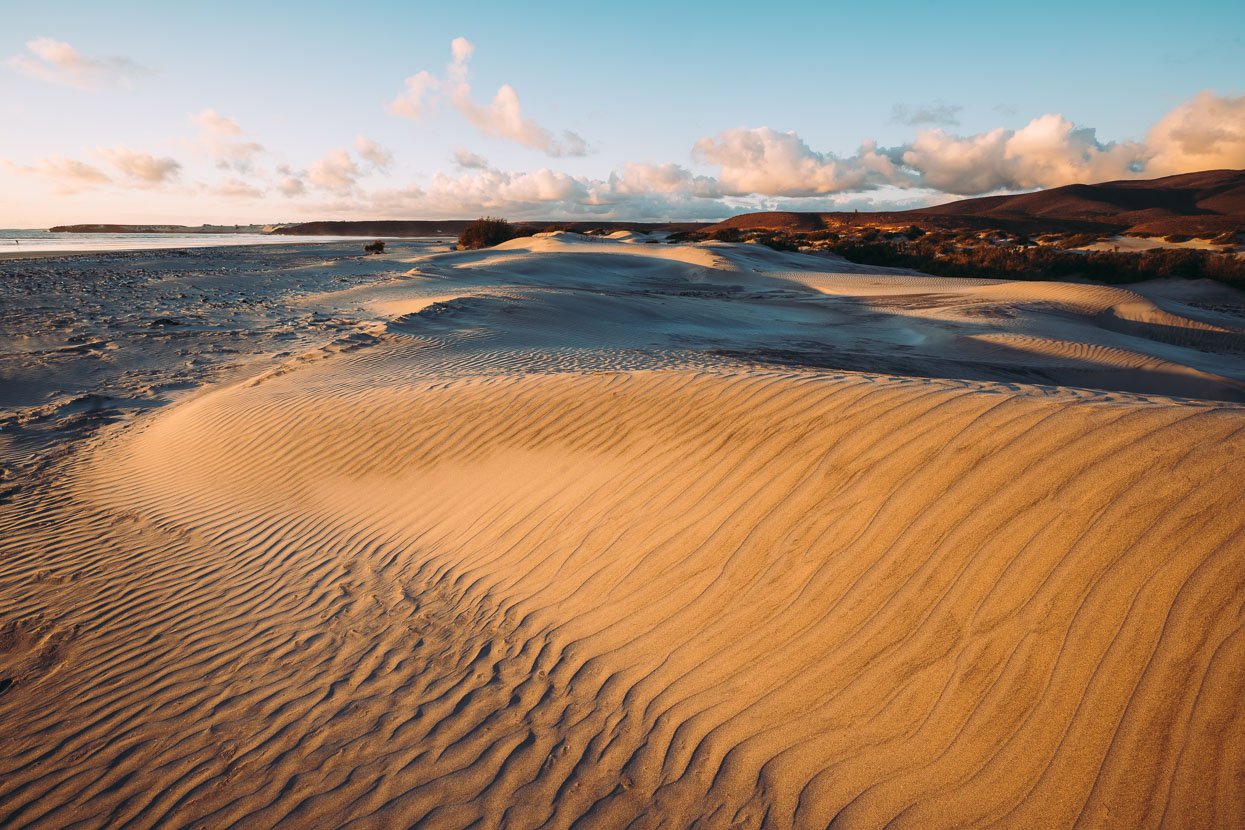
We spent New Years Eve camped at El Cardon, another popular surf spot. We found a quiet spot in the dunes and were asleep by 9pm! Unfortunately the wind kicked up during the night so we woke to a sandblasting and the crunch of sand as we ate breakfast. It drizzled a bit too. Our fly with no inner has been good in mild conditions, but when it’s really windy debris, dust and sand just blows right under it. We’re used to being filthy now.
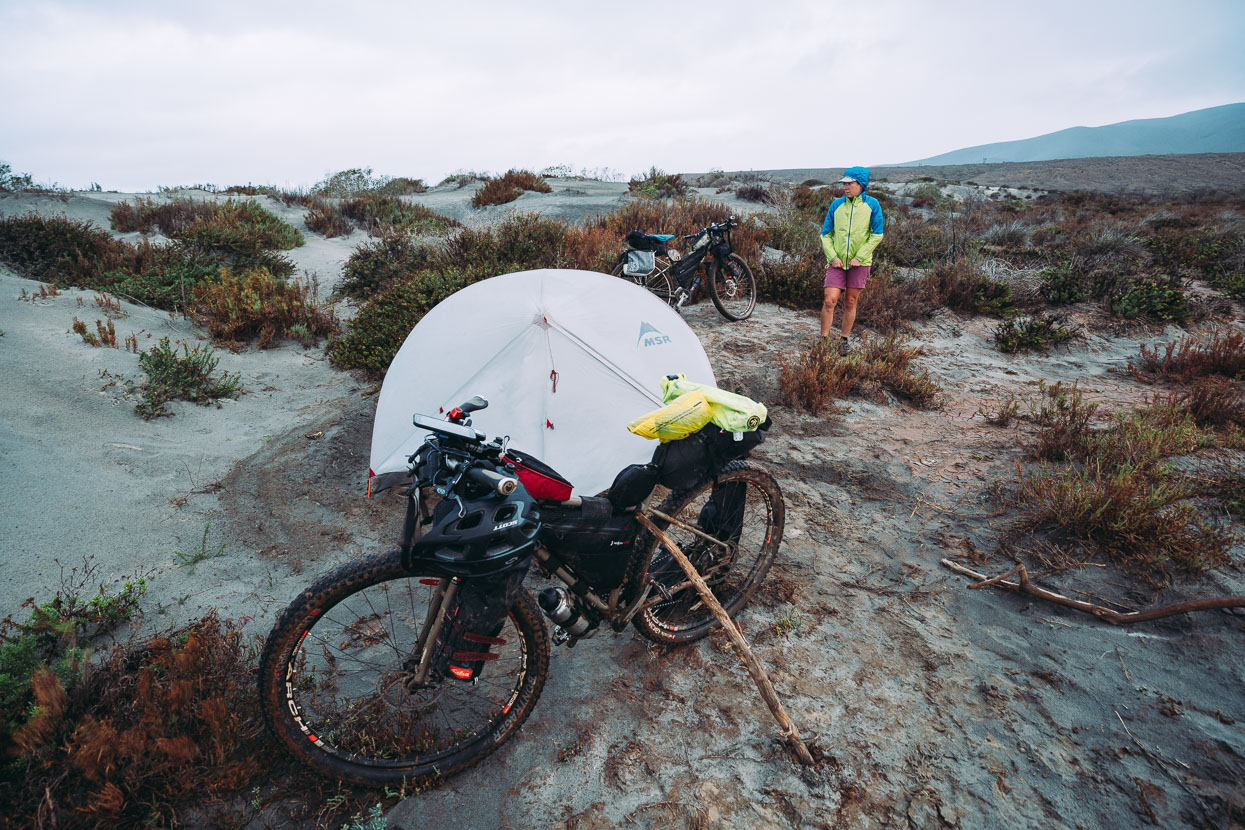
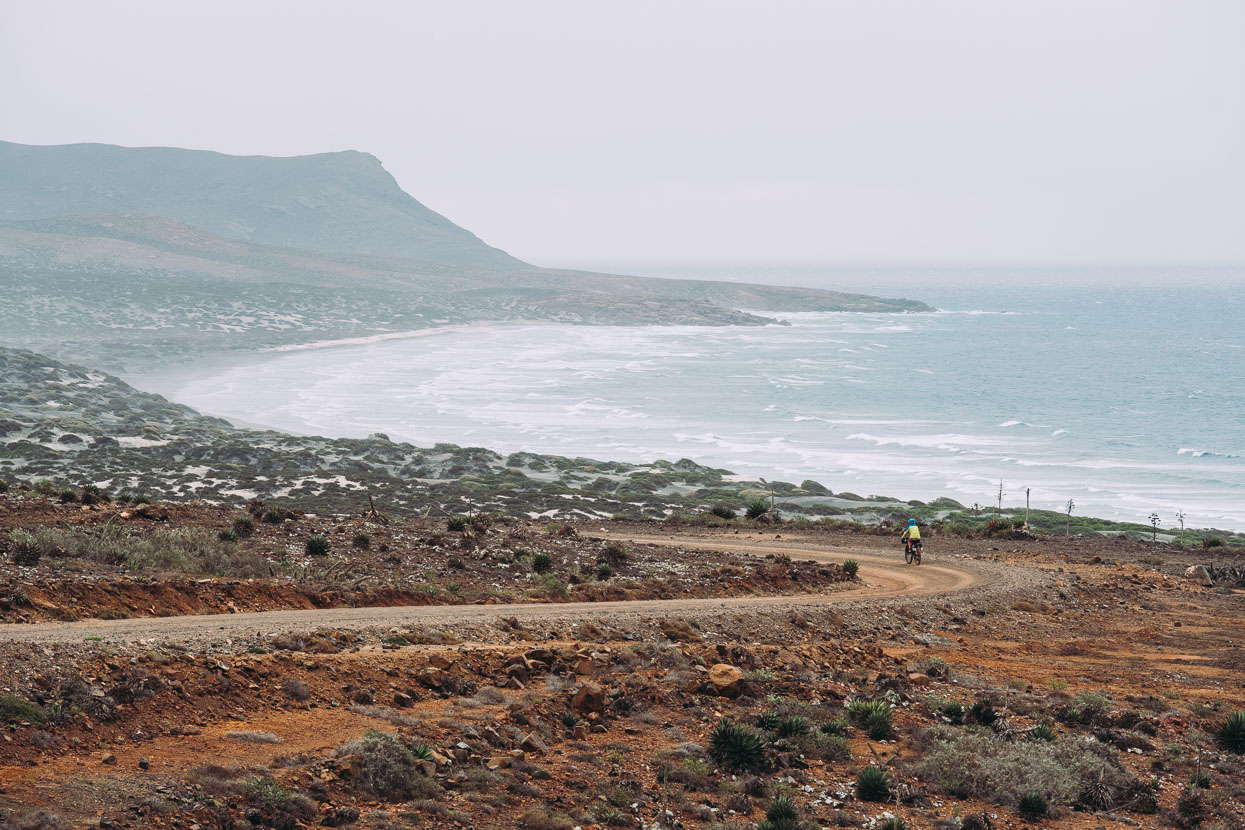
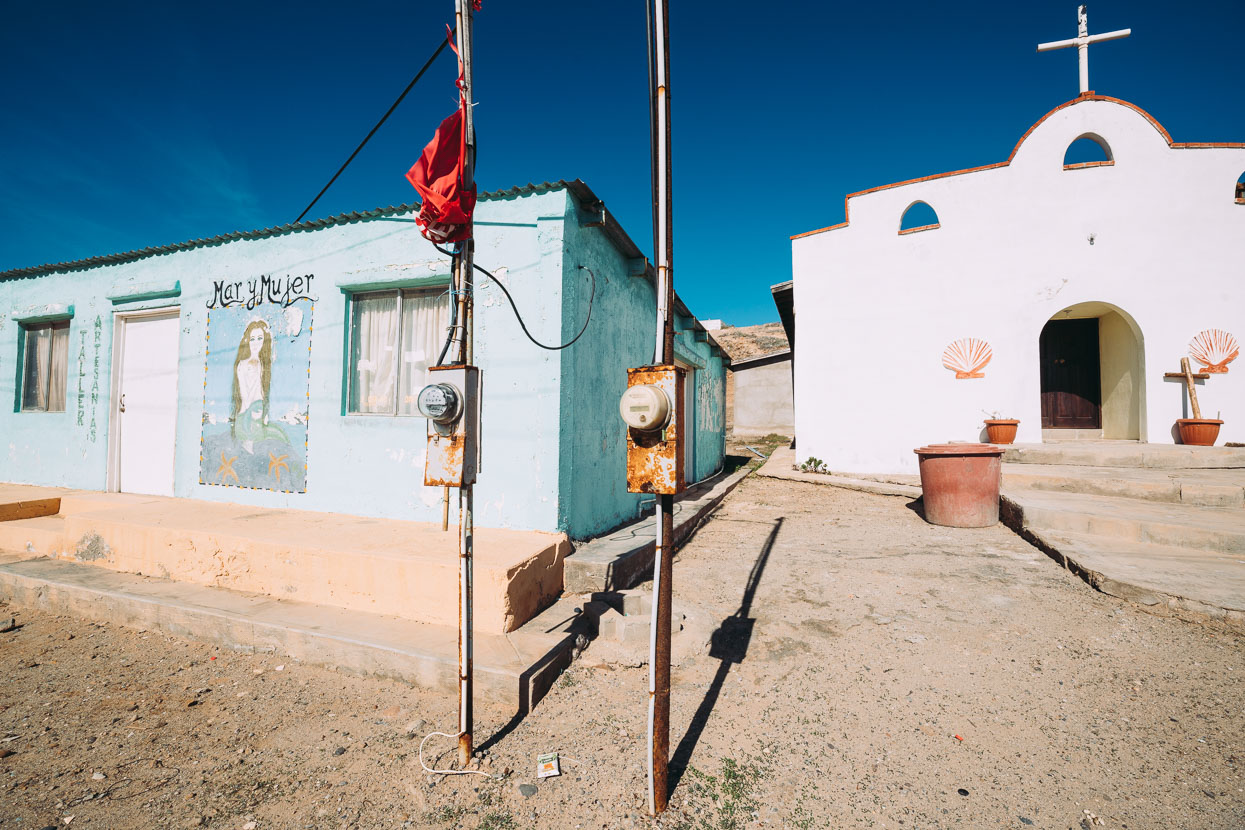
Santa Rosalillita. We arrived for lunch on New Years Day after a hideous ride into a headwind on the most washboarded road of the Baja. There’s no restaurant, but the nice lady in the shop made us a hot coffee and gave us some tamales.
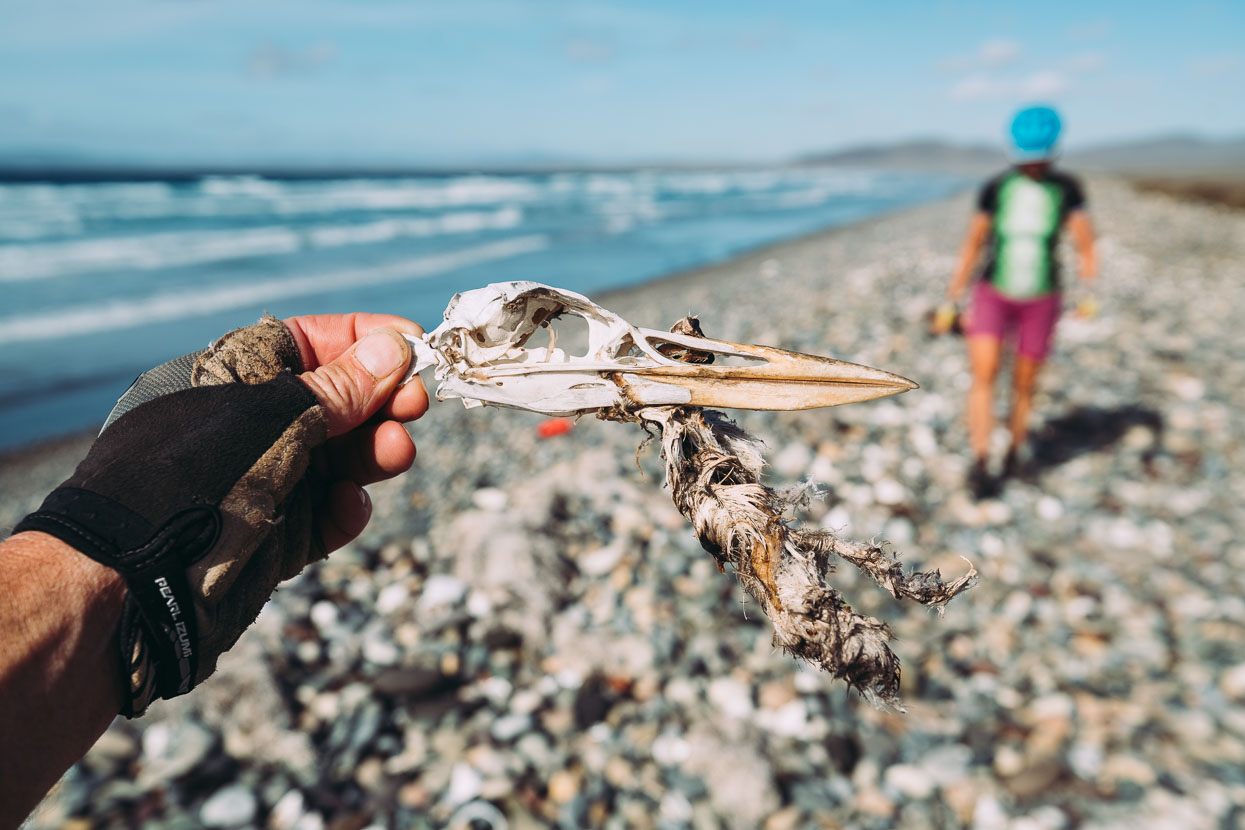
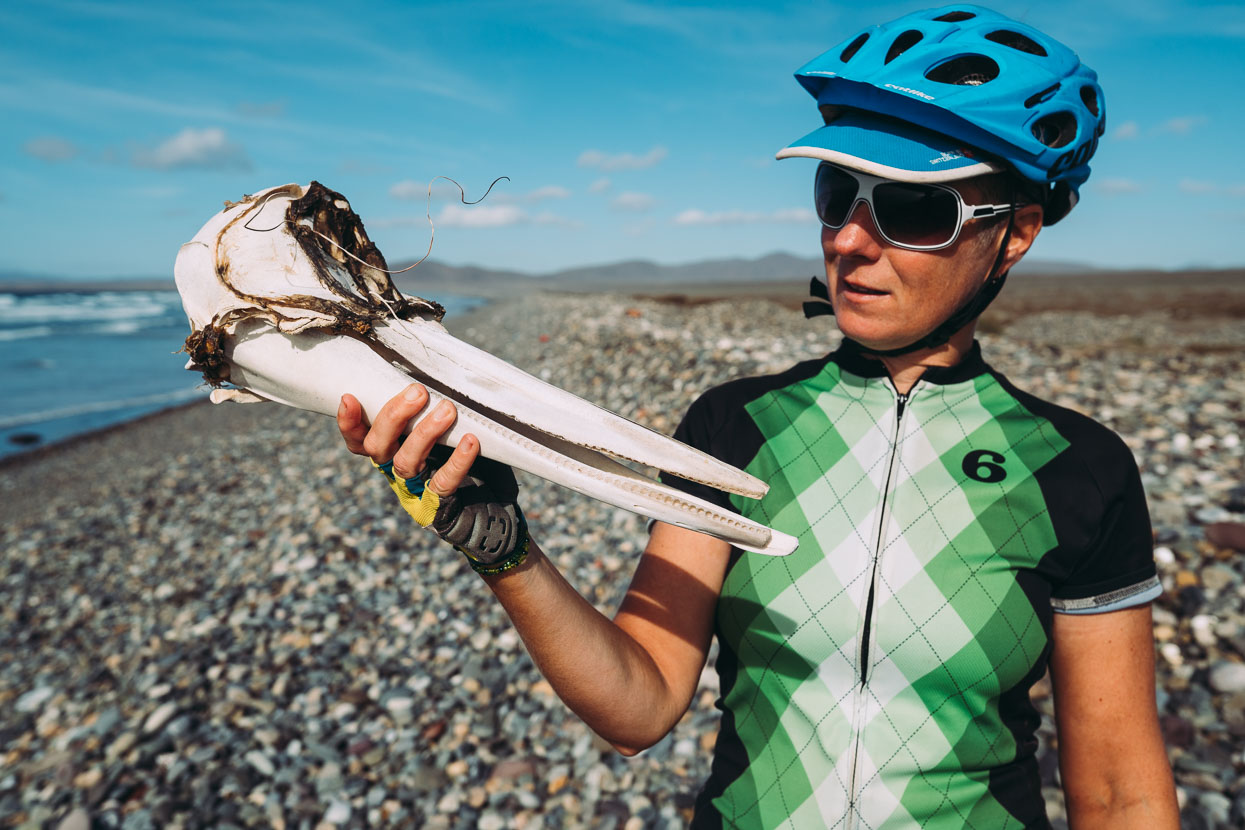
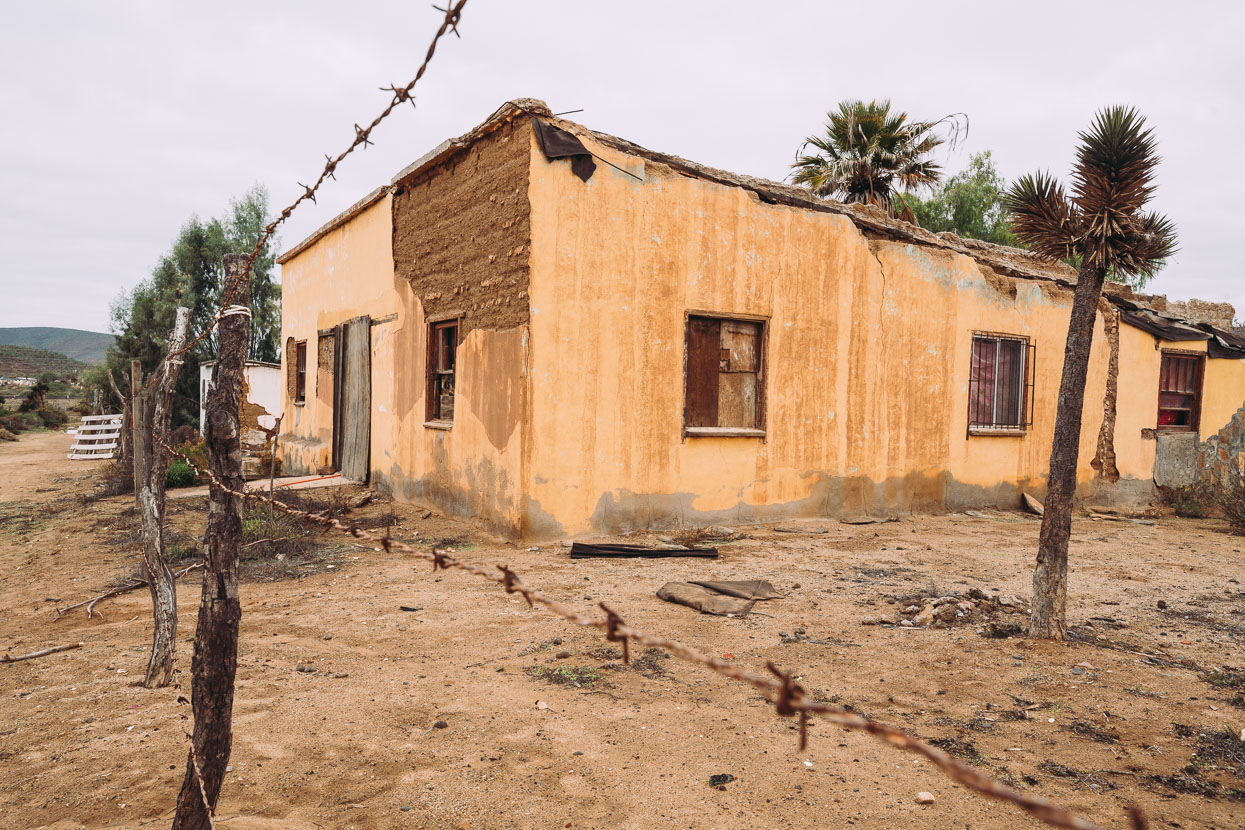
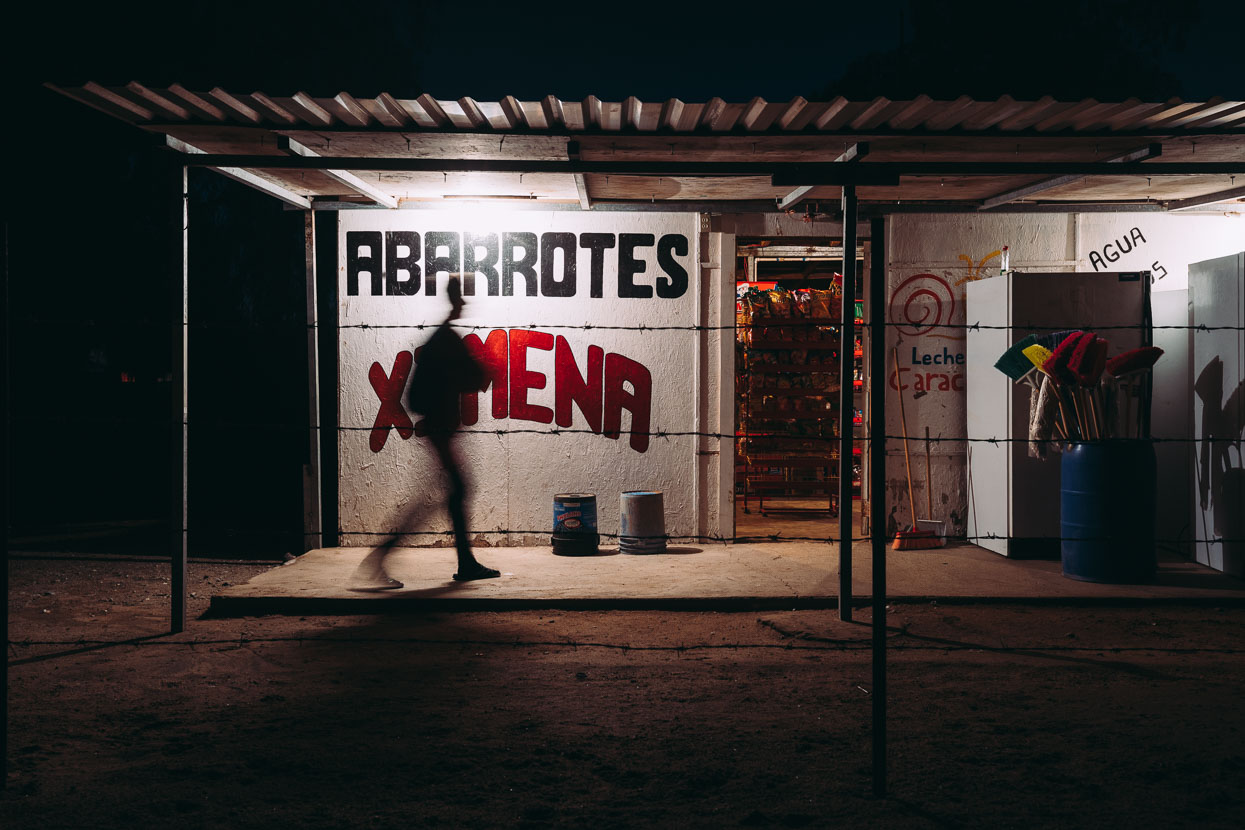
We were quite excited to be out to Rosarito on the Mex 1 highway later in the afternoon for a restaurant meal and a re-stock at the trio of tiny stores in town.
The next day we did a shorter ride to Misión San Francisco Borja out in the middle of the desert between the highway and the Sea of Cortez. This site was established by the Spanish in 1762 at a Cochimi Indian settlement, but was eventually abandoned in 1818 after the local population was ravaged by European-introduced diseases and disappeared. A 6th generation family still live on this remote site and care for the mision and were happy to show us around for a donation. Nearby hot pools, water and shade made it an attractive place for us to camp for the night under their palapas (not cheap at 150 pesos p/p, but a unique place).
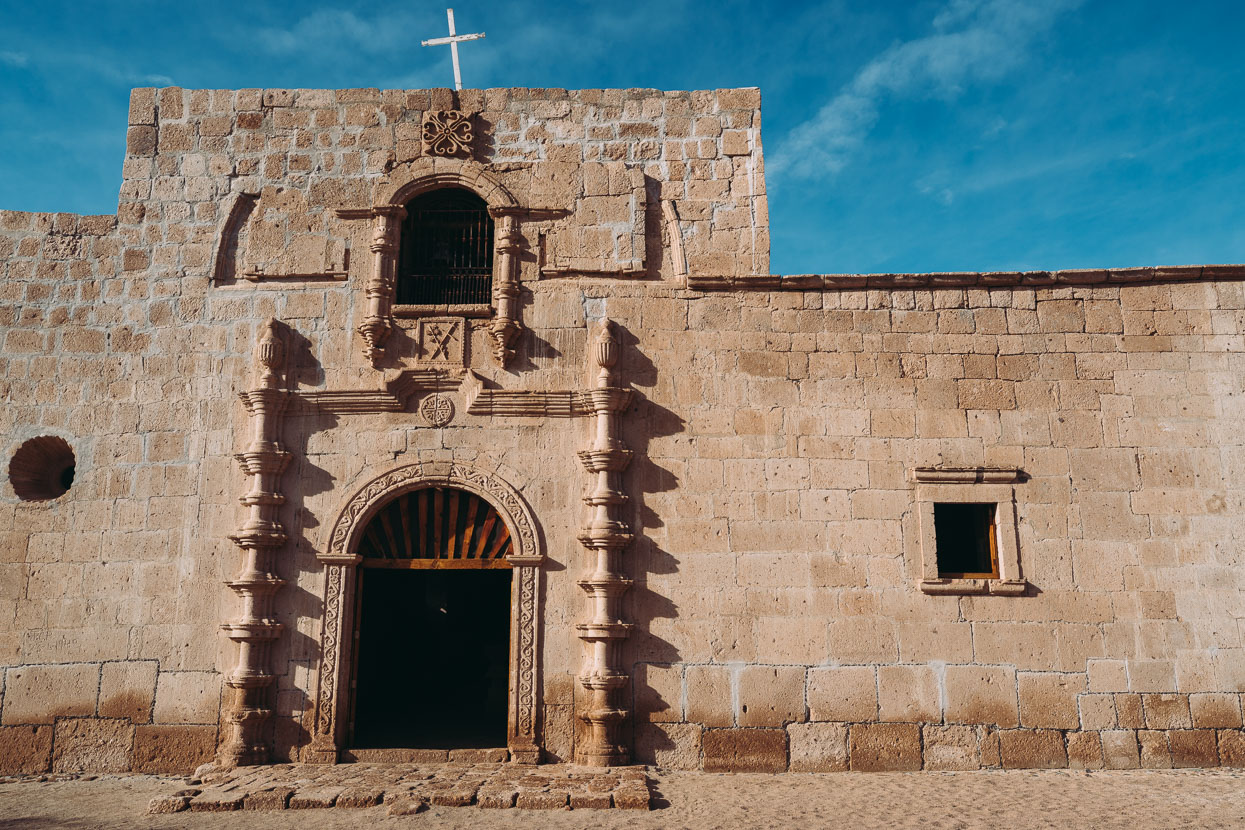
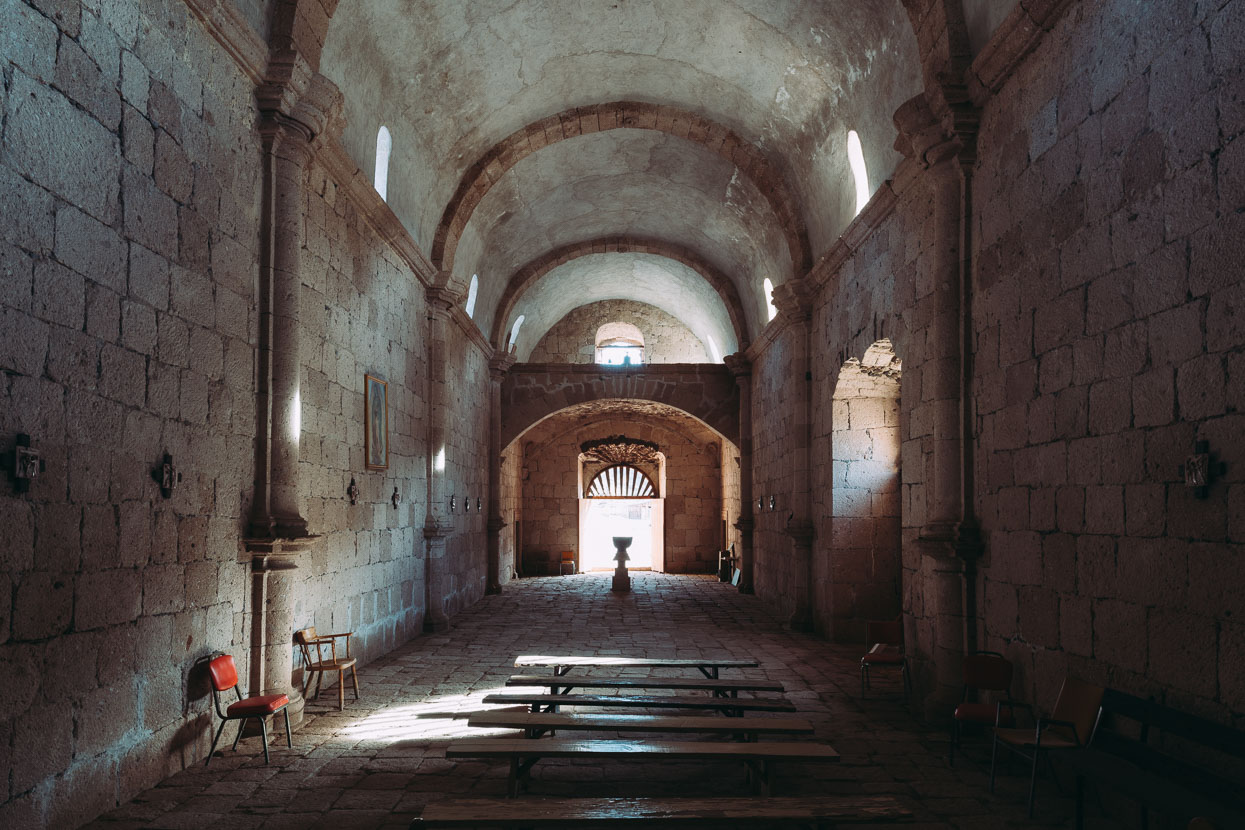
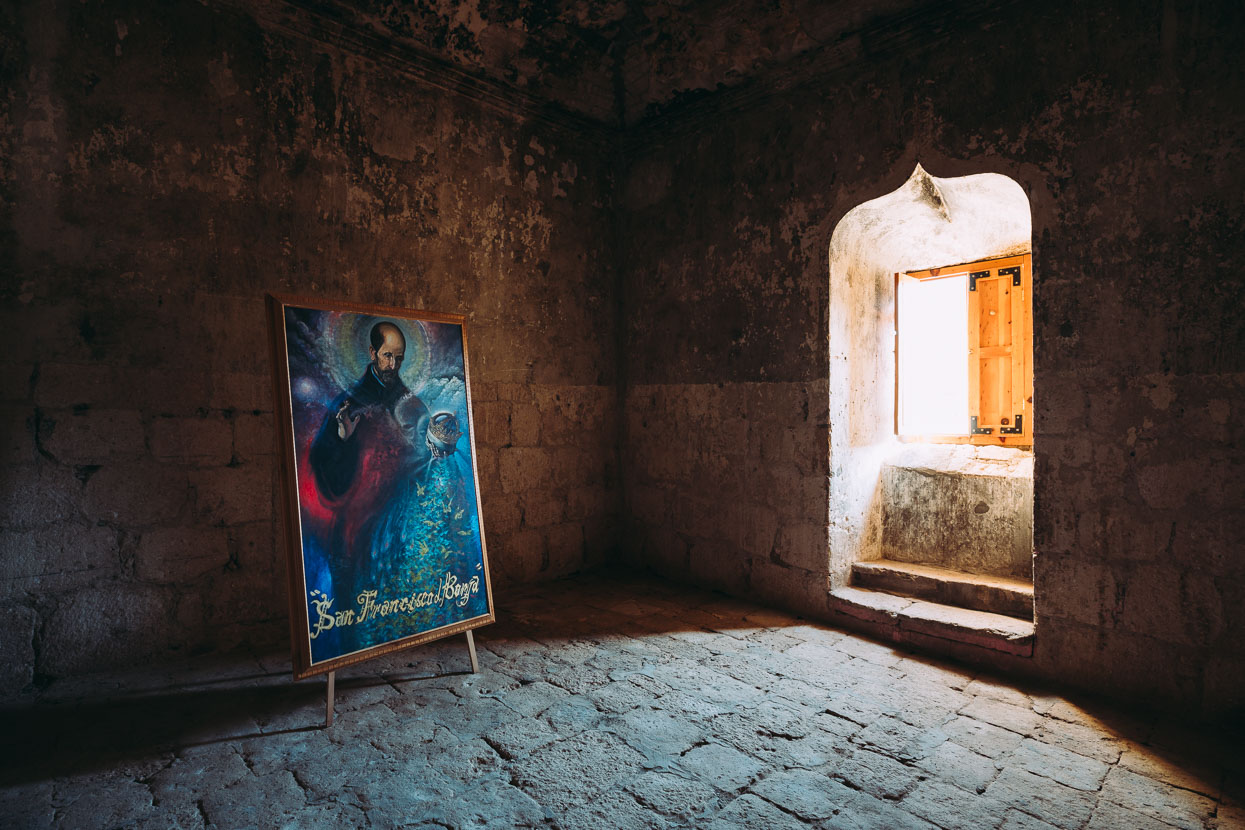
In the evening I scrambled up the hills behind the mision for a view over the site and the valley we’d ridden in from.
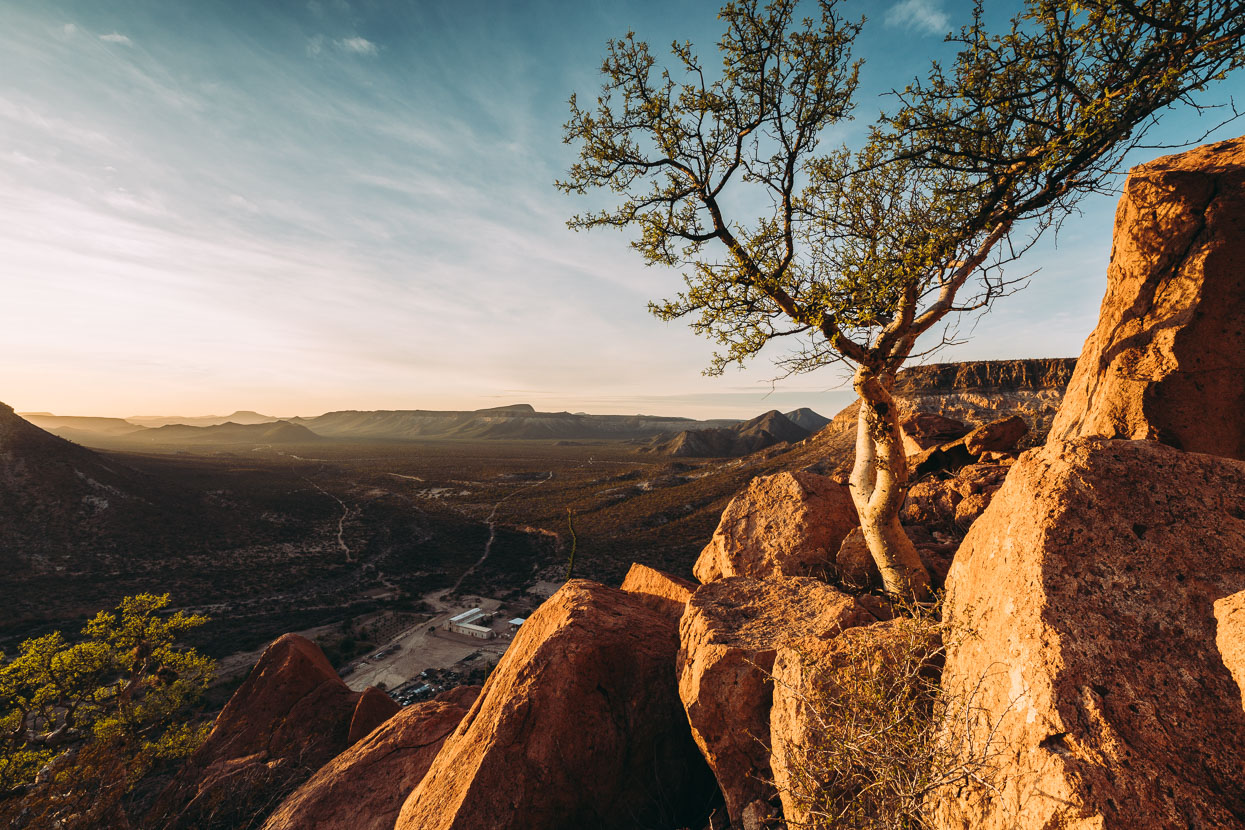
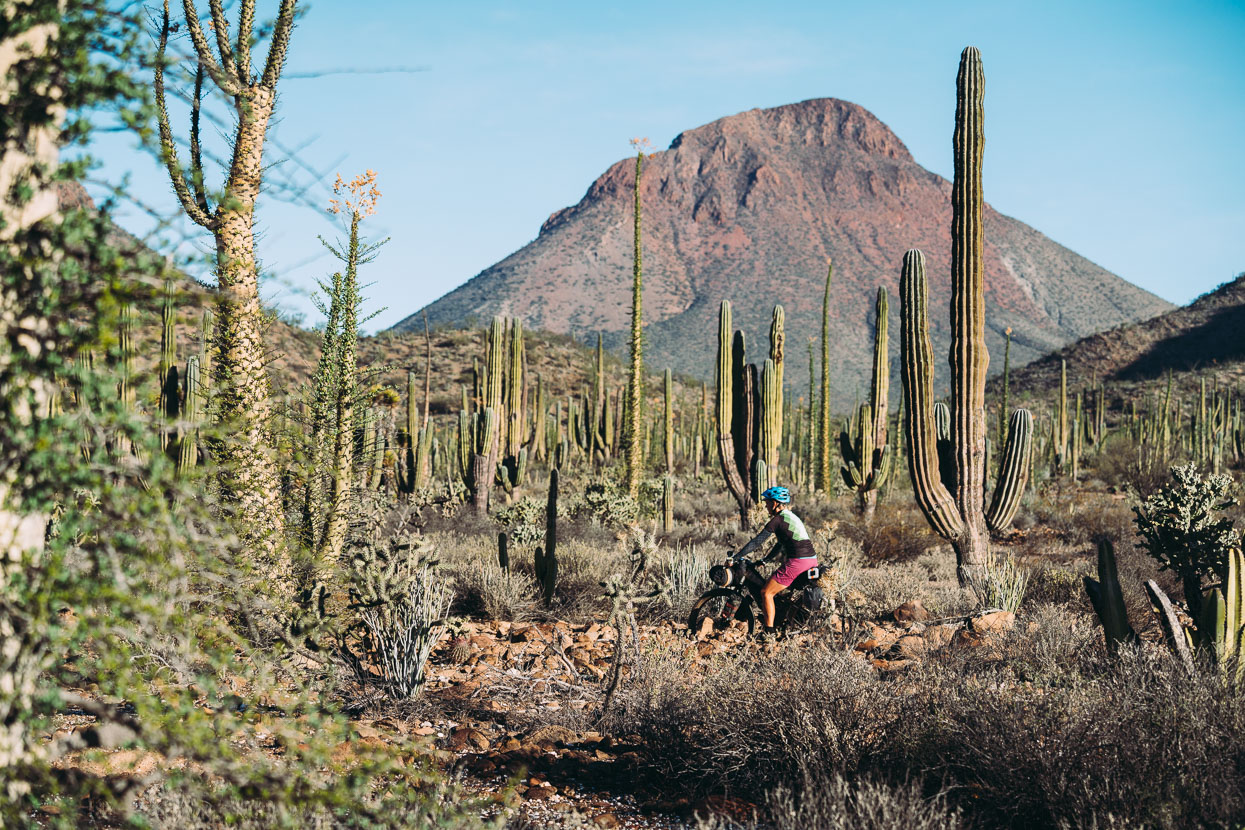
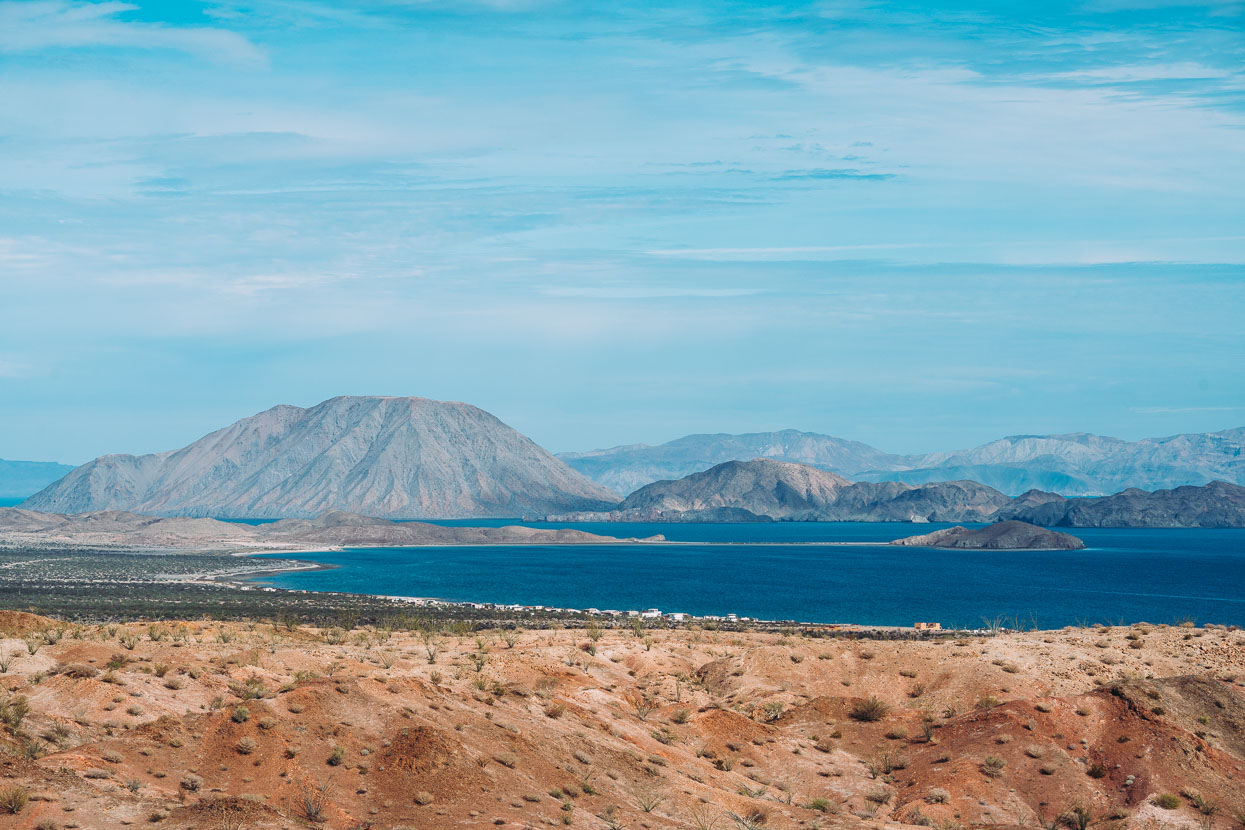
The surreal first view of Bahia de los Angeles (Bay of the Angels) and its scattered islands. As we left the highlands surrounding the mision site the landscape became ever more barren.
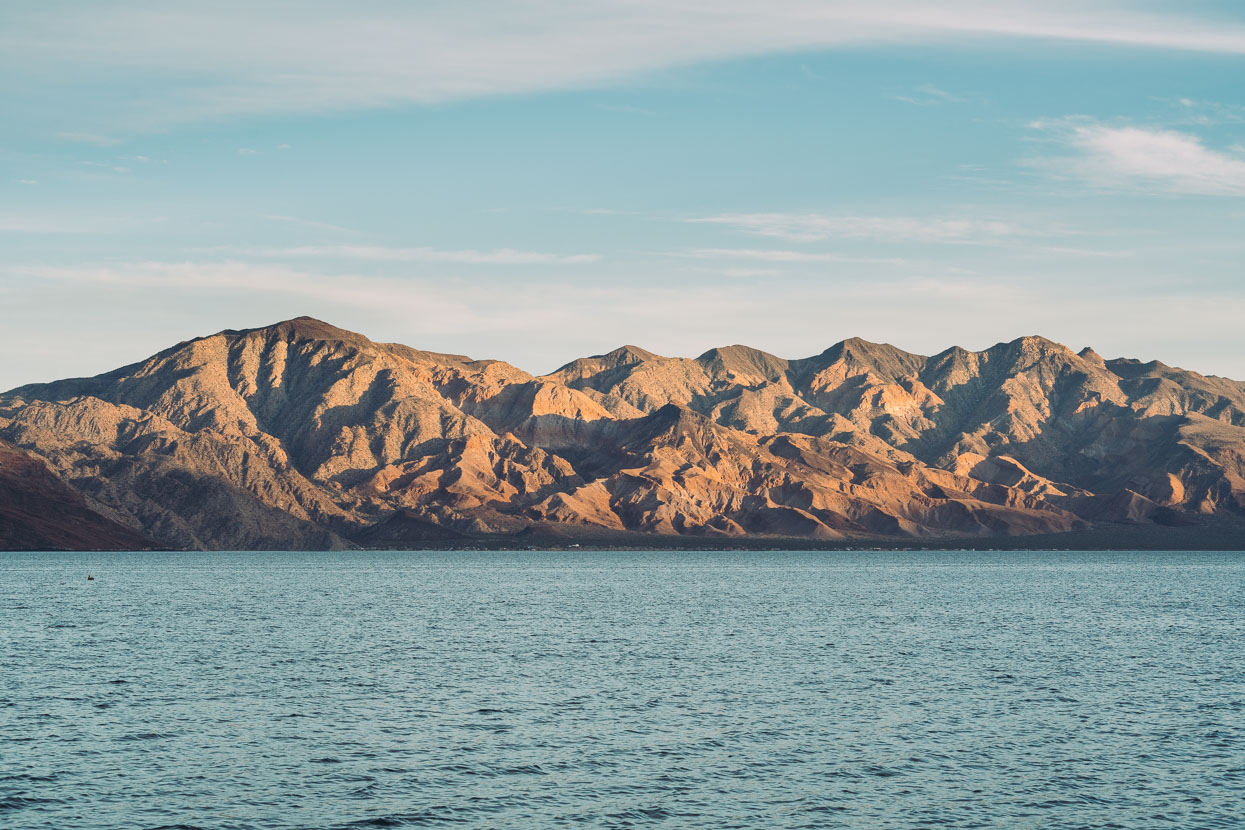
We took our first rest day in 9 days in Bahia de los Angeles, enjoying this remote fishing village that’s also a low-key tourist town. There was a choice of food finally, some patchy internet and a handful of gringos to chat to.
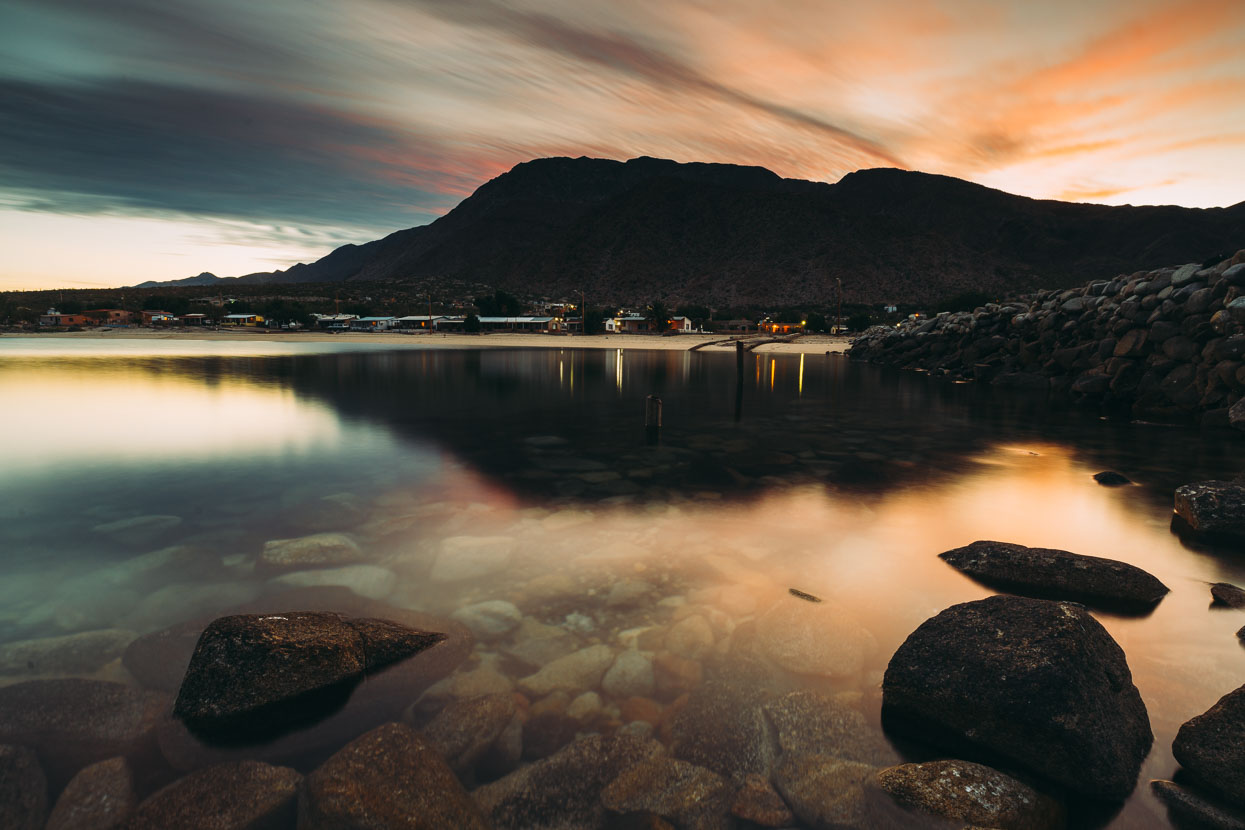
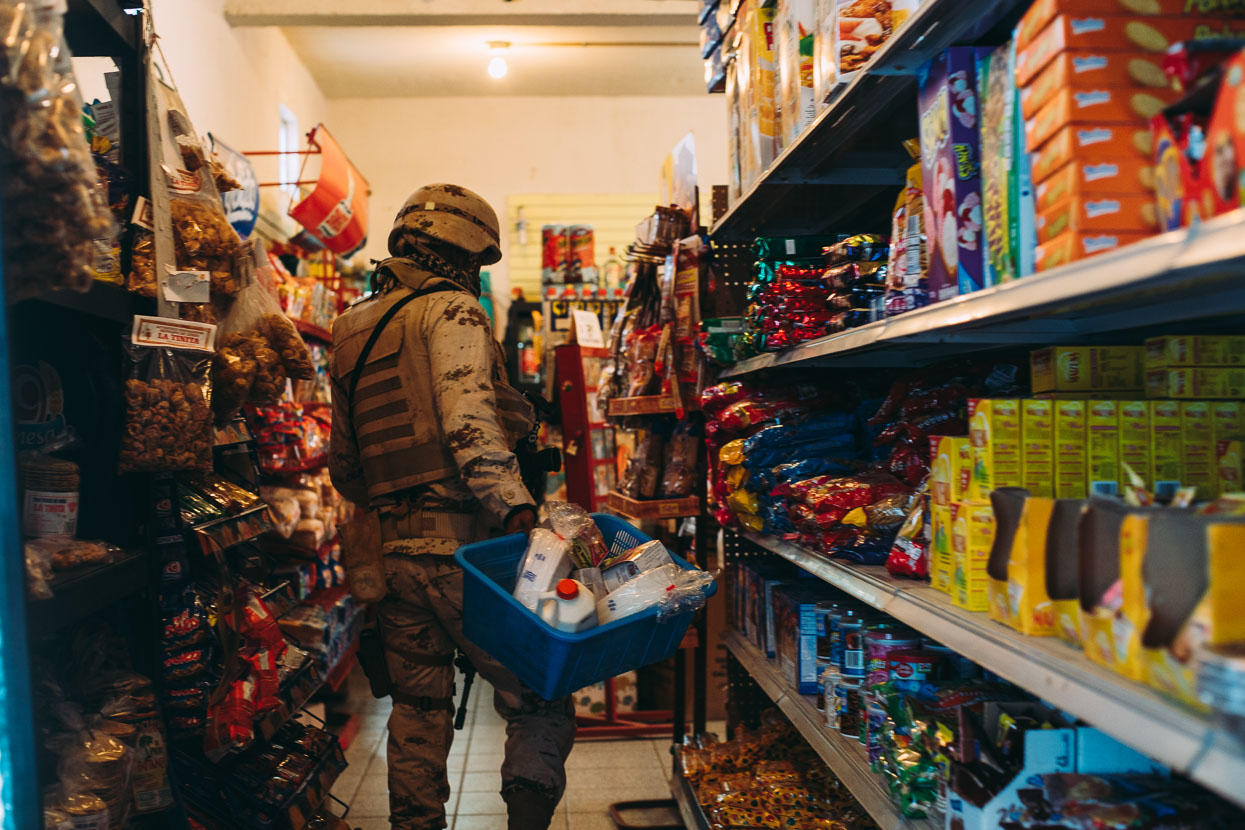
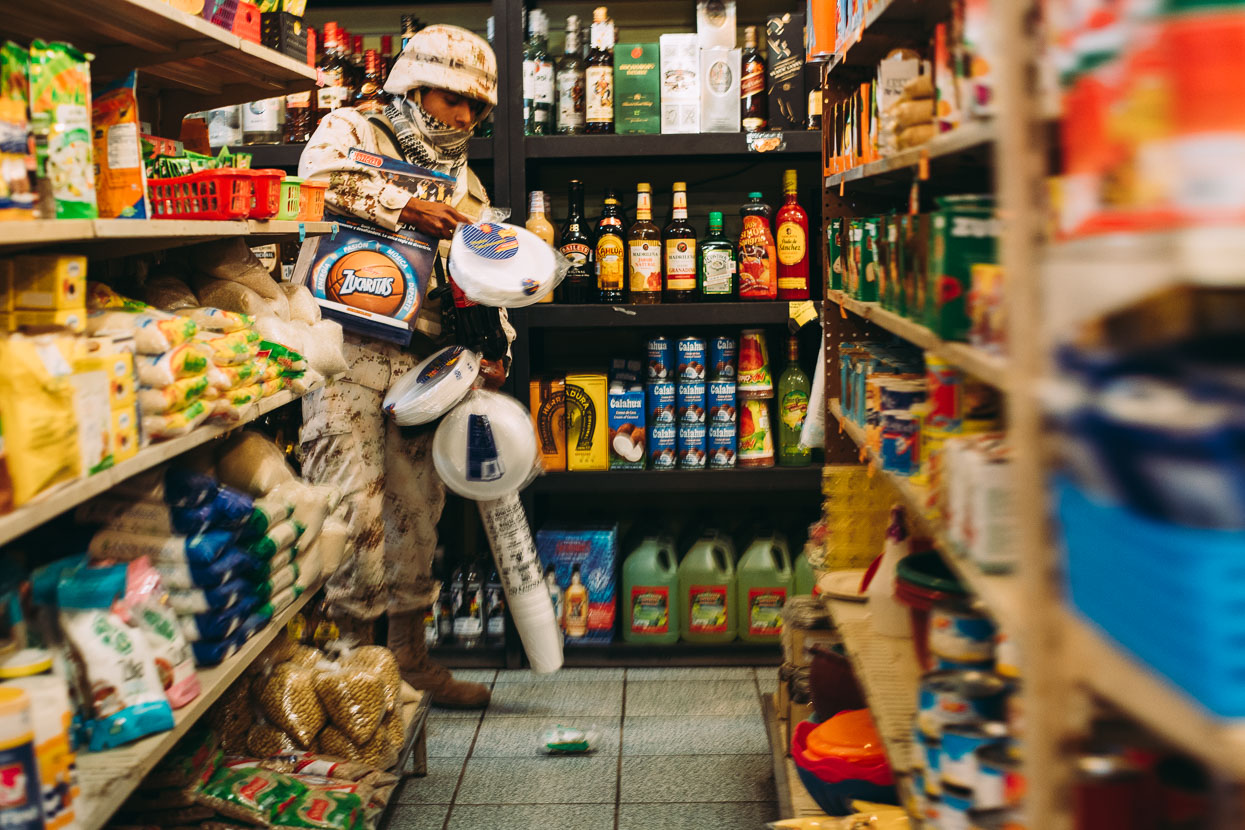
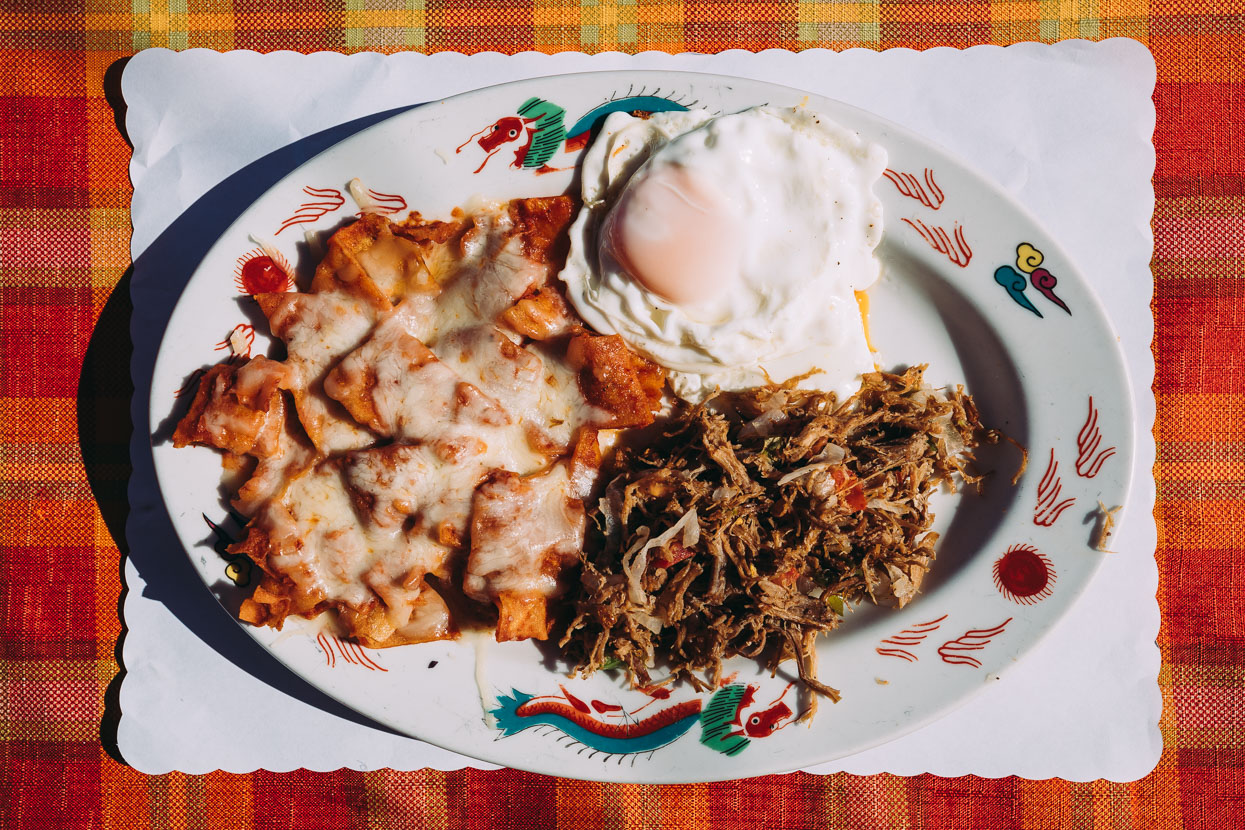
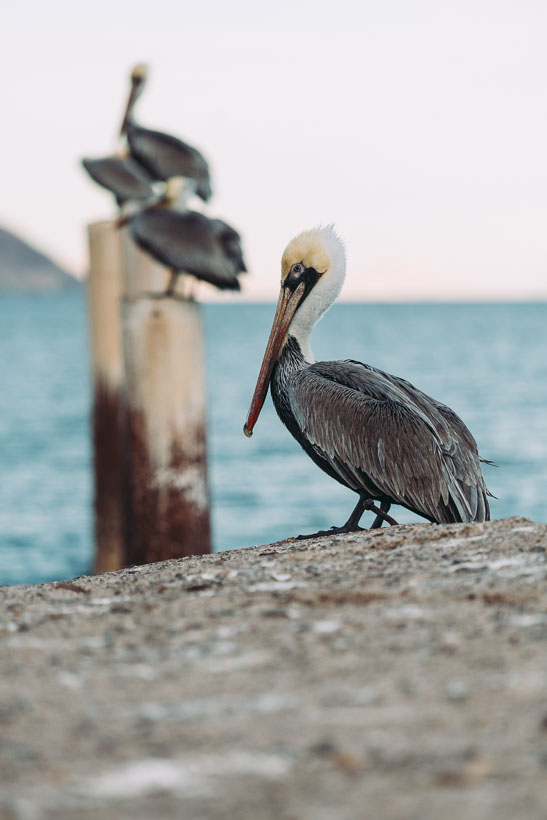
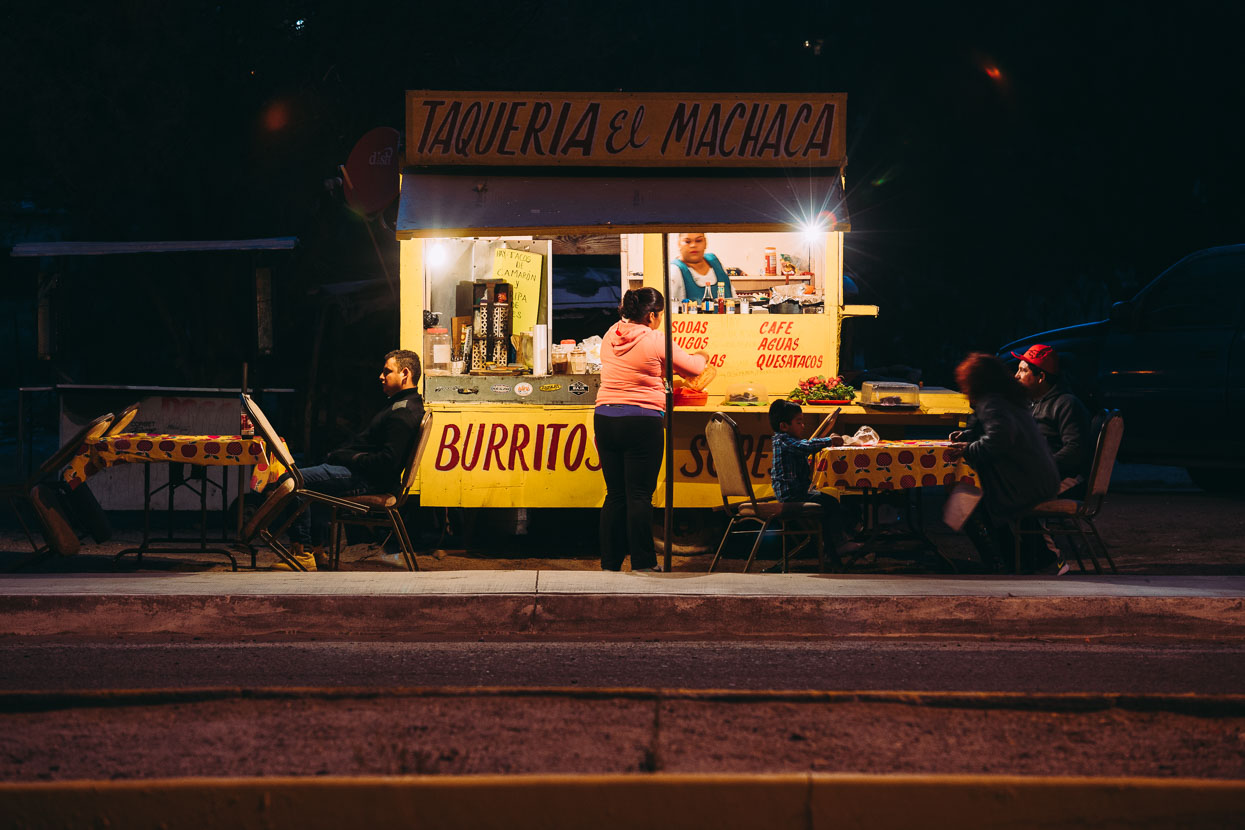
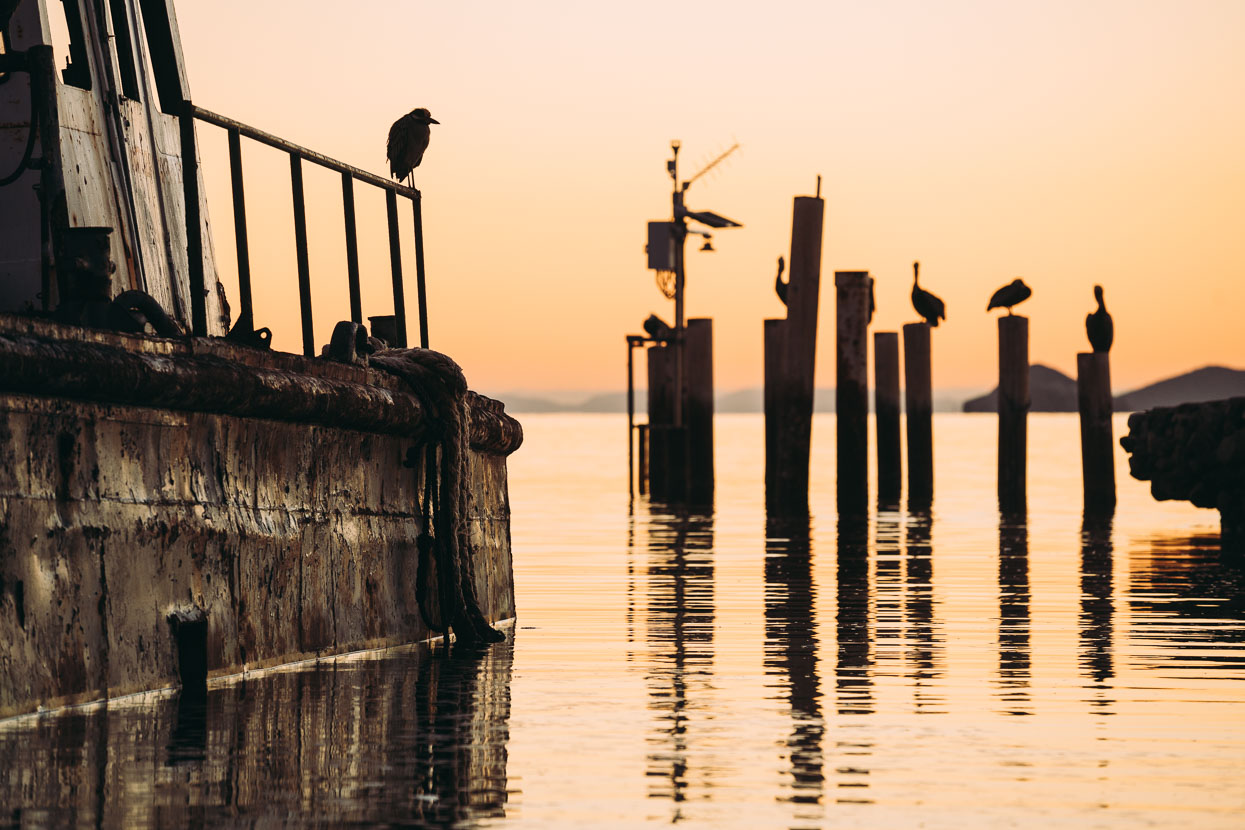
Thanks for reading. More Baja coming in future posts, including some comments on gear choices: what worked, what didn’t, what broke.

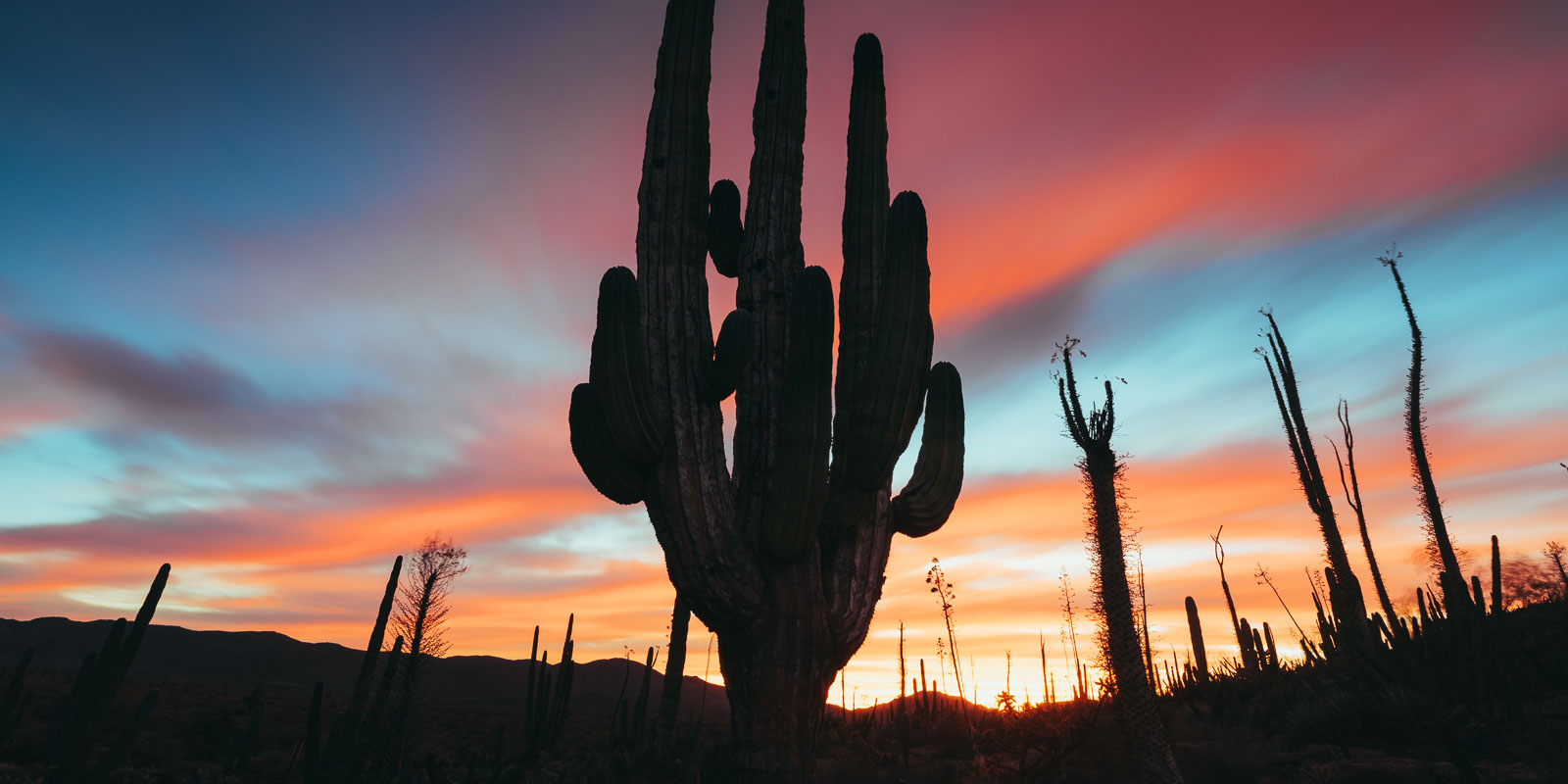







Nice one Mark – well done…..looking forward to your next blog post….
Happy riding through Mexico !
Cheers Heike
Thanks Heike – likewise – always enjoy your posts…
Absolutely love the photos, so atmospheric!
Thanks Grace – it’s an amazing ride.
Thanks for the great write-up and awesome photos. Did you feel safe the whole time?
Hi Magda – yep felt safe the whole time. No dubious characters seen and plenty of friendly people. Low police/military presence compared to other parts of Mexico.
Stunning photos and quite a joy to read, as always! Thanks.
Nice! It was good to meet you two on 1! Great photos!!!
Thanks Bill! Likewise – hope you had a great ride. We have enjoyed checking out all the misions along the route!
Wow! This looks like a bit of heaven. Thanks for sharing
Excited Mark to see this Baja post as it is on the to do list. As always awesome pics and write up.
Thanks Jo – glad you enjoyed!
Awesome!!! If you came or pass trough Guadalajara and need any kind of help please feel free to contact me!!
Thanks Mauricio! At the moment we are in Durango, headed south soon. We probably won’t go through Guadalajara at this stage, but if we change plans… Thanks for the offer 🙂